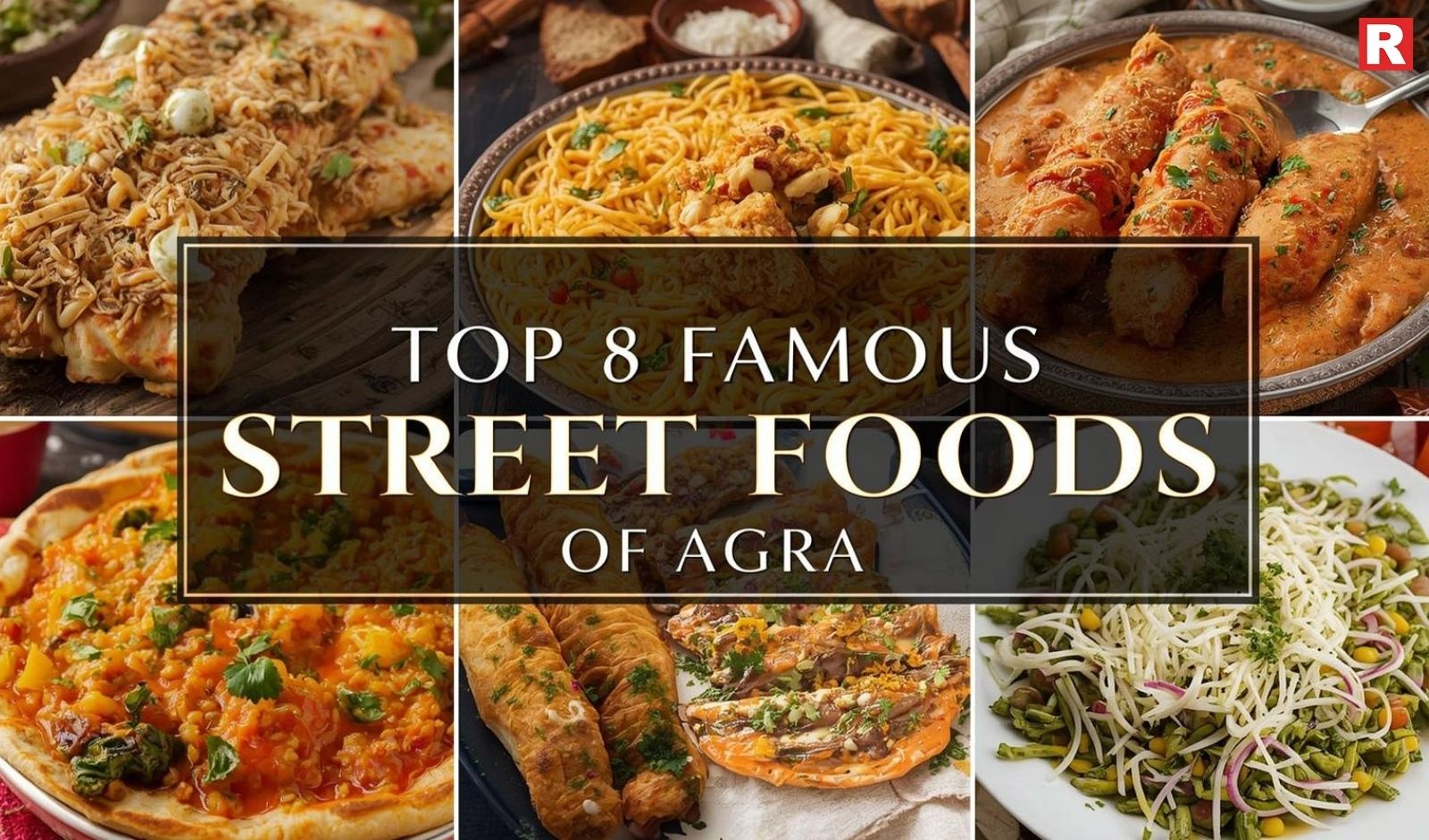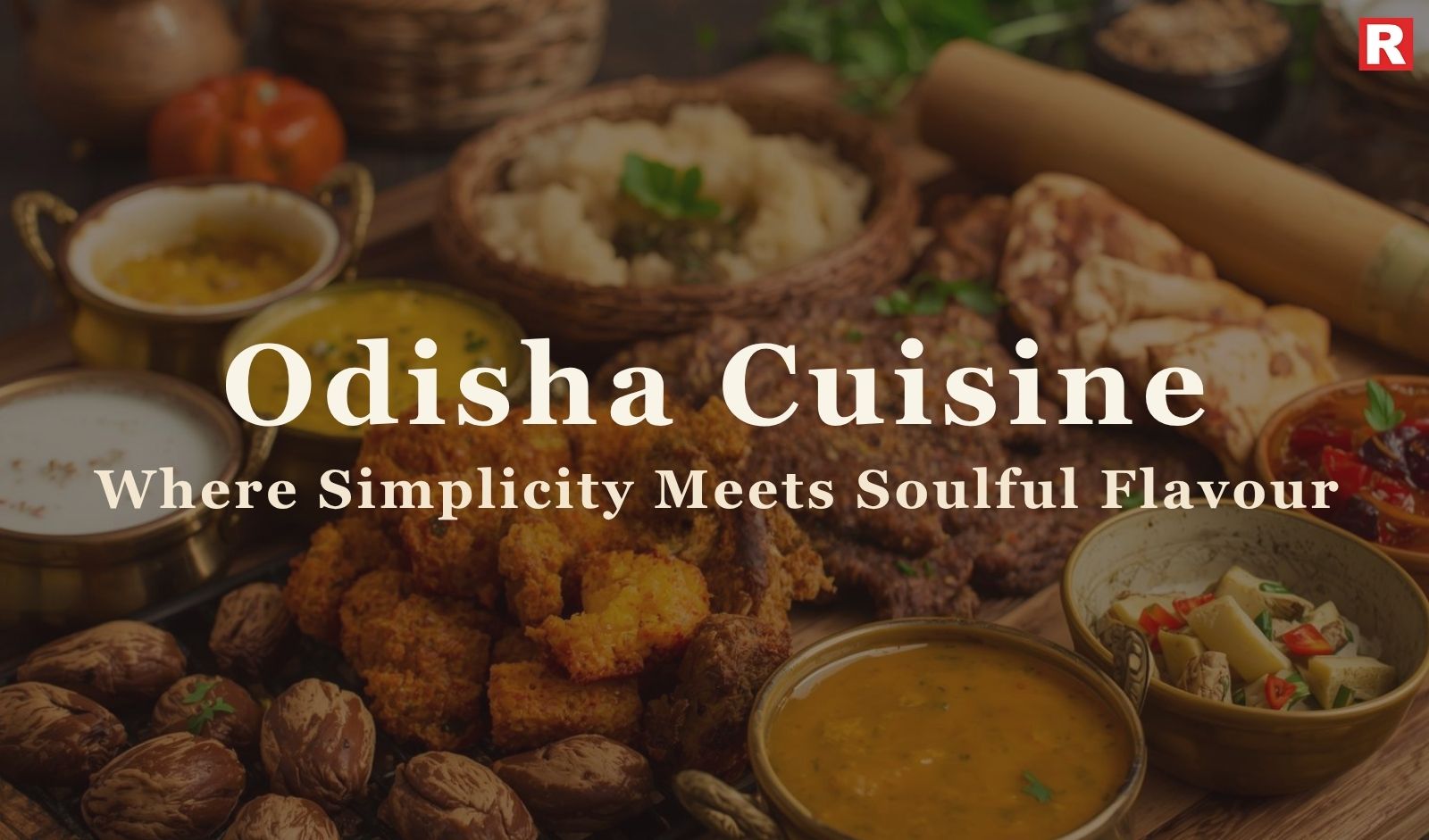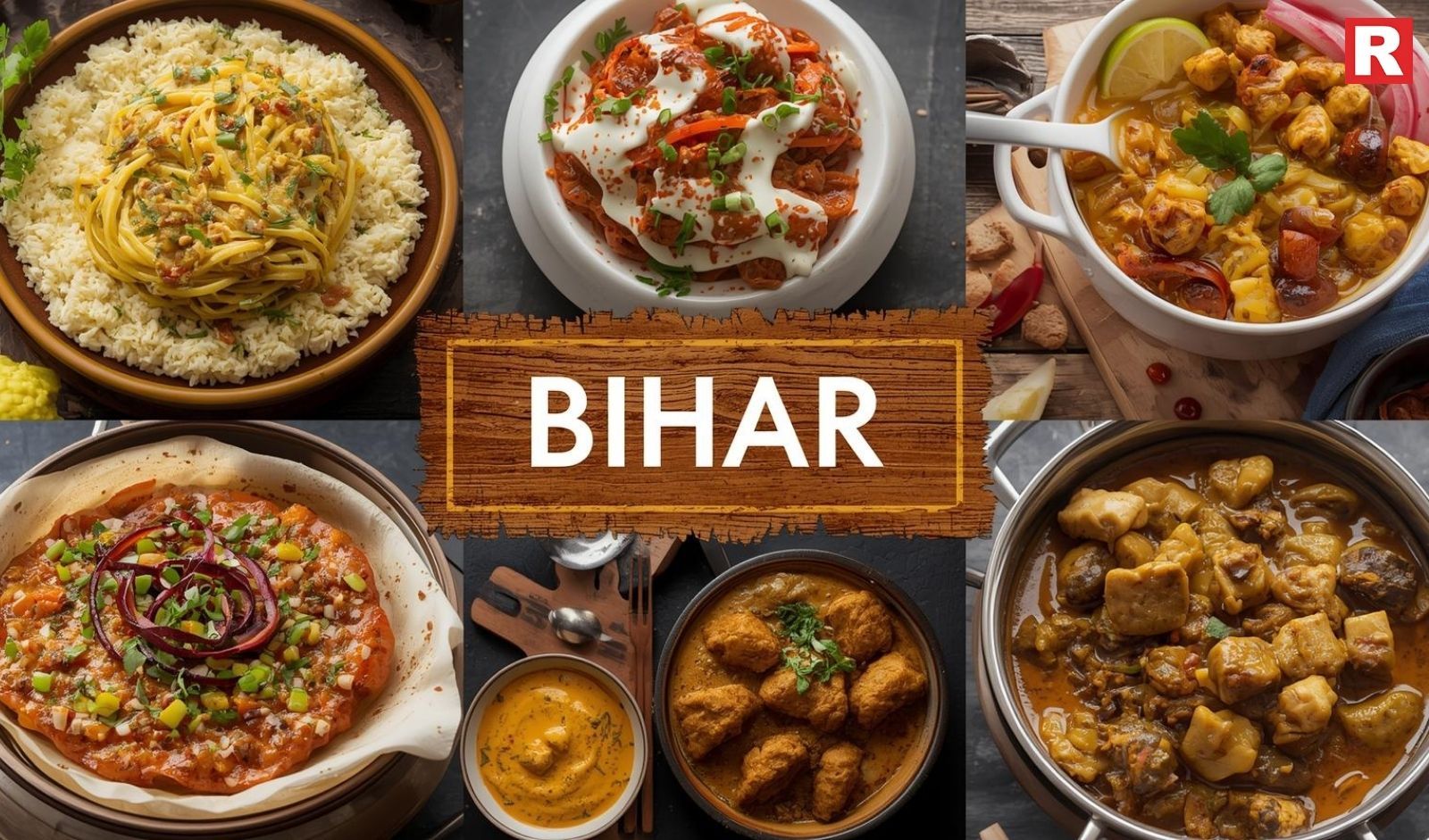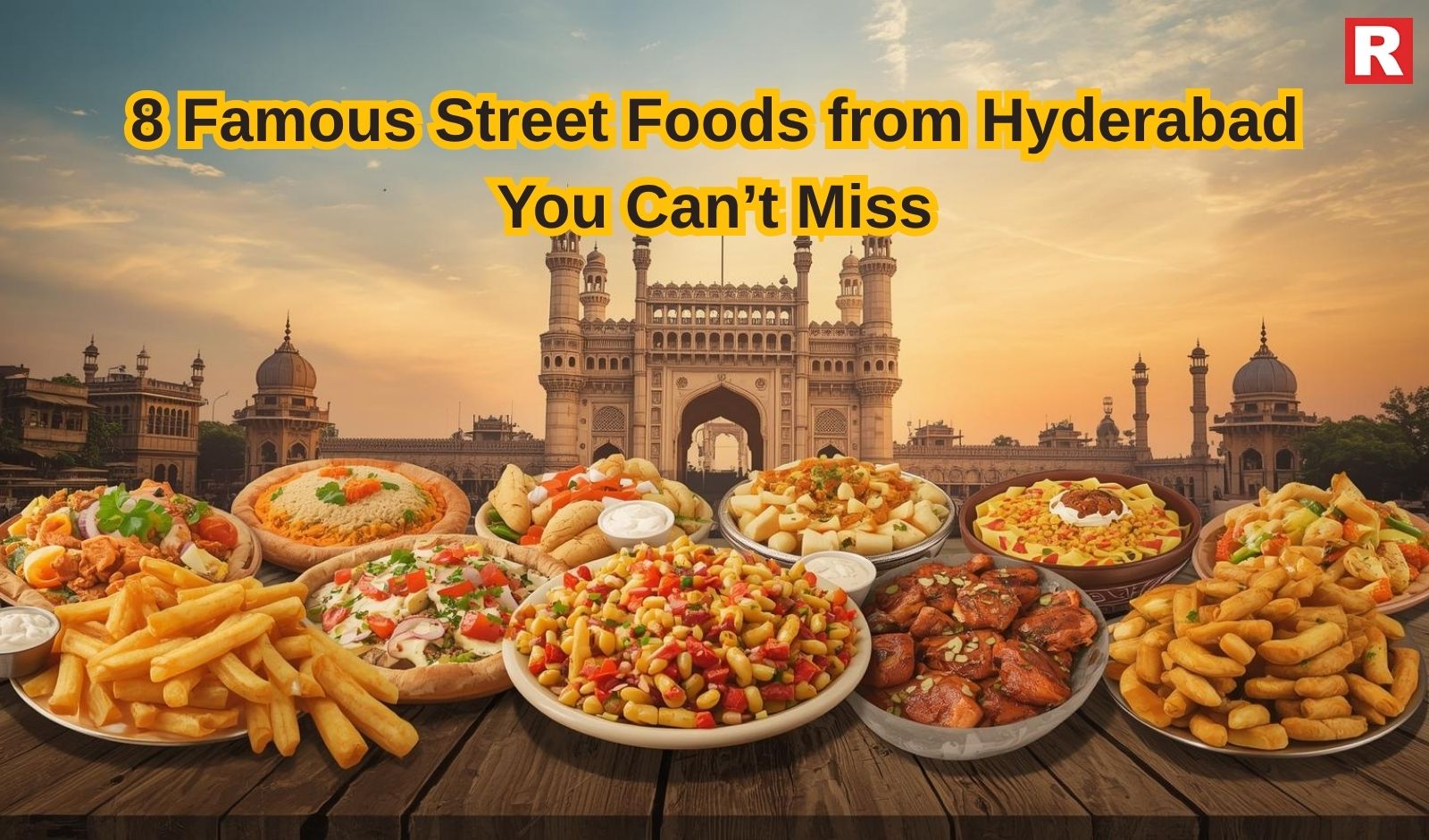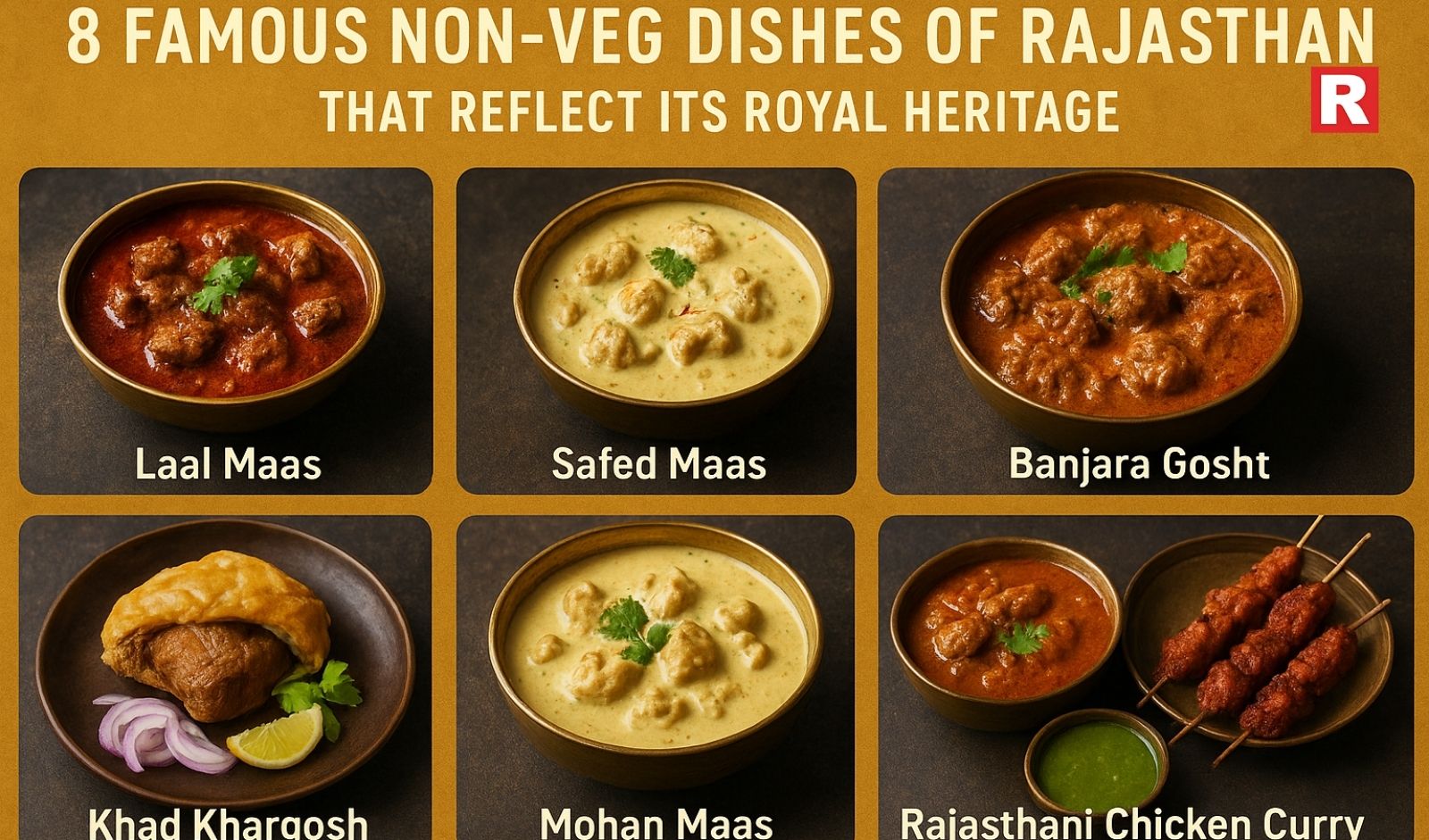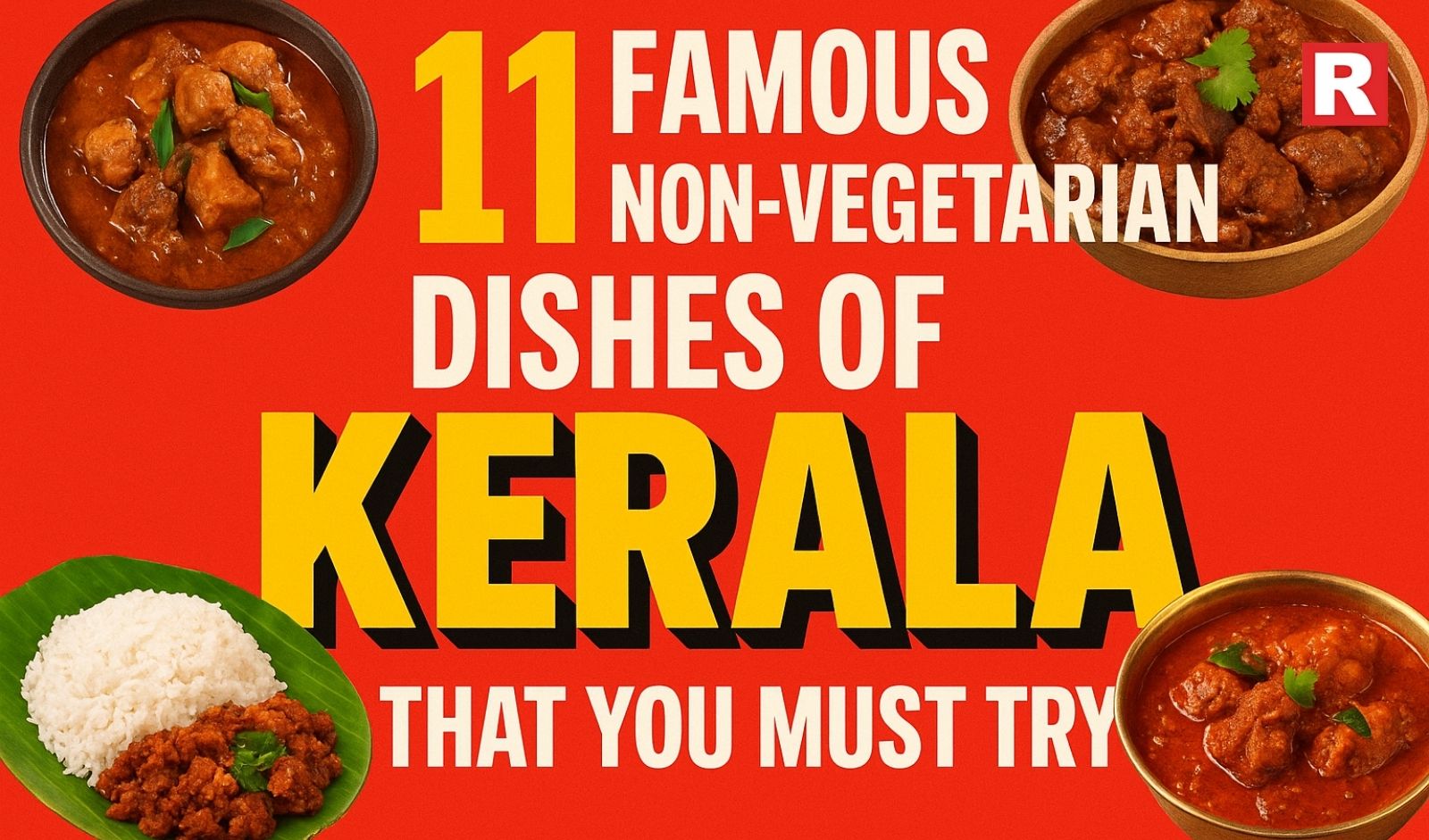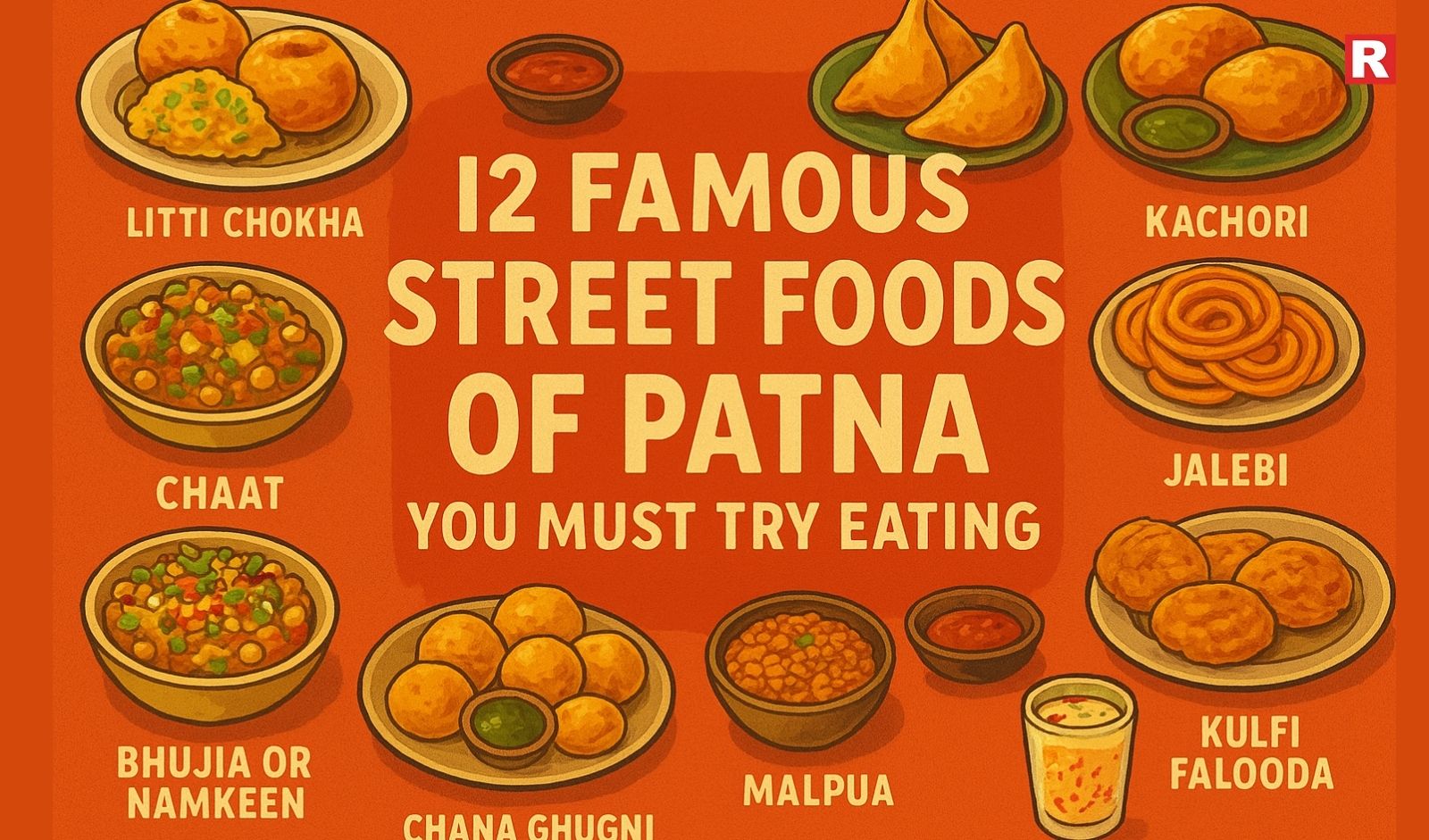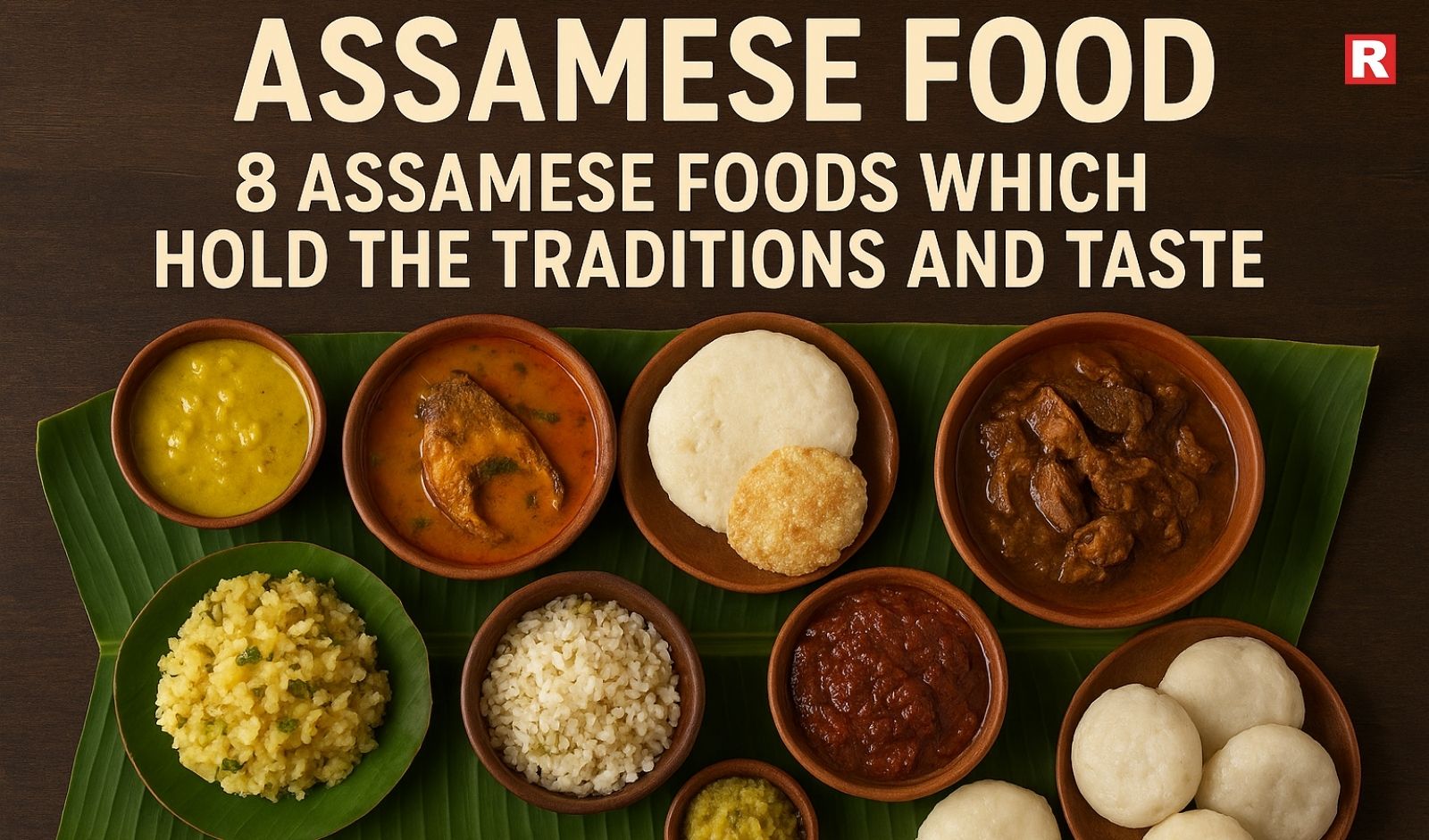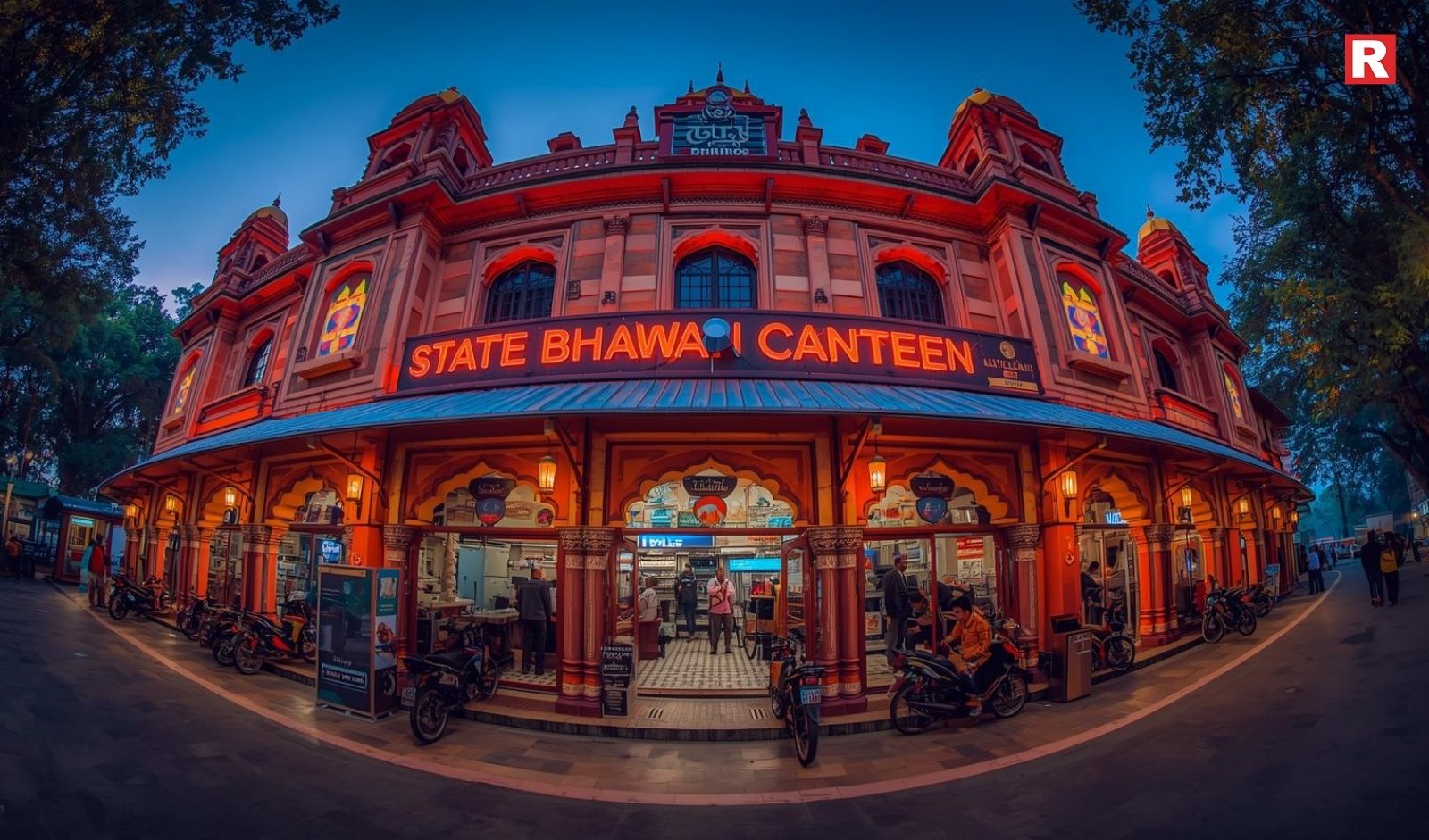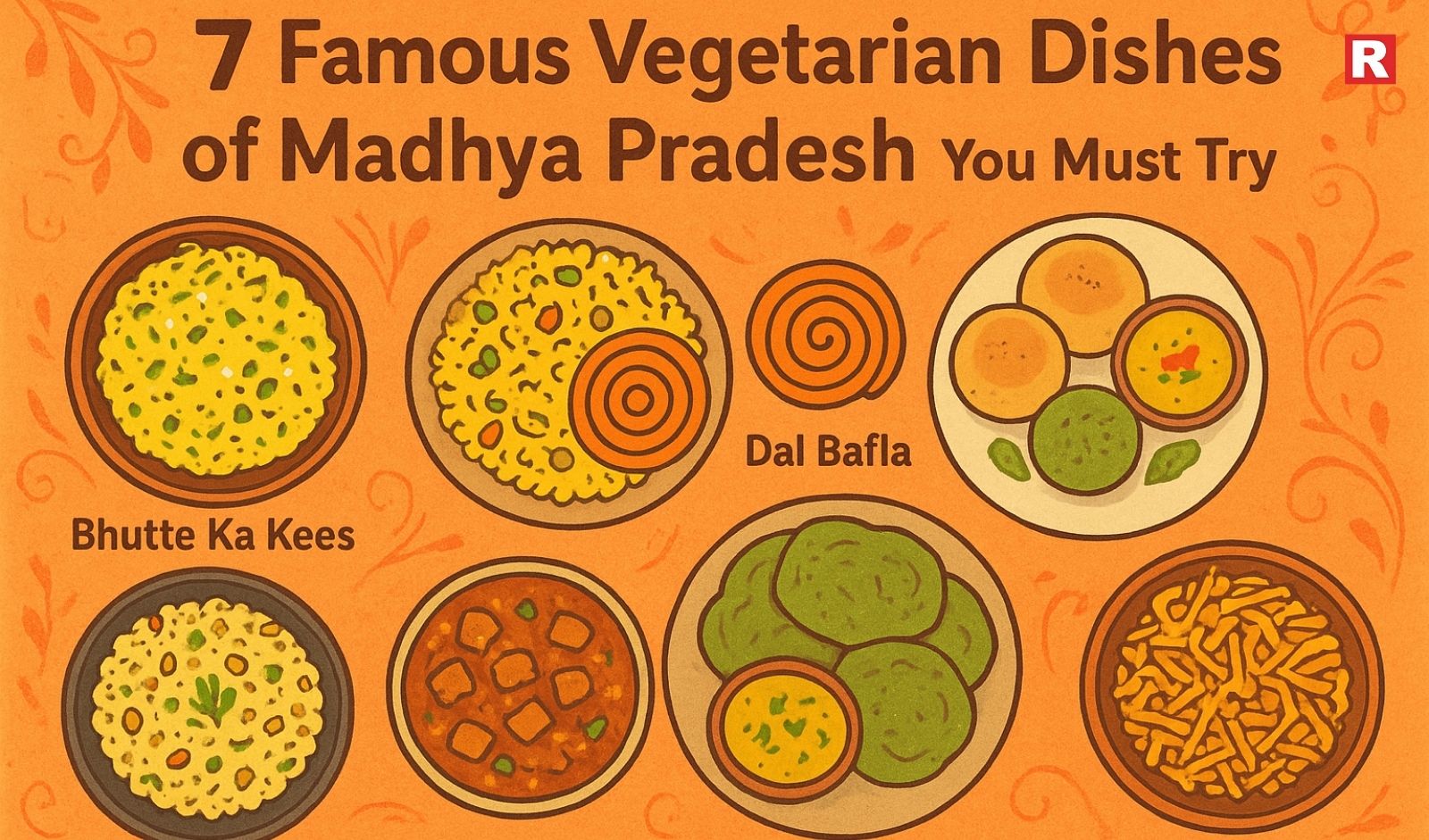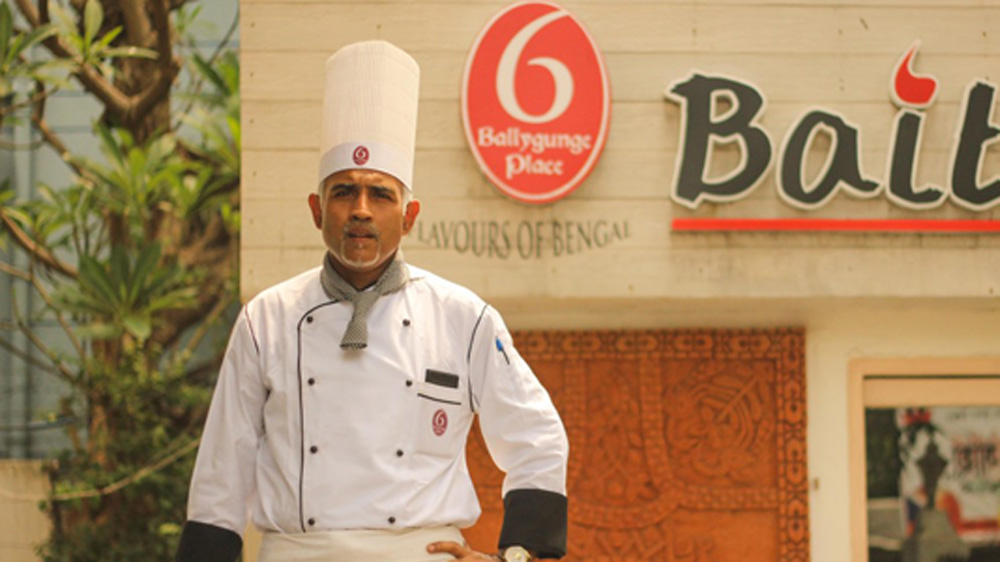
The mainstream Indian menu that we have been seeing mostly includes dishes like Dal Makhni, Butter Chicken, Masala Dosa, Idli Vada, Paneer Butter Masala besides other hundred dishes of paneer. The standard Indian menu which has more than half of the dishes from north India has always represented itself as the Indian cuisine in the global market. Consequentially India with 29 states and 9 union territories has got a GI tag of ‘spicy and oily food’ in the international arena.
North and South Indian dishes have highlighted to the extent that people often seem to forget that India has a variety of regional and tribal cuisines as well. “I think it is to do with the bias of the majority against the minority and it’s about time people understand varied cuisines that India offers,” Chef Asma Khan said on the sidelines of the India International Hospitality Expo.
She also said “it is a sad indication of our bias that dishes with a lot of ghee, butter and cream are considered to be ‘richer cuisines’ and I absolutely fundamentally disagree with that.”
Chef Ashish Bhasin echoed her opinion by saying that “Indian food has been labeled as the spiciest cuisine. However, it is all about balancing of all the aromatic spices. When you can’t balance the spice, you increase the chilly and then the taste gets numb.”
Whether it is the north eastern belt, the central most part or the hilly states of India, the cuisines of these regions are not being recognized and is largely ignored. “The region specific dishes from Nagaland, Mizoram and certain parts of southern and eastern India have not come to the mainstream yet. However, there are people who are bringing it to the forefront,” Chef Vineet said on the sidelines of the event.
Meanwhile sustainability, which is the talk of the town these days, is substantially influencing the culinary practices across the world. Various chefs are going back to basics in order to incorporate sustainable ways in their cooking. Chef Asma khan, who is running an Indian restaurant called Darjeeling Express in London, said “Now everyone in the west is talking about sustainability and this is what tribal food has done for centuries. They get their food in a sustainable way and honor the soil on which they work. We can actually learn from them. It’s about time they came on stage and got their voices heard. All of us who can cook can learn from this whole tradition because the west is harking on it and creating this whole idea but the tribal traditions actually have been doing all along.”
Home chefs who play a significant role in spreading their culinary knowledge and age old practices have now been getting recognized. Renowned hotels and chefs are inviting home chefs by organizing pop-ups and food festivals. “When I started this thing of bringing home chefs to kitchen in 2014, I will be very frank, I was scared. But now more and more people are doing this.”
Chef Vinnet shared a similar sentiment and said “Home chefs cook with passion and care. They bring regional cuisine and that is why hotels are a big platform which promote these cuisines via pop ups. It also generates interest in media.”

Agra, the city of the Taj Mahal, is famous not just for its monuments but also for its delicious street food. The city’s streets are full of smells and colours. Every corner has snacks that are spicy, sweet, or crunchy. Agra’s food shows its Mughal history and local traditions. Tourists and locals both enjoy walking through the crowded markets to taste these dishes. Areas like Sadar Bazaar, Chaat Gali, and Raja Ki Mandi are famous for their food. The aroma of fried snacks and sweet syrup fills the air. Street food here is not just a meal. It is a way to feel the city and its culture. Each dish tells a story of Agra’s past.
The food is simple but full of flavour. Visitors can try crispy Bedai with potato curry, soft and sweet Petha, or spicy Dalmoth. Chaats, kachoris, and jalebis are also popular. For dessert, Rabri Falooda gives a royal taste of the city. Agra’s street food is loved for its taste and tradition. It connects people to the city. Every bite reflects history, culture, and the spirit of Agra. For anyone visiting, tasting the local street food is a must.
Find 8 Famous Street Foods of Agra
1. Bedai and Aloo Sabzi – Agra’s Breakfast of Champions
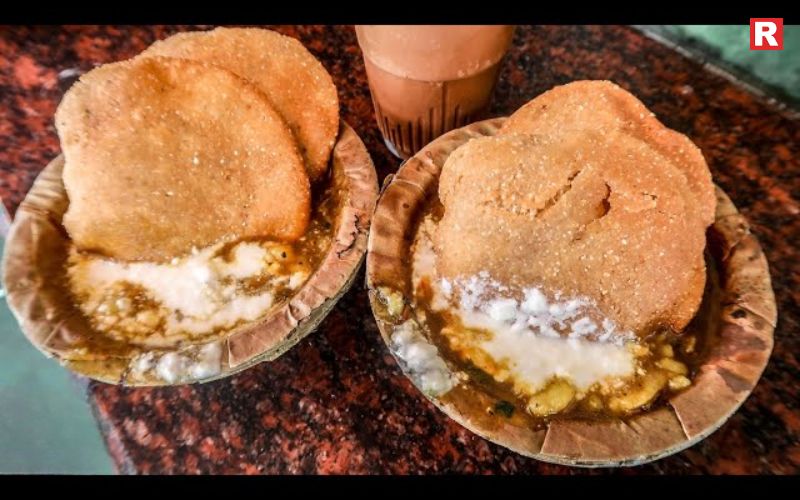
A visit to Agra is incomplete without trying Bedai. It is a deep-fried, soft bread served with spicy potato curry. Bedai is usually paired with sweet jalebi, making it a perfect balance of sweet and spicy. Many locals start their day with this hearty breakfast. Popular spots to try Bedai include Deviram Sweets and Bhagat Halwai. The crispy texture of the bread combined with the rich, spiced potato curry is a flavour that stays with you. The combination is simple but represents Agra’s street food culture perfectly.
Read more: 8 Famous Vegetarian Dishes of Uttar Pradesh and Their Timeless Legacy
10 Awadhi Cuisine Classics You Must Try at Least Once
2. Petha – The Pride of Agra
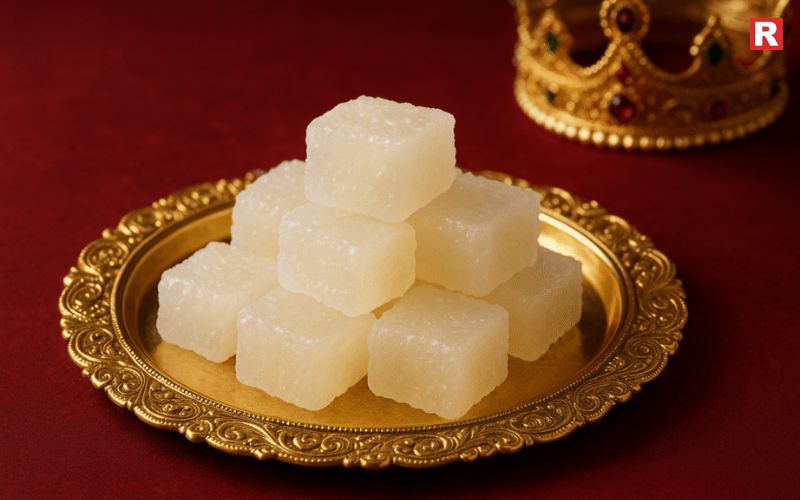
Agra’s most famous sweet, Petha, is made from ash gourd. It comes in many varieties, including dry, kesar, and paan-flavoured. Petha is translucent, soft, and melts in your mouth. Its popularity goes back centuries and is a must-buy souvenir for tourists. Panchi Petha is one of the most well-known shops to try authentic Petha. Eating Petha gives you a taste of Agra’s royal Mughal heritage, and it is a sweet that locals and tourists both cherish.
3. Dalmoth – The Perfect Crunchy Snack
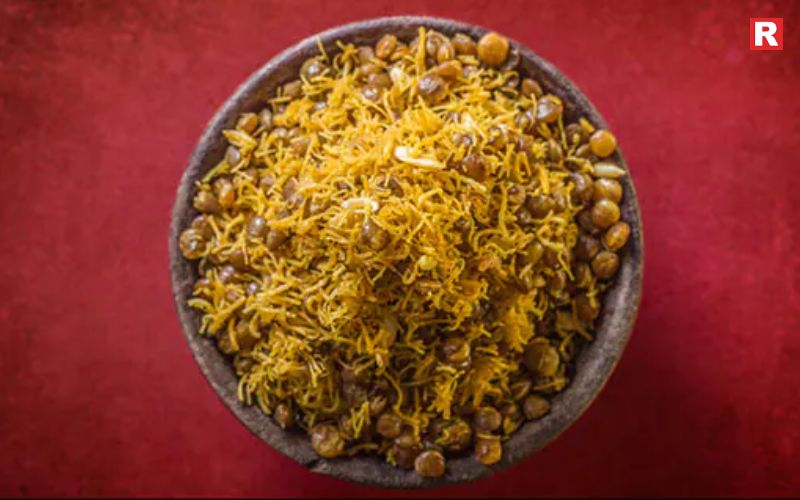
Dalmoth is a spicy, crunchy snack mix made with lentils, nuts, and special spices. It is perfect for munching anytime — with tea in the evening or while walking through the crowded markets. The snack is tangy, salty, and addictive. Agra Famous Dalmoth Bhandar is a place where you can taste Dalmoth in its authentic form. It represents the snack culture of Agra and is perfect for travellers who love something light but flavourful.
Know more: 10 Famous Non-Vegetarian Dishes of Uttar Pradesh: A Journey Through Flavour
4. Bhalla Chaat – A Tangy Delight from Chaat Gali
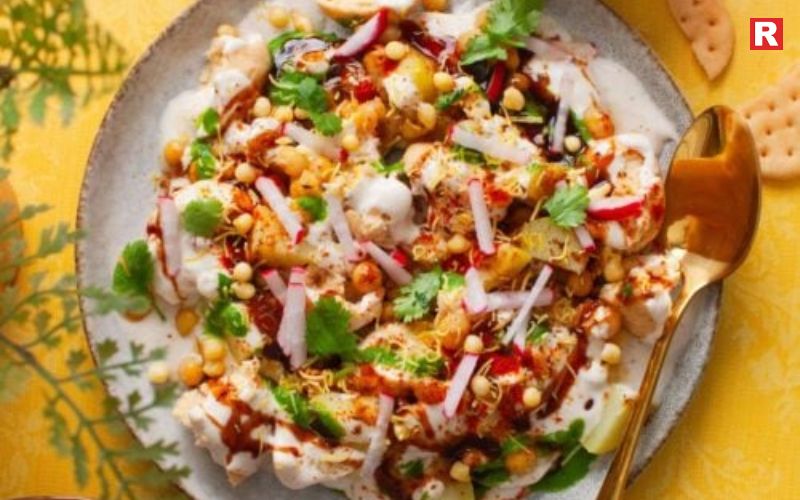
Agra is famous for its chaats, and Bhalla Chaat is a top favourite. It is made with soft lentil dumplings, mashed potatoes, sweet and tangy chutneys, and fresh curd. The combination of flavours is intense, tangy, and refreshing. Chaat Gali in Sadar Bazaar is where locals head for the best Bhalla Chaat. It is a must-try for anyone exploring Agra’s street food scene. The dish is light yet flavourful, making it perfect for a quick snack while sightseeing.
5. Jalebi – Sweet Swirls of Happiness
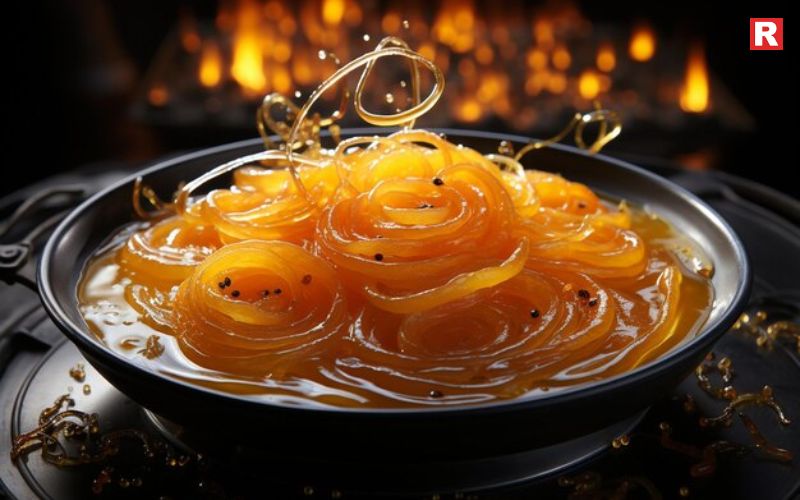
Agra’s jalebi is crispy, syrupy, and golden. It is best eaten hot and fresh. Many people enjoy it early in the morning with a glass of milk or as an evening treat. The texture is crispy outside and soft inside, making it irresistible. Deviram Sweets is known for serving some of the best jalebis in the city. Eating jalebi in Agra is not just about sweetness; it is about experiencing a traditional dessert loved by generations.
6. Kachori Sabzi – Spicy and Satisfying
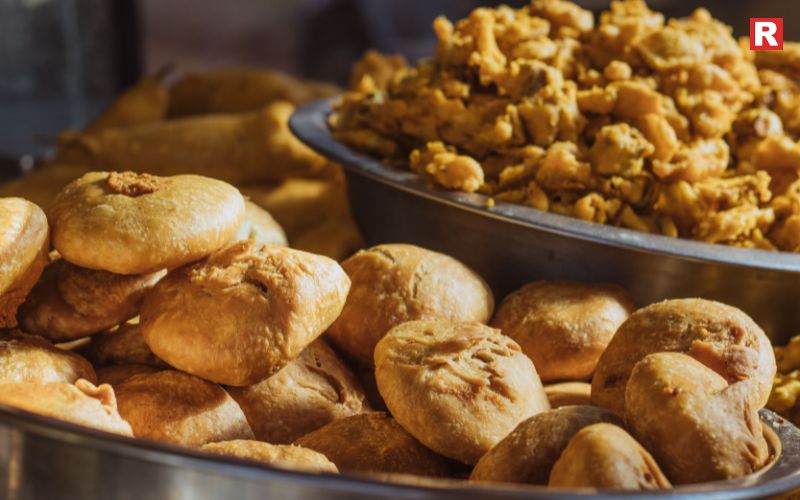
Kachoris in Agra are spicy, deep-fried pastries filled with lentils or masala. They are usually served with tangy potato curry. Kachori Sabzi is different from Bedai but equally popular, especially for breakfast or evening snacks. Agra Chat House is one of the best places to try this dish. The kachori’s crispy shell and spicy filling perfectly match the soft, flavorful curry. It is a snack that is simple yet represents the city’s street food heritage.
Also check: 10 Famous Non-Vegetarian Dishes of Lucknow That Define Royal Awadhi Cuisine
7. Mughlai Paratha – A Taste of Royal Agra
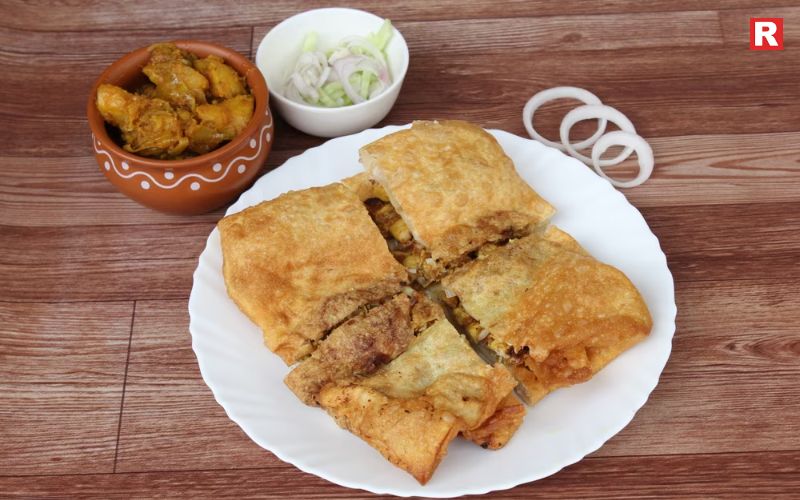
Agra’s streets also offer Mughlai Paratha, a dish influenced by royal Mughal cuisine. This paratha is stuffed with spiced minced meat, eggs, and onions. It is rich, filling, and perfect for meat lovers. Mama Chicken Mama Franky House in Sadar Bazaar is famous for serving this dish. Mughlai Paratha gives you a taste of the royal kitchens and reflects Agra’s historical significance. Each bite is rich, spicy, and deeply satisfying.
8. Rabri Falooda – A Royal Dessert to End Your Food Trail
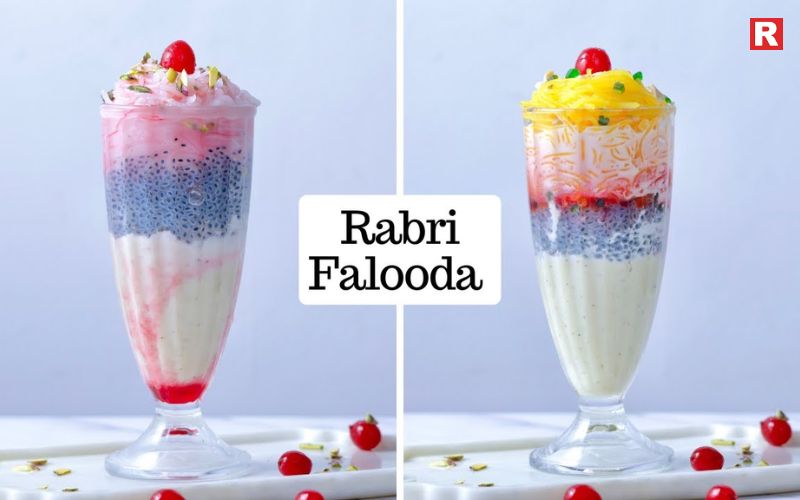
No street food journey in Agra is complete without Rabri Falooda. Thick rabri topped with chilled falooda, nuts, and syrup is a perfect way to finish a meal. It is refreshing, sweet, and indulgent. Sadar Bazaar and the Ram Babu Paranthe Wale area are famous for serving the best Rabri Falooda. It is a dessert that combines texture, taste, and presentation, offering a royal culinary experience in the streets of Agra.
Where to Find the Best Street Food in Agra
The best street foods are concentrated in areas like:
- Sadar Bazaar – Popular for Bedai, Chaat, and Jalebi.
- Chaat Gali – Famous for Bhalla Chaat and Kachori Sabzi.
- Raja Ki Mandi – Known for Mughlai Paratha and Dalmoth.
- MG Road – Offers a variety of sweets and snacks including Petha and Rabri Falooda.
These areas are always buzzing with locals and tourists alike. Walking through them gives a full taste of Agra’s food culture.
Check more: Pani Puri Has Different Names in Different Indian States—Know Them All
5 Cities That Serve the Best Non-Vegetarian Street Food
Top 5 States With the Spiciest Food in India
From The City of Shah Jahan
Agra’s street food scene is a perfect blend of tradition, flavour, and history. Each dish, from crispy Bedai to sweet Petha, tells a story of the city’s rich heritage. Walking through Agra’s bustling streets, tasting its diverse foods, is an experience that goes beyond sightseeing. It is about connecting with the city through its flavours. On your next visit to Agra, don’t just admire the Taj Mahal. Explore the streets, follow the aroma of freshly fried snacks, and discover the tastes that locals have cherished for generations. Agra is not just a city of monuments — it is a city of food, culture, and unforgettable culinary experiences.

Odisha, located on India’s eastern coast, is a land of rich culture, heritage, and history. But beyond its temples and festivals, it hides a culinary treasure that many food lovers have yet to explore. Odisha’s cuisine is simple yet soulful. Every dish is a reflection of tradition, local produce, and careful cooking. The food here is not about heavy spices or elaborate presentations. Instead, it focuses on natural flavors, freshness, and harmony.
Odia meals are deeply tied to the rhythm of life. They draw inspiration from the local coast, forests, and farmlands. Coastal regions offer fresh seafood, while inland areas celebrate vegetables, lentils, and rice. One cannot talk about Odisha cuisine without mentioning the Jagannath Temple in Puri. The temple’s kitchen, known for cooking Mahaprasad, has been feeding devotees for centuries. These dishes are vegetarian, simple, yet full of flavor. Here, food is not just nourishment. It is a way to connect with community and tradition. Simplicity is the essence of Odisha cuisine. Spices are used sparingly, with mustard oil, panch phoron, turmeric, and cumin defining most dishes. Fresh vegetables, lentils, rice, and seafood are staples. Coconut, jaggery, and curd are often added for richness and balance. Meals are designed to satisfy the palate without overwhelming it. This combination of simplicity and care creates dishes that are both comforting and unforgettable.
Why Odisha Cuisine Deserves More Recognition
Despite its uniqueness, Odisha cuisine is often overshadowed by neighbouring cuisines like Bengal or Andhra Pradesh. However, it offers a perfect balance of nutrition, taste, and cultural richness. Every dish is prepared with care, using seasonal ingredients and minimal spices. It is a cuisine where less is truly more — simple methods produce deeply satisfying flavors. Whether it is the tang of Pakhala, the sweetness of Kanika, or the spice of Macha Besara, each dish tells a story. Odisha cuisine is a journey of culture, tradition, and mindful cooking that every food lover should explore.
Discover 6 Odisha Cuisines for Soulful Flavour
1. Dalma: The Soulful Lentil Curry
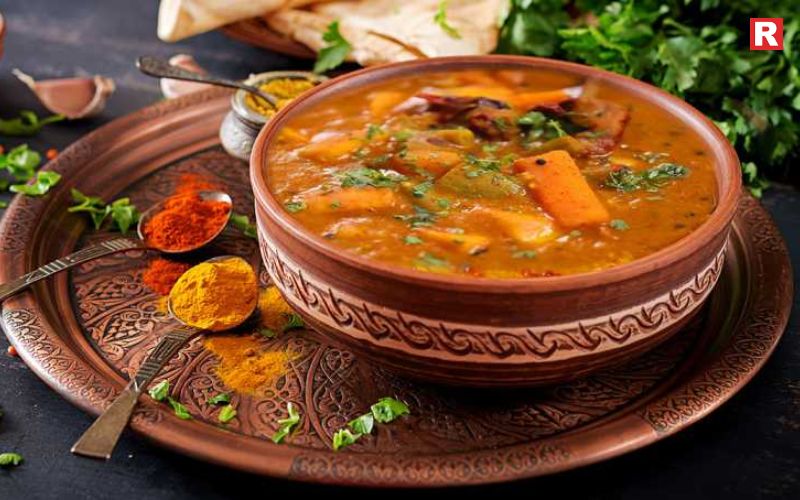
Dalma is one of Odisha’s most iconic dishes. Made with split lentils and seasonal vegetables, it is cooked slowly with mustard oil, ginger, garlic, and a touch of cumin. The result is a curry that is hearty, wholesome, and comforting. Dalma is traditionally offered at temples, including the Jagannath Temple, making it a dish with spiritual significance. It is often served with plain rice or roti. What makes Dalma unique is its balance of flavors. The vegetables retain their texture, and the lentils add depth without overpowering the dish. Dalma is a perfect example of how Odisha cuisine celebrates natural flavors with simple ingredients.
Read more: 8 Famous Vegetarian Dishes of Uttar Pradesh and Their Timeless Legacy
10 Awadhi Cuisine Classics You Must Try at Least Once
2. Pakhala Bhata: Odisha’s Summer Comfort Food
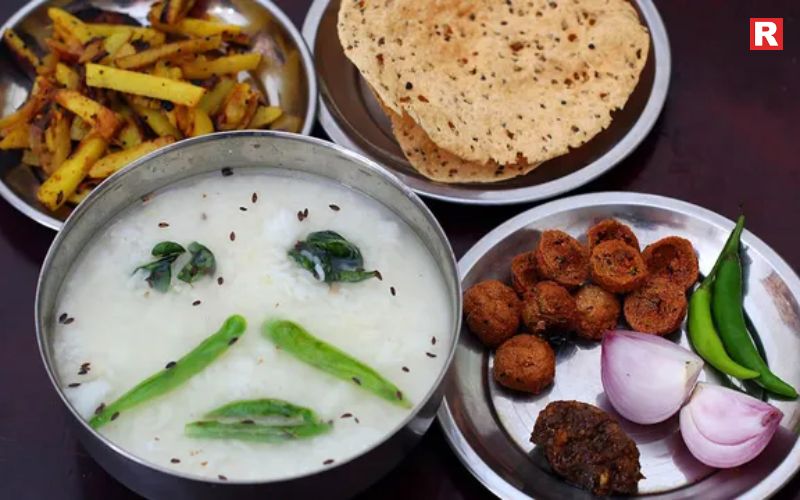
Pakhala Bhata is fermented rice soaked in water. Served cold with fried vegetables, green chilies, and sometimes fish, it is Odisha’s ultimate summer dish. The fermentation process not only gives it a tangy taste but also helps in digestion and cooling the body. Pakhala is deeply rooted in Odia culture. Families often enjoy it for breakfast or lunch during the scorching summers. It is a humble dish, yet full of character. Pair it with a side of badi chura (crushed lentil dumplings) or fried fish for a truly authentic Odia experience. This dish shows how simple ingredients, when handled thoughtfully, create a memorable taste.
3. Chhena Poda: The Sweet Delight
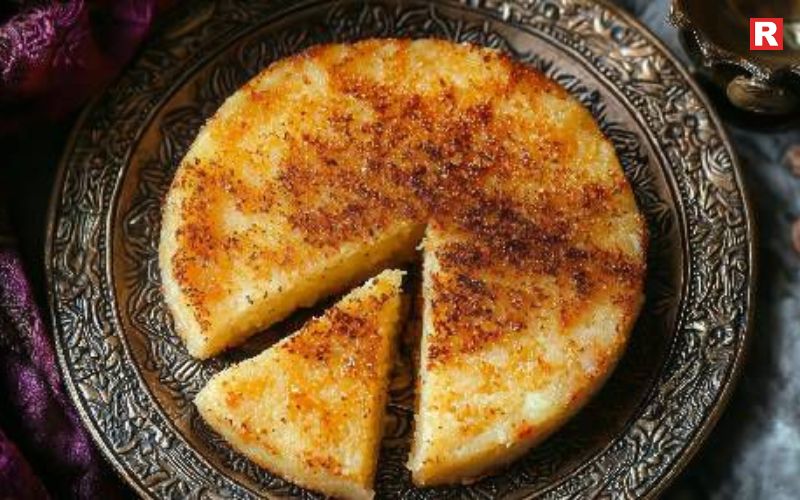
Odisha is famous for its desserts, and Chhena Poda is the crown jewel. The name literally means “roasted cheese.” Made from fresh chhena (a type of Indian cottage cheese), sugar, and cardamom, it is baked until golden brown. The result is a dessert with a caramelized crust and soft, melt-in-your-mouth interior. Chhena Poda is often served during festivals and special occasions. Unlike overly sweet desserts, it is light, flavorful, and subtly spiced. Every bite tells a story of traditional cooking methods passed down through generations. This dessert is an example of how Odisha combines simplicity with culinary creativity.
Know more: 10 Different Types of South Indian Rice Dishes
4. Macha Besara: The Mustard Fish Curry
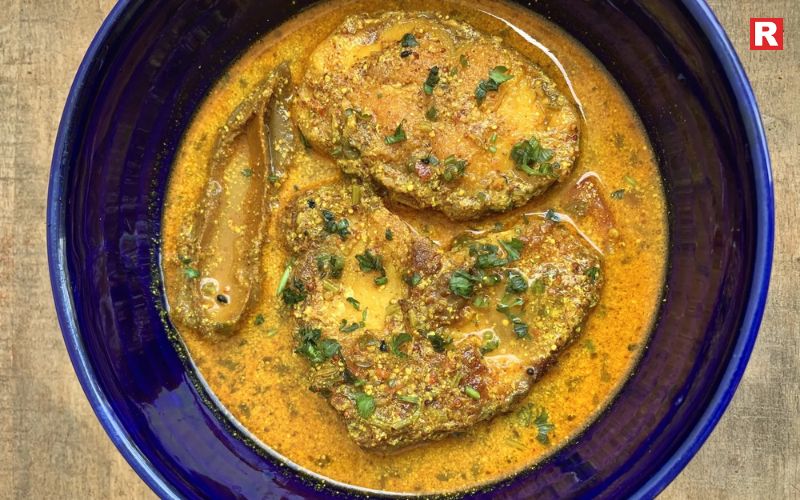
For seafood lovers, Macha Besara is a must-try. This traditional fish curry is made using mustard paste, turmeric, and mustard oil. The mustard gives it a pungent, aromatic flavor that perfectly complements the freshness of river or sea fish. Macha Besara is a coastal favourite, commonly prepared at home and during festivals. It is served with steamed rice, making it a wholesome and satisfying meal. The combination of mustard and fish is a hallmark of Odisha’s coastal cuisine. It demonstrates how local ingredients and simple techniques create dishes with intense flavors and cultural significance.
5. Kanika: Fragrant Sweet Rice
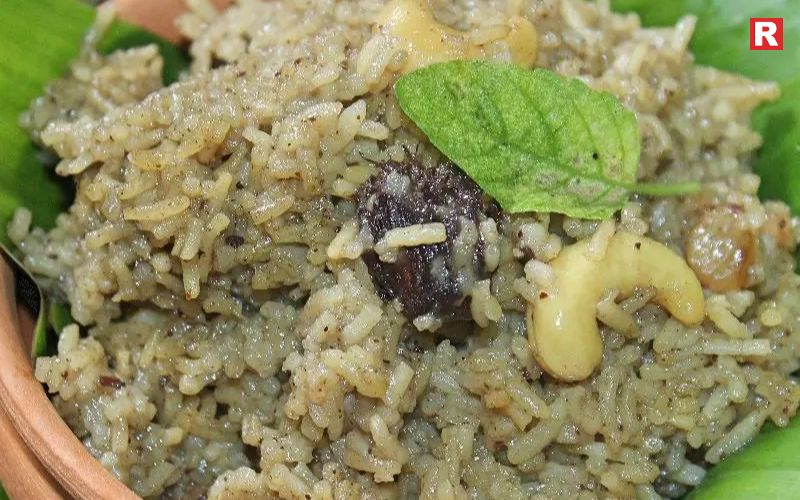
Kanika is a sweet rice dish with a delicate aroma and flavor. It is made with rice, ghee, raisins, cashews, and sometimes saffron. Traditionally, it is offered as Mahaprasad at the Jagannath Temple in Puri. Kanika is not overly sweet. Instead, it is fragrant, lightly spiced, and comforting. It is served during special occasions, festivals, and rituals. The dish reflects Odisha’s love for balanced flavors and wholesome ingredients. With each spoonful, you experience the subtle richness and cultural depth of Odia cuisine. Kanika is proof that Odisha cuisine can be simple yet indulgent, respecting tradition while delighting the palate.
Also check: A Bite of Banaras: 8 Iconic Street Foods You Can’t Miss in Varanasi
6. Khicede: The Sacred Khichdi
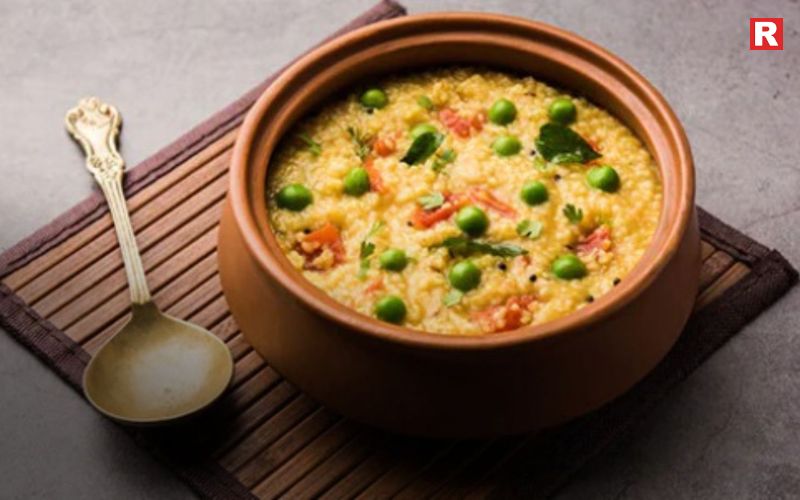
Khicede, or Khichdi, is the sacred dish of Lord Jagannath. Made with rice, moong dal, and ghee, it is cooked to perfection in the temple kitchen. Khicede symbolizes purity and devotion. It is soft, light, and nourishing, making it suitable for all ages. Though plain in appearance, the flavor comes from the careful cooking and the ghee’s richness. Khicede is a reminder that Odisha cuisine values simplicity and spirituality. Eating it is not just about taste; it is an experience of connection with faith, history, and culture.
The Role of Temple Food & Mahaprasad
Temples in Odisha, especially the Jagannath Temple in Puri, play a central role in shaping the cuisine. Mahaprasad is prepared using traditional earthen pots and wood-fired stoves. It is more than a meal; it is a spiritual experience. Food is cooked in large quantities, and the aroma fills the temple complex, drawing devotees and visitors alike. Mahaprasad is served to the community in a thali, symbolizing equality and devotion. Temple food showcases Odisha’s dedication to clean, simple, and nutritious meals, reflecting the region’s philosophy that food is sacred.
Check more: Manju K. Tilla Explores the Flavours of Delhi’s Tibetan Street Food Scene
10 Famous Non-Vegetarian Dishes of Uttar Pradesh: A Journey Through Flavour
Pani Puri Has Different Names in Different Indian States—Know Them All
A Soulful Treat!
Odisha cuisine is a true reflection of the state’s culture and traditions. Every dish tells a story of devotion, community, and local life. Simple meals like Dalma, made with lentils and vegetables, show how everyday food can be rich in flavor. Sacred dishes like Khicede, offered at the Jagannath Temple, carry centuries of history. Odisha’s food is never complicated. It uses fresh ingredients and natural flavors to create meals that are wholesome and satisfying. Temple food and traditional recipes highlight the state’s respect for purity and balance. From sweet Kanika to spicy Macha Besara, each dish offers a taste of Odisha’s heritage. Trying this cuisine is more than eating. It is an experience of local life, customs, and care in cooking. For anyone exploring authentic Indian food, Odisha provides a journey of simple, soulful flavors that stay long after the meal ends.

Bihar is one of India’s oldest cultural regions, known for its warmth, simplicity, and deep-rooted heritage. Its cuisine beautifully mirrors the state’s soul — humble, flavourful, and full of heart. Each dish from Bihar carries a story of tradition, family, and the land it comes from. The food here is shaped by the rhythms of rural life. Locally grown grains, seasonal vegetables, and home-ground spices form the base of most recipes. The use of mustard oil, sattu, and jaggery gives Bihari dishes their distinct character.
Meals in Bihar are often a shared experience, reflecting a strong sense of community. From festive feasts to daily meals, food is a way of bringing people together. Even the simplest dishes, like Litti Chokha or Sattu Paratha, are prepared with care and tradition. For those who love exploring Indian regional cuisines, Bihari food offers a unique blend of taste and culture. It is not just about eating; it is about celebrating heritage, togetherness, and the simple joy of wholesome cooking. These five authentic dishes from Bihar truly capture the heart of India’s eastern kitchen.
Read more: 8 Famous Vegetarian Dishes of Uttar Pradesh and Their Timeless Legacy
5 Cities That Serve the Best Non-Vegetarian Street Food
Find the Taste of Bihar
Here’s a look at five tasty dishes from Bihar that truly capture the heart of India’s eastern flavours.
1. Litti Chokha – The Soul of Bihar
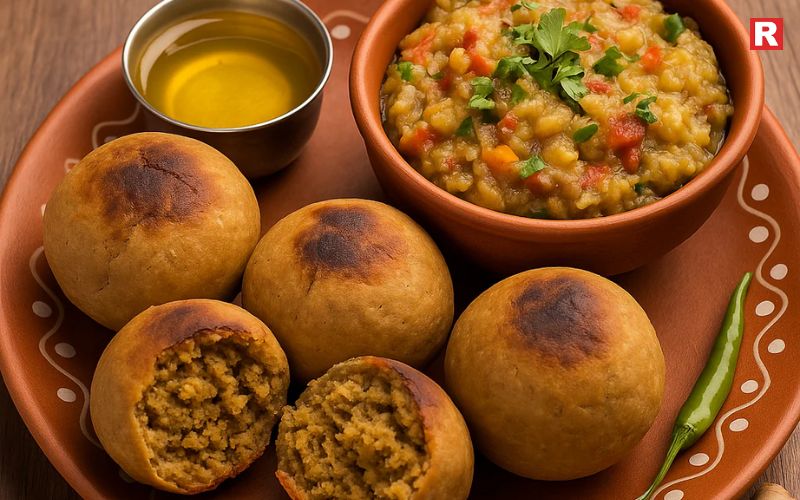
No dish represents Bihar better than Litti Chokha. It is the symbol of Bihari cuisine—simple, earthy, and delicious. Litti is made from wheat dough stuffed with sattu (roasted gram flour) mixed with mustard oil, garlic, lemon juice, and spices. Traditionally, it is roasted over cow dung cakes or charcoal, giving it a smoky, rustic flavour that no modern oven can replicate.
The chokha served with it is a mixture of mashed roasted eggplant, tomatoes, and boiled potatoes. The ingredients are combined with mustard oil, green chilies, and coriander leaves. This pairing is a perfect balance of smoky, tangy, and spicy flavours. It was once a humble meal of farmers and travelers because it is nutritious and long-lasting. Today, it is served in street stalls, restaurants, and even international food festivals. In many ways, Litti Chokha connects Bihar’s history, tradition, and pride in one plate.
2. Thekua – The Sweet Snack of Festivities
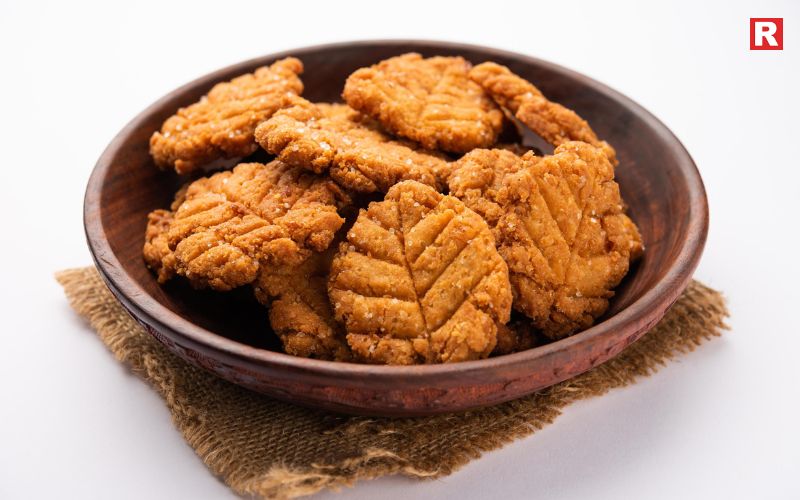
If you have ever been in Bihar during Chhath Puja, you will know that Thekua is more than just a snack—it’s a symbol of devotion. This sweet, crisp treat is made with wheat flour, jaggery (or sugar), ghee, and cardamom. The dough is shaped into small discs and deep-fried until golden brown.
Thekua has a rich, caramelized taste and a crunchy texture that makes it addictive. What makes it truly unique is its shelf life; it can stay fresh for days without preservatives, which is why it’s also a popular travel snack. During Chhath Puja, devotees offer Thekua to the Sun God as a sacred prasad. Every household has its own recipe, passed down through generations. Its deep cultural connection, combined with its comforting sweetness, makes it one of Bihar’s most beloved traditional sweets.
Know more: Best Street Food Spots in Delhi That Define Its Flavours
3. Sattu Paratha – The Protein Powerhouse
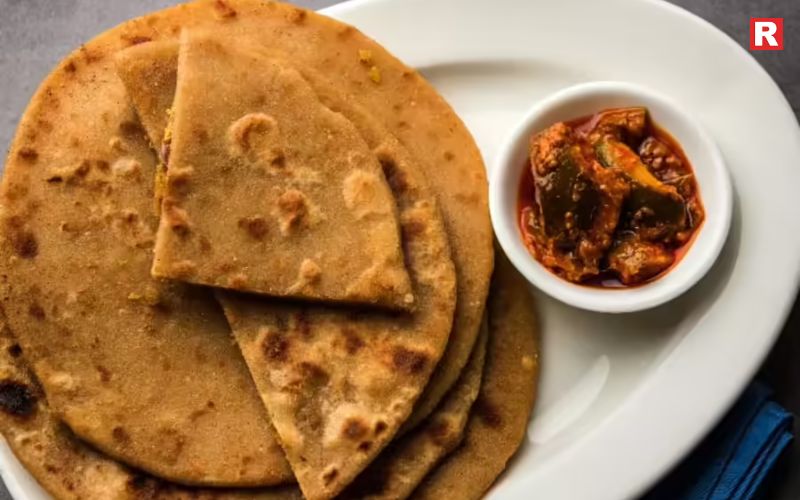
- Sattu Paratha is the pride of Bihar’s breakfast table. It is both healthy and satisfying, made from sattu — roasted gram flour that is high in protein and fiber. The stuffing includes sattu mixed with garlic, onions, green chilies, ajwain, mustard oil, and salt. The mixture is wrapped in a thin wheat dough and cooked on a tawa with ghee or oil.
The result is a soft, flavourful paratha with a spicy and nutty filling. It’s usually served with curd, pickle, or chutney. Many people in Bihar prefer it with a drizzle of ghee and a glass of buttermilk for a wholesome meal.
What makes Sattu Paratha so popular is its nutrition and simplicity. It keeps you full for hours, making it perfect for farmers, laborers, and anyone looking for a high-energy meal. In recent years, sattu has gained national popularity as a “superfood,” and this paratha remains one of the best ways to enjoy it.
4. Khaja – The Royal Dessert
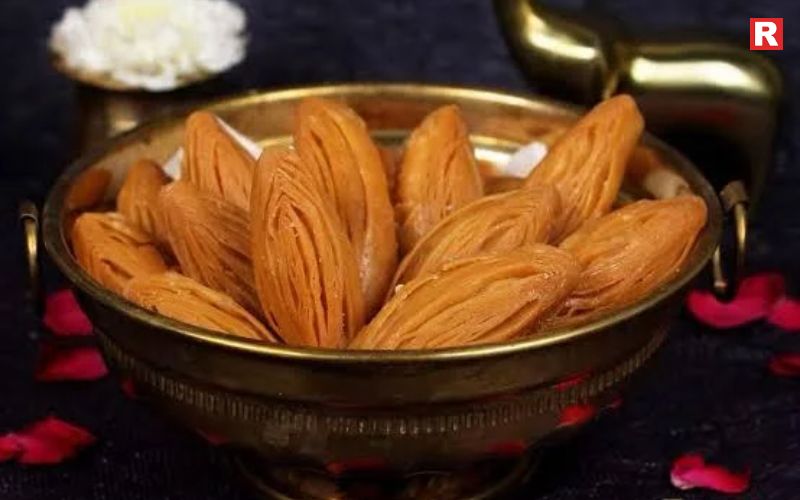
Bihar’s love for sweets is evident in Khaja, a flaky, layered dessert that traces its origins to ancient times. It is said to have been served in the court of Magadha, one of India’s oldest kingdoms. The most famous version comes from Silao, a town near Nalanda, which has received a Geographical Indication (GI) tag for its Silao Khaja.
Made from refined flour, ghee, and sugar syrup, Khaja has a crisp, layered texture similar to baklava. The dough is rolled out into thin layers, folded repeatedly, and deep-fried until golden. It is then dipped in sugar syrup, giving it a glossy finish. This royal dessert is a common sight at weddings, festivals, and fairs across Bihar. Its light, melt-in-the-mouth sweetness makes it a perfect treat after a spicy meal. Khaja is proof that Bihar’s dessert traditions are as rich as its history.
Also check: 8 Famous Street Foods from Hyderabad You Can’t Miss
5. Dal Pitha – Bihar’s Dumpling Delight
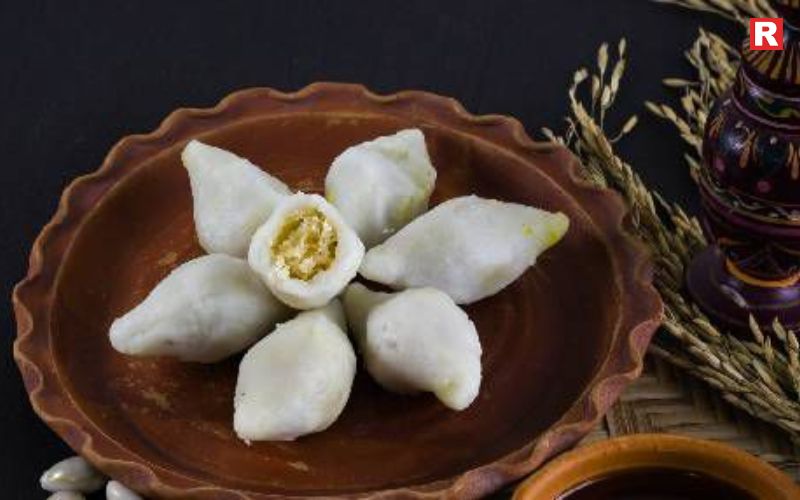
Dal Pitha is often described as the “Bihari version of momos,” but it has a distinct identity of its own. These are steamed rice flour dumplings filled with spicy lentil paste, usually made of chana dal (split Bengal gram). The filling is seasoned with garlic, ginger, cumin, and mustard oil, giving it a strong, aromatic flavour. Once filled, the pithas are shaped into small half-moons and steamed. Some versions are lightly pan-fried for extra texture. They are usually served with chutney or ghee.
Dal Pitha is a common dish during festivals and fasting periods because it is light, filling, and nutritious. It reflects Bihar’s love for simple ingredients and healthy cooking. This dish also shows the state’s creativity — turning basic rice and lentils into something elegant and comforting.
What Makes Bihari Cuisine Unique
Bihari cuisine stands out for its balance of taste, nutrition, and authenticity. The use of local ingredients like sattu, mustard oil, jaggery, and rice gives every dish a distinct regional flavour. The cooking style focuses on traditional methods such as roasting, steaming, and slow-cooking, which enhance the natural taste of ingredients.
Unlike many cuisines that rely heavily on spices, Bihari dishes use spices thoughtfully. The result is food that feels rustic yet refined. Another unique feature is the balance between vegetarian and non-vegetarian options — from Litti Chokha to Champaran Meat, Bihar’s food has something for everyone. Most importantly, Bihari food is rooted in sustainability. The dishes use seasonal ingredients, are easy to store, and require minimal waste — a culinary philosophy that fits perfectly with today’s global trend toward mindful eating.
Check more: 10 Awadhi Cuisine Classics You Must Try at Least Once
Top 7 Regional Indian Thali Platters That Showcase Culinary Diversity
7 Chinese Dishes That Can Be a Healthy Option for Your Diet
Bihar’s Food Culture and Festive Connection
In Bihar, food is deeply linked with festivals and traditions. Every celebration has its signature dishes — Thekua for Chhath Puja, Kheer during Raksha Bandhan, and Dal Pitha during Makar Sankranti. These foods carry stories of devotion, family, and seasonal change.
Cooking in Bihar is also a community affair. Families gather to prepare festive meals, sharing laughter and memories. The recipes are passed from mothers to daughters, keeping the state’s culinary heritage alive. Even today, many Bihari families living outside the state recreate these dishes during festivals, keeping their roots connected to home through food.
Conclusion
Bihar’s food is an experience of culture, history, and heart. From the smoky Litti Chokha to the flaky Khaja, every bite tells a story of tradition and love. What makes Bihari cuisine truly special is its honesty—simple ingredients transformed into unforgettable flavours.
If you ever get the chance, try these five dishes in their authentic form. Whether it’s a roadside stall in Patna or a homemade meal during Chhath Puja, Bihar’s cuisine promises warmth, comfort, and a deep sense of belonging. So, the next time you think of regional Indian food, don’t miss Bihar—a state where every meal celebrates simplicity, culture, and taste.

Hyderabad is famous for its history, pearls, and iconic biryani. But beyond the royal heritage, the city has a street food culture that is vibrant and full of life. Every lane and corner tells a story through food. The air is filled with the aroma of sizzling kebabs, freshly fried snacks, and spicy chutneys. The streets are busy with vendors preparing dishes that are both rich in taste and easy to enjoy on the go.
Hyderabad’s street food is a mix of influences. Mughlai, Turkish, and Telugu flavors come together in every bite. From the slow-cooked, aromatic biryani to the spicy Mirchi Bajji, each dish carries a distinct taste of the city. Irani cafés near Charminar serve warm, milky tea with crumbly Osmania biscuits, while markets in Mehdipatnam and Toli Chowki are famous for rolls, shawarmas, and kebabs. People of all ages flock to these streets. Tourists and locals alike enjoy the flavors that have been passed down for generations. The food is simple, yet full of character. It is easy to see why Hyderabad’s street food is considered one of the most memorable parts of visiting the city.
Read more: 8 Famous Vegetarian Dishes of Uttar Pradesh and Their Timeless Legacy
5 Cities That Serve the Best Non-Vegetarian Street Food
Find Street Treat!
Here are 8 famous street foods from Hyderabad that truly define its vibrant food culture.
1. Hyderabadi Biryani – The Pride of the City
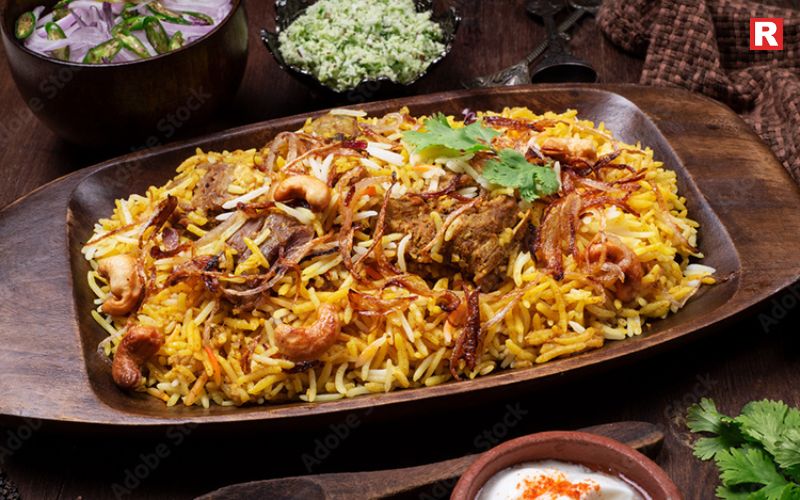
No mention of Hyderabad is complete without the iconic Hyderabadi Biryani. While it’s available in fine restaurants, the real charm lies in the street-style versions at places like Paradise Biryani, Bawarchi, and Shah Ghouse.
Cooked with basmati rice, saffron, caramelized onions, and tender marinated meat, this biryani is slow-cooked using the dum method, locking in all the flavors. The aroma alone can make anyone hungry. For locals, grabbing a plate of biryani after a long day is a comforting ritual. It’s more than just food — it’s an emotion that connects generations.
2. Haleem – The King of Ramadan Delicacies
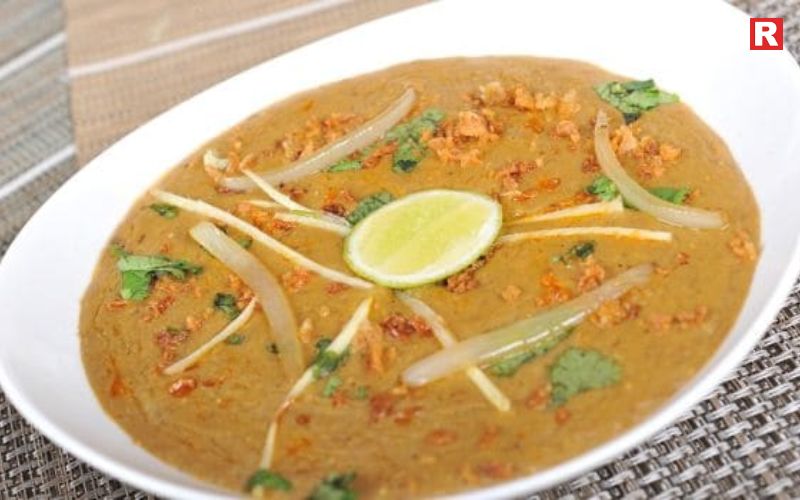
If you visit Hyderabad during Ramadan, you’ll notice stalls everywhere selling Haleem. Made with wheat, lentils, and mutton, it is slow-cooked for hours until it reaches a rich, creamy texture. The best Haleem can be found at Pista House, Café 555, and Sarvi.
Haleem represents patience and tradition. It’s filling, packed with protein, and deeply flavorful. While it started as a festival dish, its popularity has turned it into a year-round favorite. The smoky flavor from ghee and spices gives Haleem its signature Hyderabadi touch that no other city can replicate.
3. Irani Chai with Osmania Biscuits – The City’s Favorite Pair
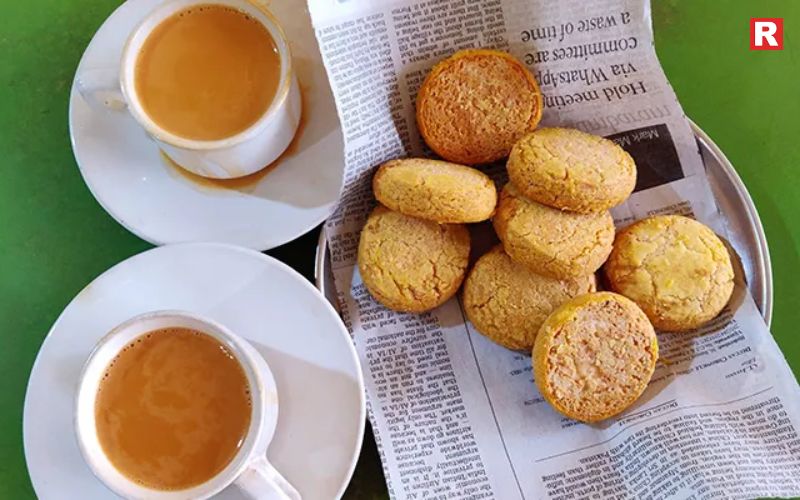
A visit to Hyderabad is incomplete without sipping Irani Chai at an old café. The rich, milky, slightly spiced tea is often served with Osmania Biscuits, soft yet crumbly cookies named after the last Nizam of Hyderabad.
Head to Nimrah Café near Charminar or Café Niloufer in Lakdikapul to experience this local tradition. The cafés have an old-world charm where locals discuss politics, business, and cricket over endless cups of chai. The combination of Irani Chai and Osmania biscuits reflects Hyderabad’s timeless café culture — simple, warm, and deeply satisfying.
Know more: 10 Awadhi Cuisine Classics You Must Try at Least Once
4. Mirchi Bajji – The Spicy Street Snack
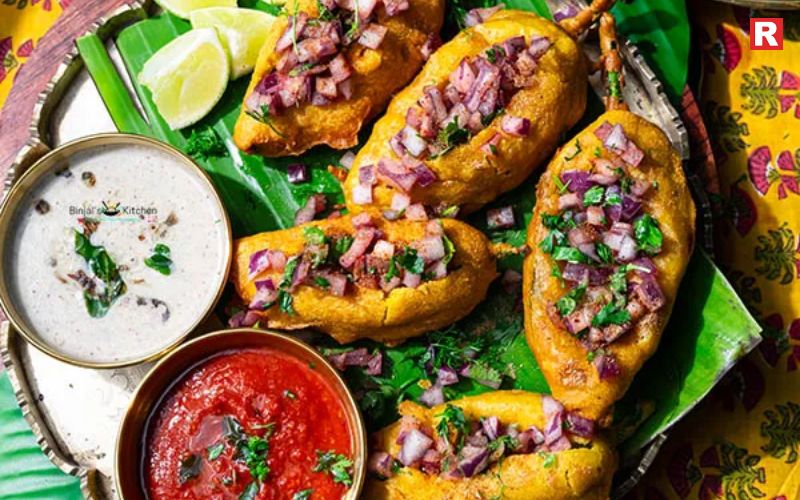
For spice lovers, Mirchi Bajji is a must-try. Green chilies are stuffed with tangy masala, dipped in gram flour batter, and deep-fried till golden. The best part is the balance between the fiery chili and the crispy outer layer.
You can find Mirchi Bajjis near Moazzam Jahi Market, Charminar, and roadside stalls all over the city. Some vendors even serve it with chopped onions, coriander, and lemon juice to add a fresh twist. It’s especially popular during the monsoon, when locals enjoy it with tea while watching the rain pour over the city’s old monuments.
5. Pathar Ka Gosht – A Royal Grilled Delight
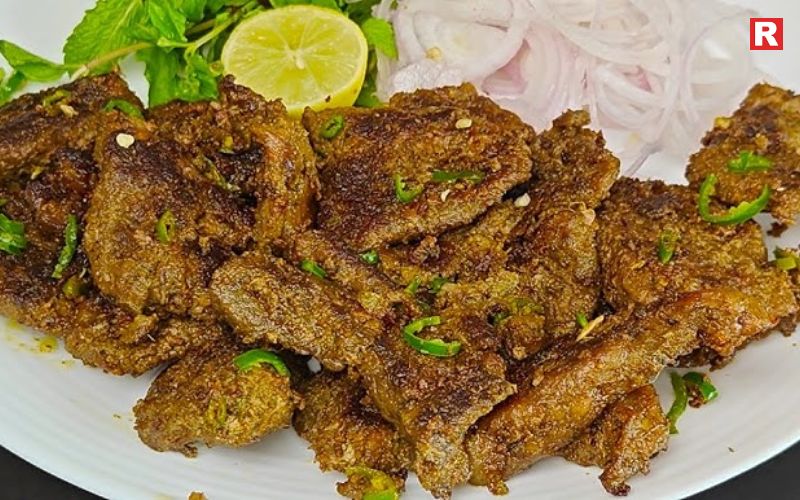
One of the most unique dishes from Hyderabad’s streets is Pathar ka Gosht, literally meaning “meat cooked on stone.” Pieces of marinated mutton are grilled on a hot granite stone, giving them a smoky, juicy flavor that’s truly special.
You can taste the best versions around Tank Bund, Charminar, and Old City areas. This dish traces its roots to the Nizam era, where soldiers used hot stones to cook meat in the open. Even today, it retains that rustic charm. The tenderness of the meat and the subtle spice make it a favorite among both locals and tourists.
6. Shawarma – The Middle Eastern Touch
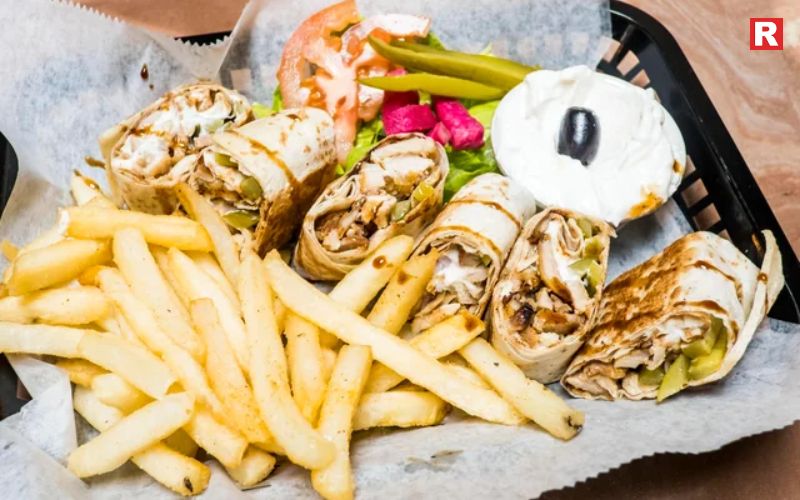
Hyderabad’s street food has embraced the Middle Eastern Shawarma with open arms. Found in nearly every corner of Mehdipatnam, Toli Chowki, and Banjara Hills, Shawarma is a quick, filling meal made of roasted chicken, pickled vegetables, and creamy garlic sauce wrapped in pita bread or khubus.
While originally a Lebanese dish, Hyderabad’s version has a spicier twist with Indian seasonings and mayonnaise. It’s one of the most loved late-night snacks in the city, especially among college students and young professionals. Whether you prefer the roll or the plate version, Shawarma never disappoints.
Also check: Top Iconic Street Foods from Every Indian State You Must Try
7. Dosa with Chicken Kheema – A Perfect Fusion
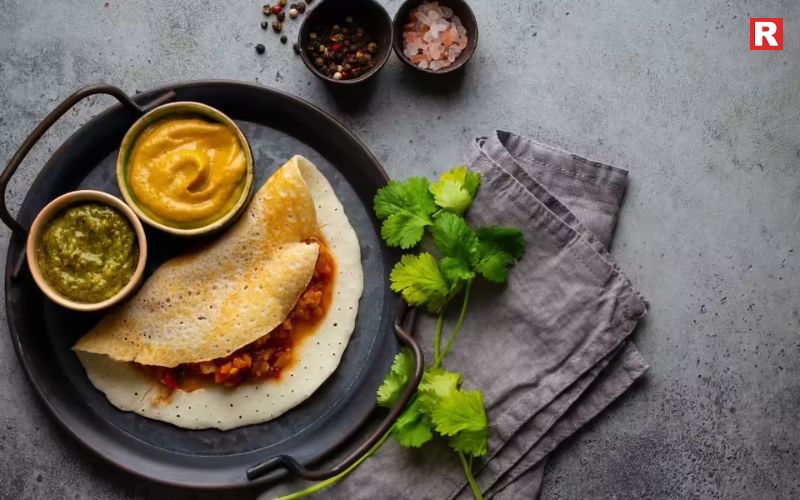
South Indian dosas are popular everywhere, but in Hyderabad, chefs took it a step further with Chicken Kheema Dosa. This dish brings together the crispy dosa and spicy minced chicken filling to create a mouthwatering fusion.
You can find this specialty in Ameerpet, RTC Cross Roads, and local tiffin centers across the city. It’s a power-packed breakfast or evening snack, offering both crunch and flavor in every bite. The combination of soft chicken, fiery masala, and the buttery dosa makes it a true crowd-pleaser.
8. Double Ka Meetha – The Sweet Ending
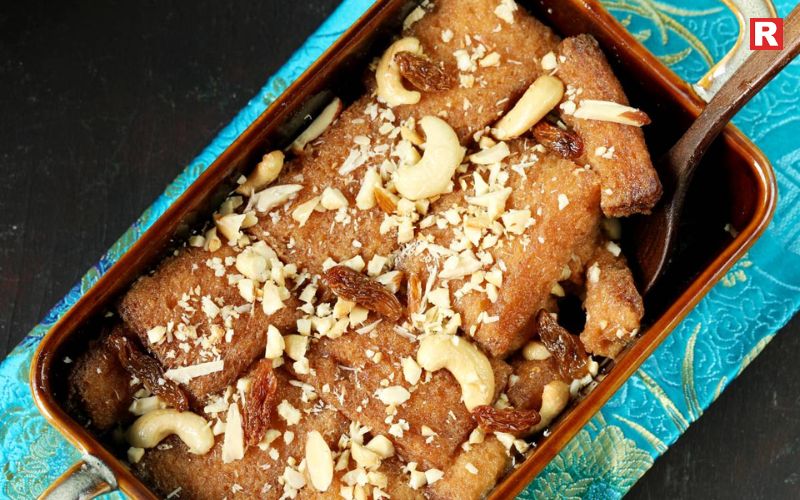
To end your food trail on a sweet note, Double Ka Meetha is a must. This royal dessert is made from fried bread slices soaked in milk, sugar, ghee, and dry fruits. It’s soft, rich, and melts in your mouth.
Found in markets like Nampally and Shahran Market, this dish reflects the Nizami love for indulgence. It’s often served at weddings and festivals, but even street vendors make it fresh and flavorful. A spoonful of Double Ka Meetha is enough to remind you of Hyderabad’s glorious royal past.
The Soul of Hyderabad’s Street Food
Hyderabad’s street food scene goes beyond just taste. It’s about the community, history, and culture that come alive in every bite. From morning chai to midnight shawarma, each dish tells a story of how traditions evolve with time. The mix of Nawabi heritage and modern creativity keeps Hyderabad’s food culture alive and exciting.
Street vendors play a big role in this legacy. Many of them have been serving the same dish for decades, maintaining authenticity while adapting to changing tastes. The love and effort behind each preparation make Hyderabad’s food unforgettable.
Check more: Top Bakery Brands in India You Must Try
8 Famous Non-Veg Dishes of Rajasthan That Reflect Its Royal Heritage
Top 6 Japanese Dishes to Try for an Authentic Taste of Japan
Best Areas to Explore Street Food in Hyderabad
If you’re planning a food trail, start at Charminar, where the aroma of kebabs and Irani chai fills the air. Walk towards Moazzam Jahi Market for crispy snacks and Tank Bund for grilled meat and desserts. For more modern options, Gachibowli and Banjara Hills have food trucks and fusion stalls offering new-age takes on traditional recipes.
Each corner of Hyderabad has something unique to offer — from the old city’s rustic charm to the modern flair of Hitech City.
Ready to Explore!
Hyderabad’s street food tells a story. It connects people to generations of flavors and traditions. From the famous Hyderabadi biryani to the simple Mirchi Bajji sold on roadside stalls, each bite carries the essence of the city. The streets are alive with the smell of spices, grilled meat, and freshly fried snacks. Irani cafés, busy markets, and late-night food stalls are part of the city’s daily rhythm. Tourists and locals gather around these spots, sharing conversations and meals. The food is affordable, rich in taste, and full of character. For anyone visiting Hyderabad, the real experience is found in its lanes. Skipping fine dining for the local street food offers a taste of the city’s true spirit. These eight famous street foods are not just dishes — they are moments that capture Hyderabad’s soul.

Rajasthan, often called the land of kings, is famous for its grand forts, colorful culture, and royal lifestyle. Visitors often think of its deserts, palaces, and festivals. But there is another treasure in this state — its food. While many associate Rajasthani cuisine with vegetarian dishes like dal baati churma or gatte ki sabzi, its non-vegetarian food is equally remarkable. Rajasthani non-veg dishes have a long history. They are rooted in Rajput traditions and royal kitchens. These dishes were once prepared for warriors and kings. Many recipes used meat from hunting trips. Game meat, like mutton, rabbit, and chicken formed the main part of royal meals. The cooking style was designed to make the meat flavorful and long-lasting.
The dishes are often spicy, smoky, and rich. Ghee is used generously, and local spices like red chili, garlic, and coriander give each dish a distinct taste. Slow cooking was common to make the meat tender and the flavors deep. Rajasthan’s non-veg cuisine reflects the land itself — bold, intense, and full of character. Every dish tells a story of tradition, bravery, and royal indulgence. It is a culinary experience unlike any other in India.
Read more: 8 Famous Vegetarian Dishes of Uttar Pradesh and Their Timeless Legacy
5 Cities That Serve the Best Non-Vegetarian Street Food
Explore the Taste of Royalty
Here are eight famous non-veg dishes from Rajasthan that capture the essence of its royal and rustic flavors.
1. Laal Maas – The Fiery Soul of Rajasthan
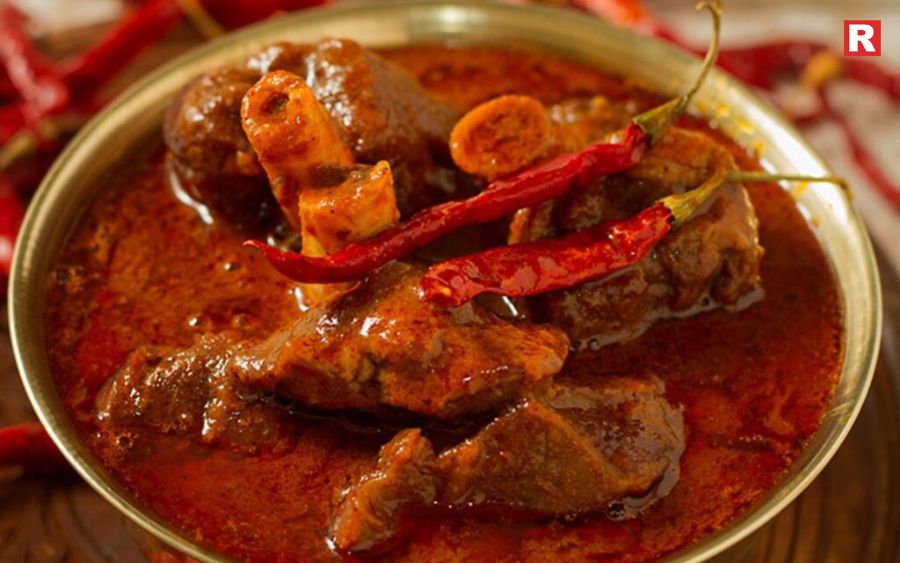
Laal Maas is the pride of Rajasthani non-veg cuisine. The name translates to “red meat,” and it truly lives up to it. This mutton curry is known for its deep red color and bold, spicy flavor. It is cooked with Mathania red chilies, garlic paste, curd, and ghee, giving it a smoky and rich texture. Traditionally, it was prepared for Rajput kings after their hunting expeditions. They preferred spicy food that matched their warrior spirit. Today, Laal Maas is served in almost every Rajasthani restaurant. It pairs beautifully with bajra roti, missi roti, or steamed rice. Its heat and aroma make it unforgettable for anyone who loves spicy food.
Know more: Top 5 States With the Spiciest Food in India
2. Safed Maas – The Royal Creamy Delight
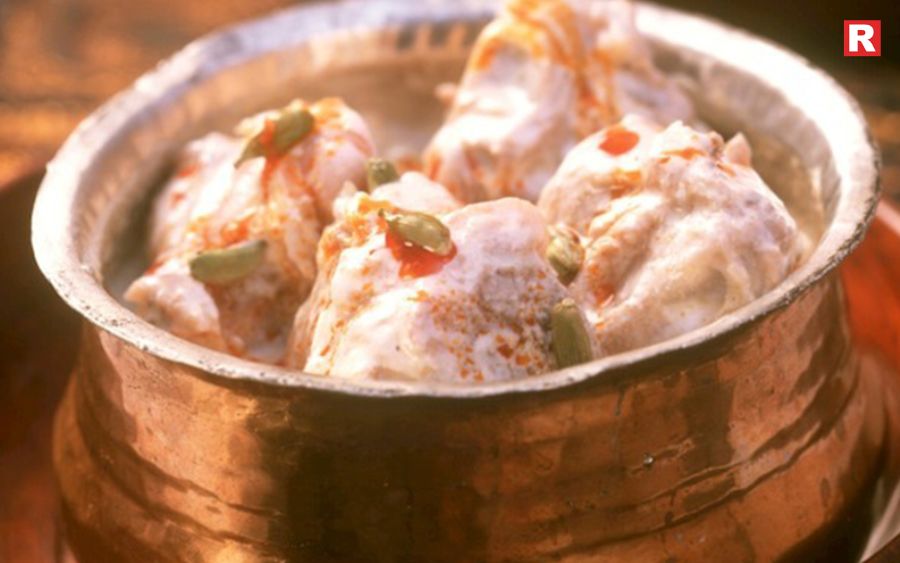
Safed Maas is the perfect opposite of Laal Maas. It’s a white, creamy mutton curry made with curd, cashew paste, almond paste, and fresh cream. The dish is mild in taste but rich in texture. It was a royal favorite in the kitchens of Mewar and Jaipur. The use of nuts, cream, and saffron made it a dish fit for the kings. Safed Maas reflects how Rajasthani cuisine isn’t only about spice—it’s also about balance and sophistication. The gravy is silky, with a subtle sweetness that enhances the tender meat. It is best enjoyed with butter naan or jeera rice.
3. Jungli Maas – The Hunter’s Classic
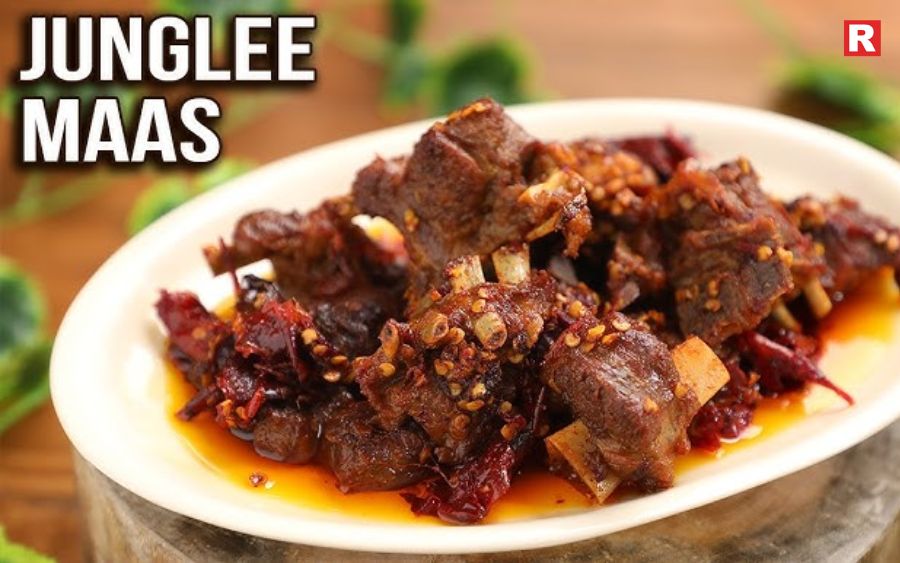
Jungli Maas is one of the oldest Rajasthani meat dishes. The recipe comes from the hunting days of the Rajputs. It was cooked with just three ingredients—meat, ghee, and red chilies. Since the royals used to prepare it during hunts, they didn’t have access to a variety of spices. Yet the dish turned out rich in flavor due to the slow-cooking technique and pure ghee. Even today, Jungli Maas stands out for its simplicity and rustic charm. The smoky aroma and spicy ghee coating make it one of the purest forms of Rajput cooking.
4. Banjara Gosht – The Desert’s Rustic Treasure
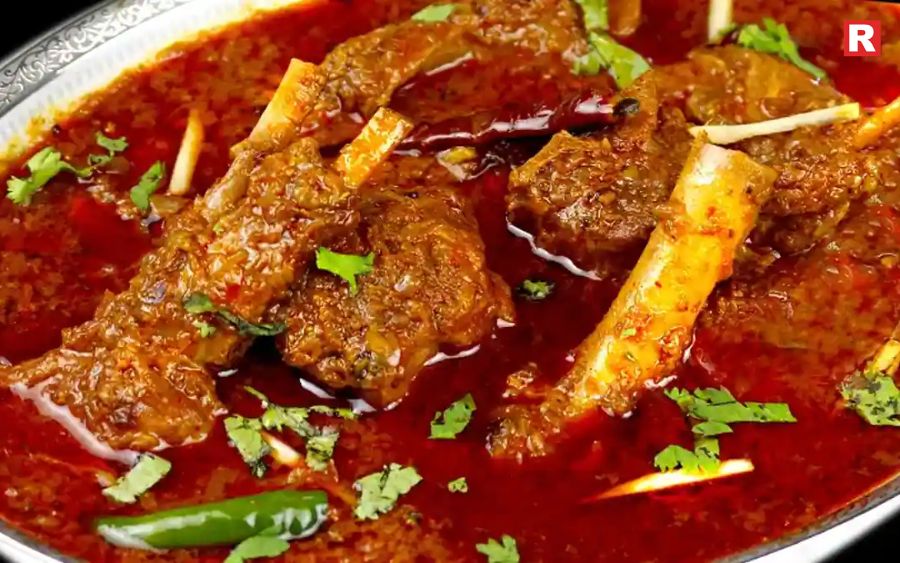
Banjara Gosht takes inspiration from the nomadic Banjaras of Rajasthan. These communities cooked food over open fires, using simple spices and local ingredients. The dish features mutton cooked with onions, garlic, tomatoes, and a blend of desert spices. What makes it unique is its smoky, earthy flavor. It is neither too spicy nor too mild—just perfectly balanced. The rich aroma of slow-cooked mutton and ghee gives it a comforting taste that captures the spirit of Rajasthani countryside cooking.
5. Khad Khargosh – The Hidden Royal Dish
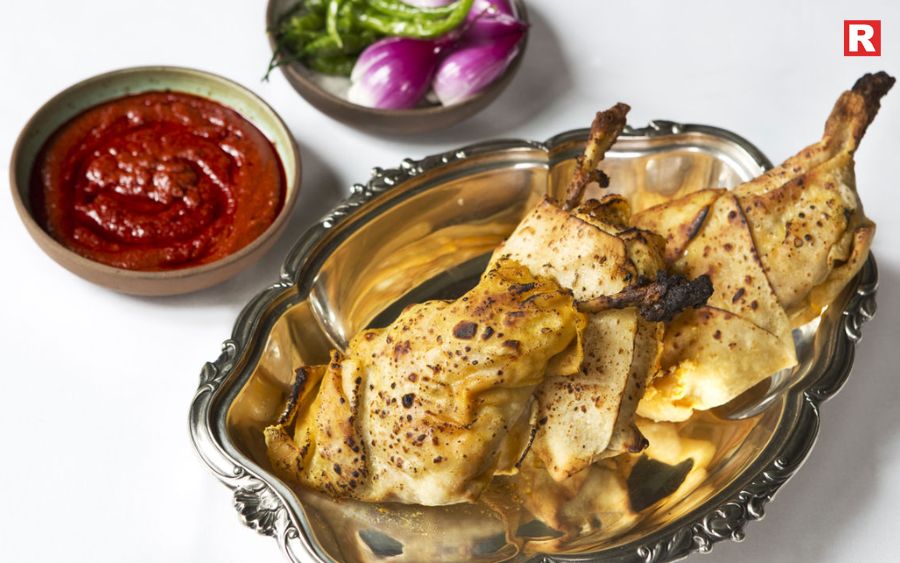
Khad Khargosh is one of Rajasthan’s most unique and lesser-known non-veg dishes. Traditionally, it was made using rabbit meat. The meat was marinated in yogurt, garlic, and spices, wrapped in dough or leaves, and then slow-cooked underground. This special cooking method locked in the smoky flavors and gave the meat a soft, juicy texture. Khad Khargosh was once a royal delicacy during hunting seasons. Though rare to find today, some heritage restaurants in Rajasthan still serve a version of it, keeping the old tradition alive.
Also check: Top 7 Regional Indian Thali Platters That Showcase Culinary Diversity
6. Mohan Maas – The Dish of Maharajas
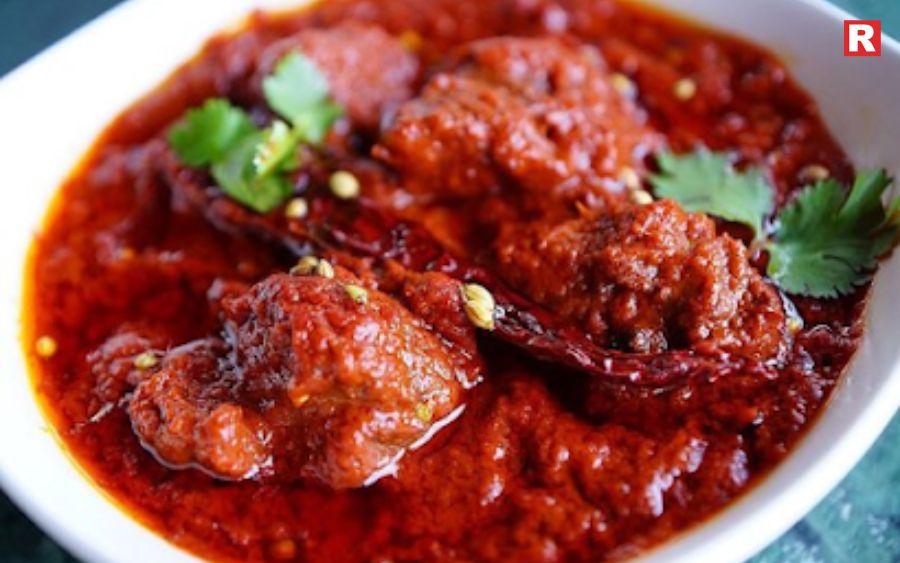
Mohan Maas is one of the most luxurious non-veg dishes in Rajasthan. It was created in the royal kitchens for kings and nobles who loved rich, subtle flavors. The dish is made using tender mutton cooked slowly in milk, cream, and mild spices like cardamom and cinnamon. The result is a velvety, aromatic curry that melts in your mouth. Unlike other spicy dishes, Mohan Maas focuses on elegance. It represents how Rajasthani cuisine balances power and poise in every bite.
7. Rajasthani Chicken Curry – Bold and Flavorsome
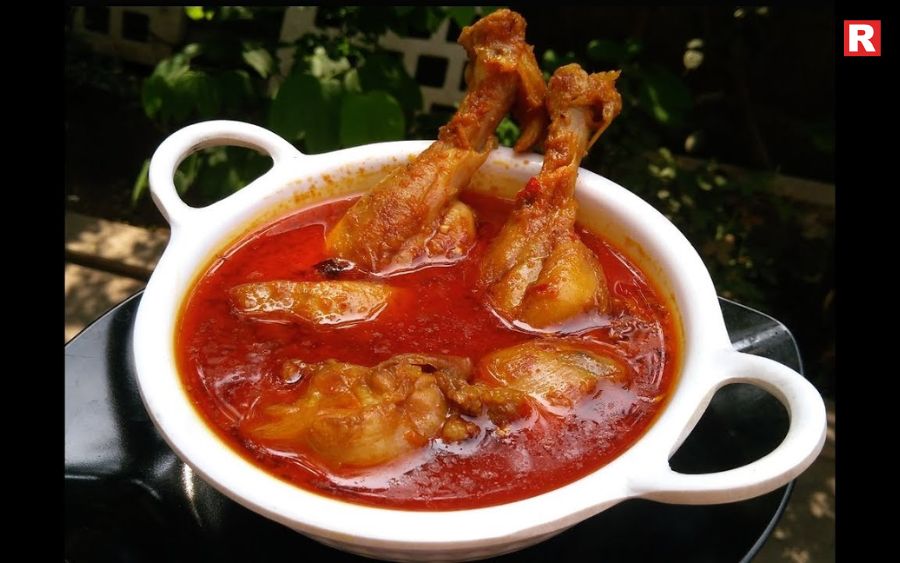
Chicken curry in Rajasthan is very different from other parts of India. It’s thicker, darker, and more robust in flavor. The curry is made with curd, onion, garlic, and a generous mix of red chilies, coriander, and turmeric. Each household has its own variation, but the use of local spices gives it a distinct Rajasthani touch. It is often served with chapati or rice and is a staple in both rural and urban homes. This dish shows how Rajasthani cooking uses everyday ingredients to create unforgettable taste.
8. Sooley – The Smoky Grilled Surprise
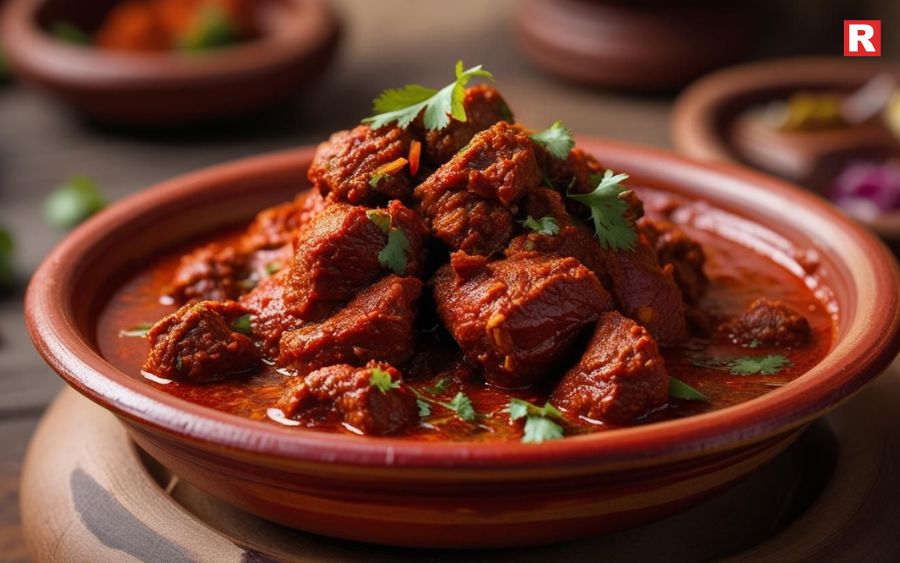
Sooley is Rajasthan’s take on grilled meat. Originating from the Mewar region, it consists of marinated meat skewers grilled over coal or wood fire. The meat—usually lamb or chicken—is marinated with garlic, chili, and lemon juice, giving it a perfect balance of spice and tang. Sooley is loved as a snack or starter, often served with mint chutney or curd dip. The smoky flavor makes it a favorite among barbecue lovers.
The Rajput Influence on Rajasthani Cuisine
The Rajputs played a major role in shaping Rajasthani non-veg dishes. Their warrior lifestyle and hunting traditions inspired recipes that celebrated strength and luxury. Hunting trips often led to innovative dishes like Jungli Maas and Khad Khargosh, which used wild game meat and simple ingredients. In royal kitchens, chefs created rich and creamy dishes like Safed Maas and Mohan Maas using dry fruits, milk, and saffron. This combination of royal luxury and warrior simplicity defines Rajasthani cuisine today.
Check more: 7 Iconic Paneer Dishes to Try at Home: The Taste of India’s Favorite Ingredient
11 Famous Non-Vegetarian Dishes of Kerala That You Must Try
11 State Bhawan Canteens in Delhi to Enjoy Authentic Flavors of Indian Cuisine
Spices That Define the Flavor
The magic of Rajasthani non-veg food lies in its spice mix.
- Mathania red chili: Adds color and fiery taste.
- Garlic: Gives a strong, aromatic flavor.
- Coriander and cumin: Balance the spice and aroma.
- Ghee: Provides richness and depth. These spices are blended with local techniques that make every dish taste authentic and distinct.
Perfect Pairings to Try
Non-veg Rajasthani dishes go best with bajra roti, missi roti, or plain rice. To tone down the spice, locals often pair them with chaach (buttermilk) or curd. If you want a true royal experience, enjoy Laal Maas or Mohan Maas with freshly baked rotis and a side of pickled onions.
Happy Eating!
Rajasthan’s non-vegetarian dishes are a part of the state’s royal heritage. Each dish tells a story of courage, tradition, and a deep love for rich flavors. The recipes have been passed down through generations, from royal kitchens to local homes, keeping the traditions alive. The cuisine is known for its bold spices, generous use of ghee, and slow-cooked methods that bring out the natural flavors of the meat. Dishes like Laal Maas, with its fiery red spice, and Mohan Maas, creamy and aromatic, show the diversity and richness of Rajasthani cooking. Visitors exploring Jaipur, Jodhpur, or Udaipur get more than just sightseeing. They experience the true taste of the state through these legendary dishes. Every bite is a journey into Rajasthan’s history, culture, and royal lifestyle. These eight famous dishes showcase the soul of the region and the legacy of its royal kitchens.

Kerala, known as God’s Own Country, is famous for its scenic backwaters, lush greenery, and rich food traditions. The state’s cuisine is a celebration of flavor, culture, and history. Its non-vegetarian dishes reveal much about the land and its people—bold, diverse, and full of life. Over the centuries, Kerala’s food has been shaped by Arab, Portuguese, and Dutch influences. These traders brought new ingredients and cooking styles that blended beautifully with local traditions. Coconut, curry leaves, black pepper, and tamarind became the heart of Kerala’s cooking. Every dish tells a story of spice, sea, and soil.
From the coastal villages to the highlands, food in Kerala changes with geography. The coast offers fresh fish, prawns, and crabs cooked in spicy gravies. The hills favor slow-cooked meats rich with pepper and coconut. Each recipe balances heat, sourness, and aroma in perfect harmony. For those who love bold flavors and authentic regional food, Kerala’s non-vegetarian cuisine offers a memorable journey. It is not just a meal—it is an experience that captures the essence of Kerala’s heritage and its timeless love for spice.
Read more: 8 Famous Vegetarian Dishes of Uttar Pradesh and Their Timeless Legacy
12 Famous Street Foods of Patna You Must Try Eating
What Makes Kerala’s Non-Vegetarian Food Unique
Kerala’s non-vegetarian cuisine stands out for its use of fresh coconut, curry leaves, black pepper, and tamarind. Each dish tells a story—from the coastal regions that depend on seafood to the highlands where meat dishes dominate. The cooking methods—like roasting, steaming, and frying—bring out deep, layered flavors.
Another distinct feature is the balance between spice and coconut milk, giving every dish its signature taste. The cuisine also highlights the influence of foreign traders who introduced ingredients like cardamom and clove, now staples in Kerala cooking.
Discover the Best of Kerala
Here are 11 must-try non-vegetarian dishes from Kerala that showcase the state’s culinary richness.
1. Kerala Fish Curry (Meen Curry)
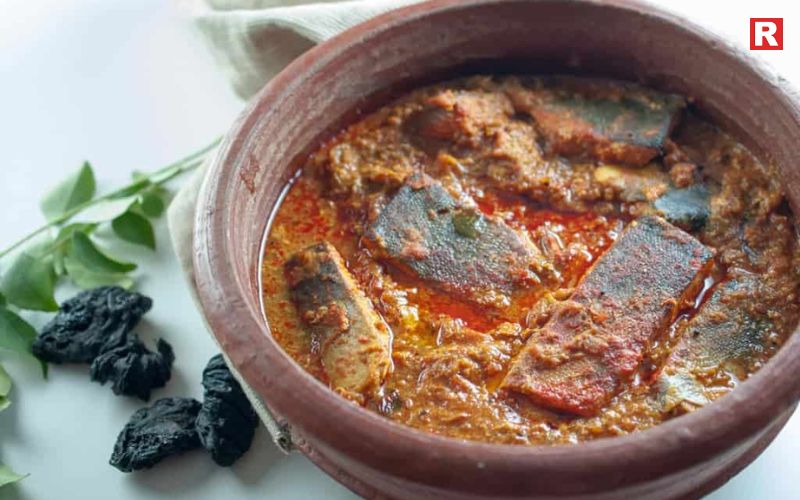
No trip to Kerala is complete without tasting its famous Meen Curry. This fiery red fish curry is cooked with tamarind or kudampuli (Malabar tamarind), which gives it a tangy flavor. The curry is often made using seer fish, mackerel, or sardines, simmered in a rich gravy of red chilli, turmeric, and shallots. The combination of spice and sourness pairs perfectly with steamed rice or tapioca (kappa). Every coastal household in Kerala has its own version of this dish, making it a true reflection of local taste and tradition.
2. Malabar Chicken Biryani
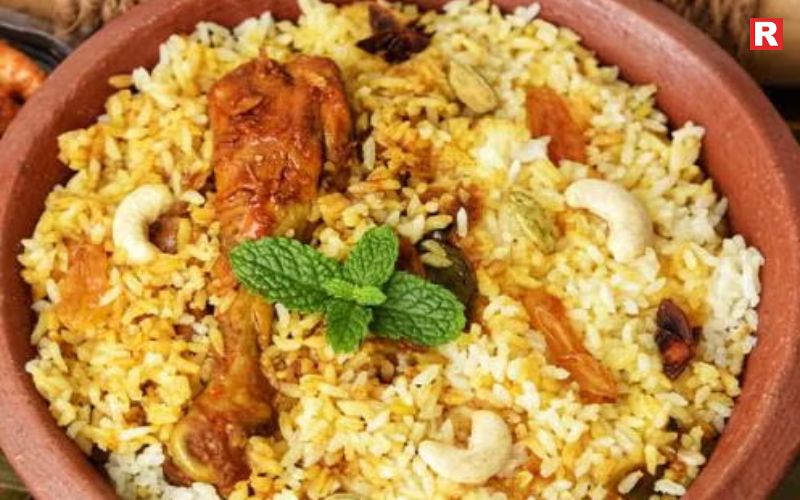
A culinary gem from North Kerala, Malabar Chicken Biryani is a festive favorite. It is lighter than the Hyderabadi version but equally aromatic. The dish is prepared using jeerakasala rice, tender chicken marinated in spices, and slow-cooked with caramelized onions, mint, and ghee. The secret lies in layering and steaming the biryani over low heat, known as the dum method. Served with raita and boiled egg, it’s a complete meal that reflects Kerala’s royal food legacy from the Malabar region.
3. Prawn Moilee
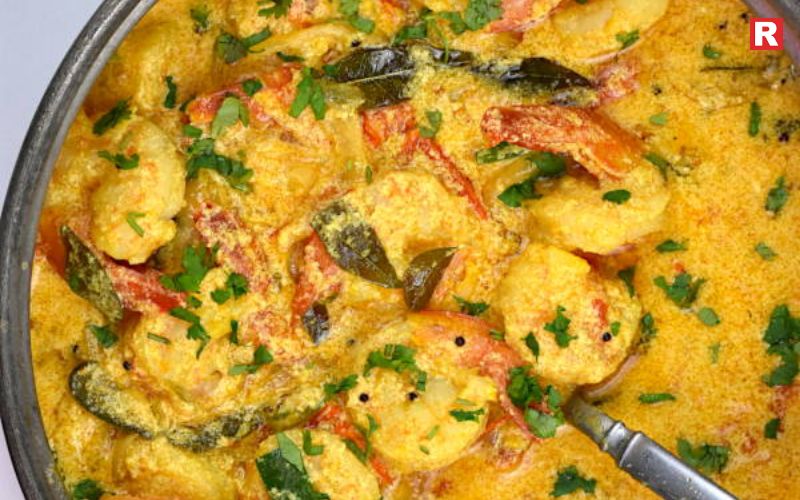
Prawn Moilee is a creamy coconut milk curry with a mild yet flavorful taste. Unlike spicy Kerala curries, this dish has a subtle sweetness that comes from the coconut milk and a hint of turmeric. It’s often served with appam or idiyappam for breakfast or lunch. The fresh prawns soaked in the rich, golden gravy make this dish a coastal delight, especially popular in households near Kochi and Alappuzha.
Know more: 5 Cities That Serve the Best Non-Vegetarian Street Food
4. Duck Roast (Tharavu Varattiyathu)
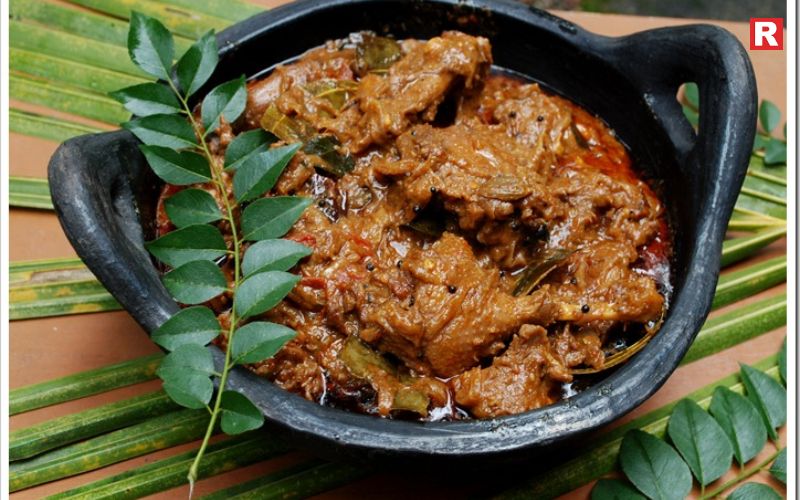
In the backwater regions of Kuttanad, Duck Roast is a must during festive occasions. The duck is slow-cooked with roasted coconut paste, onions, and a blend of traditional Kerala spices like black pepper and garam masala. The result is a dark, thick curry bursting with smoky and spicy flavors. Usually enjoyed with rice, appam, or puttu, this dish represents Kerala’s deep-rooted culinary traditions and love for rich gravies.
5. Kerala Beef Fry (Beef Ularthiyathu)
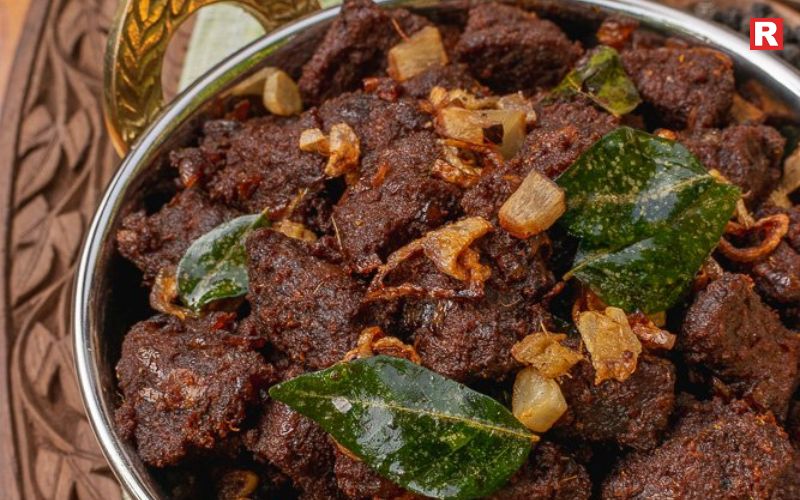
A dish that defines the soul of Kerala’s spice culture, Beef Ularthiyathu is a fiery, dry-fried beef preparation. Cubes of beef are cooked with coconut slices, crushed pepper, and curry leaves until they turn dark brown and crispy. This dish is particularly famous in Central Kerala, especially in Christian households. It is often served with parotta, a flaky layered bread, making it one of Kerala’s most iconic combinations.
6. Karimeen Pollichathu
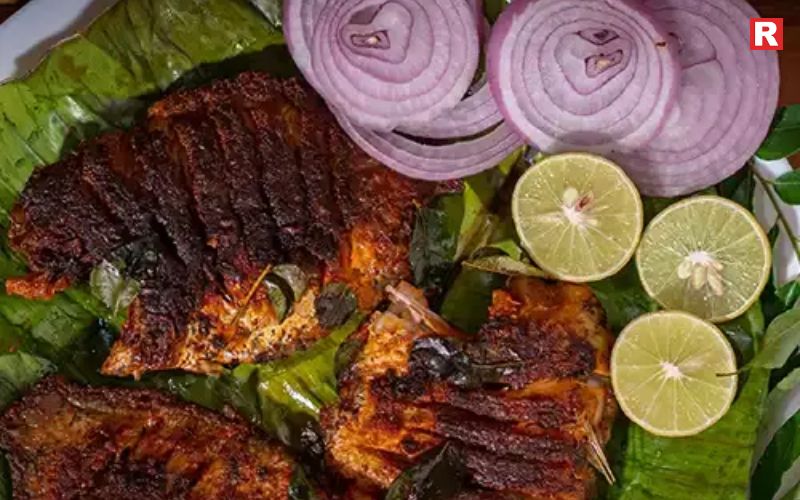
Karimeen or pearl spot fish is Kerala’s state fish and a celebrated delicacy. In Karimeen Pollichathu, the marinated fish is wrapped in a banana leaf and grilled or steamed, allowing the flavors of the masala and leaf to infuse deeply. The marinade is made with red chili, lemon juice, coconut oil, and shallots. The dish has a smoky aroma and rich flavor, and it’s a must-try for seafood lovers visiting the backwaters of Alleppey or Kumarakom.
Also check: 10 Awadhi Cuisine Classics You Must Try at Least Once
7. Chicken Stew (Kozhi Stew)
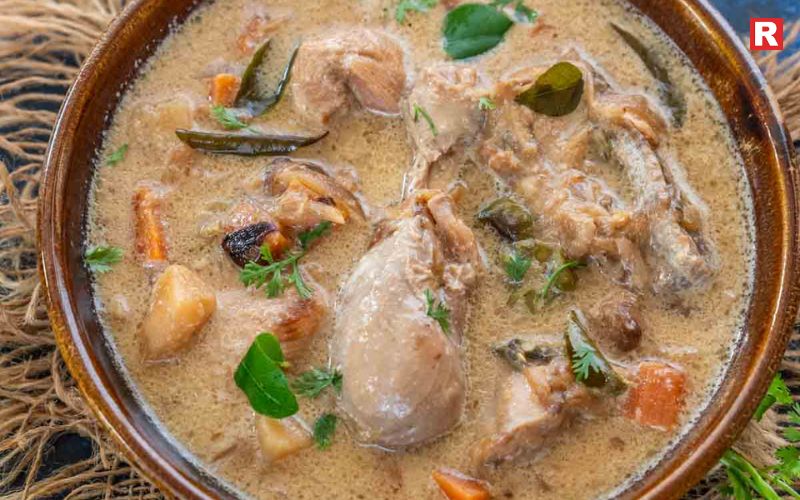
For those who prefer milder flavors, Kozhi Stew is a comforting dish. This coconut milk-based chicken curry is light, aromatic, and delicately spiced with cloves, cardamom, and cinnamon. Traditionally served with appam (soft rice pancakes), it’s a popular breakfast dish in Syrian Christian homes of Kerala. The creamy texture and subtle flavor make it a favorite for both locals and visitors.
8. Crab Curry (Njandu Curry)
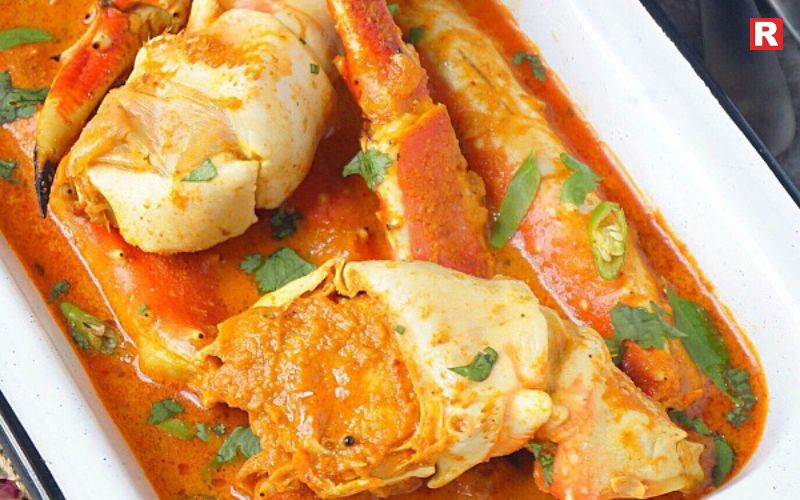
Kerala’s coastline ensures the freshest seafood, and Njandu Curry or crab curry is proof of that. The crabs are cooked in a thick, spicy gravy made from roasted coconut, chili, and coriander powder. The flavor is intense and deeply satisfying, especially when eaten with rice or kappa. This dish is a highlight in seafood restaurants across Kochi and Kozhikode and is often enjoyed with a squeeze of lime to balance the heat.
9. Mutton Curry (Erachi Curry)
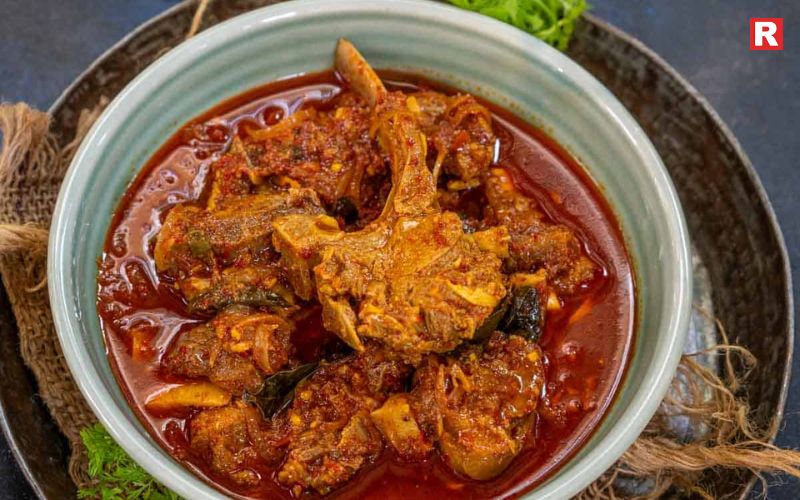
Erachi Curry is a traditional mutton curry slow-cooked to perfection. The mutton is marinated in a blend of turmeric, chili, and garam masala before being simmered with onions, tomatoes, and coconut. This dish is a Sunday lunch staple across Kerala, often served with rice, porotta, or even puttu. The depth of flavor comes from the slow cooking method that allows the meat to absorb every spice.
10. Kerala Chilli Chicken
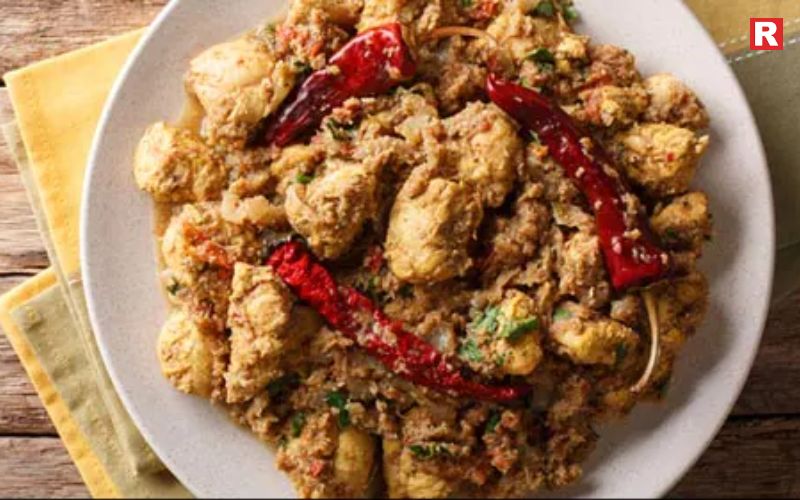
Kerala’s take on the classic Chilli Chicken adds an extra punch of spice. Prepared with crushed black pepper, curry leaves, and coconut oil, it has a distinctive South Indian flavor. The dish is slightly dry, coated with thick masala, and served hot with parotta. It’s a popular item at local thattukadas (street food stalls), especially in cities like Kochi and Thiruvananthapuram.
Check more: Top 5 Street Foods in Jodhpur You Can’t Miss
Assamese Food: 8 Assamese Foods Which Hold the Traditions and Taste
11 State Bhawan Canteens in Delhi to Enjoy Authentic Flavors of Indian Cuisine
11. Kappa with Fish Curry
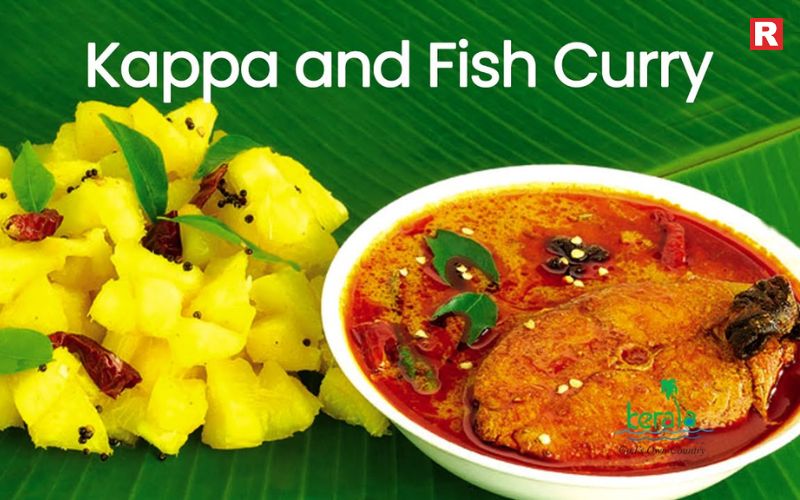
This humble dish is a local favorite, combining kappa (tapioca) with spicy fish curry. The starchy tapioca balances the heat of the curry, creating a perfect blend of textures and flavors. Originally considered a poor man’s meal, Kappa and Meen Curry has now become a popular delicacy served in restaurants across Kerala. It reflects the resourcefulness and simplicity of Kerala’s food culture.
The Experience of Tasting Kerala
Eating non-vegetarian food in Kerala is not just about the dish—it’s about the experience. Meals are traditionally served on banana leaves, accompanied by rice, papadam, and chutneys. The aroma of curry leaves and coconut oil fills the air, creating an unforgettable sensory experience. Whether you’re in a coastal village savoring fresh seafood or at a traditional Christian feast tasting spicy beef and duck, every bite connects you to Kerala’s land, people, and history. Each dish tells a story of spice routes, community feasts, and culinary traditions passed down for generations. So, the next time you visit Kerala, don’t just explore the beaches and backwaters. Sit down for a traditional meal, and let the flavors of Kerala tell their delicious story on your plate.

Patna, the capital of Bihar, is a city known for its rich history and vibrant culture. Beyond its heritage sites and bustling streets lies a world of unforgettable flavors. For food lovers, Patna is a hidden gem. The air is filled with the smell of spices, sweets, and freshly fried snacks. Every corner has a stall offering something special. From time-honored Bihari dishes to quick bites loved across generations, the city’s street food reflects its spirit and traditions.
The streets are busy, but the food stalls are busier. Locals gather around during mornings and evenings, enjoying their favorite snacks with friends and family. Vendors prepare food in front of customers, keeping the experience fresh and authentic. Each dish tells a story — of local ingredients, family recipes, and regional pride. Whether it’s the smoky Litti Chokha, crispy samosas, tangy chaats, or syrup-soaked jalebis, Patna’s street food scene has something for every taste. Visitors who explore these streets don’t just eat; they experience the culture in its most flavorful form. For anyone visiting Patna, tasting these iconic street foods is a must.
Read more: 8 Famous Vegetarian Dishes of Uttar Pradesh and Their Timeless Legacy
5 Cities That Serve the Best Non-Vegetarian Street Food
Find The Taste From Patna
Discover Patna’s vibrant street food culture, where traditional flavors, local spices, and timeless recipes create unforgettable culinary experiences for every visitor.
1. Litti Chokha
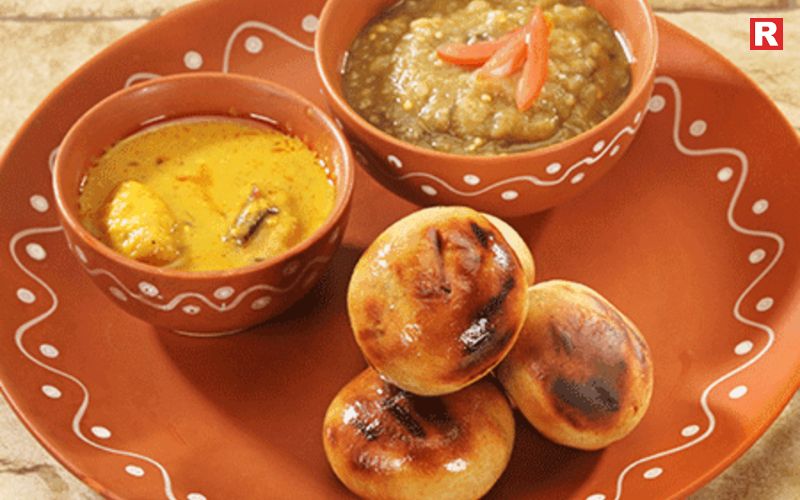
Litti Chokha stands at the core of Bihari food culture. Litti is a wheat flour ball filled with spiced gram flour and roasted over coal, giving it a smoky flavor. Chokha is prepared with mashed roasted eggplant, tomatoes, and potatoes, seasoned with mustard oil, salt, and spices. Together, they create a rustic, earthy taste that reflects Bihar’s culinary roots. In Patna, people enjoy it at local stalls during lunch or at famous places like Bihari Rasoi. It’s filling, authentic, and deeply satisfying.
- Traditional dish of Bihar
- Roasted over coal for smoky flavor
- Served with spicy, tangy chokha
- Best enjoyed hot at local stalls
2. Samosa
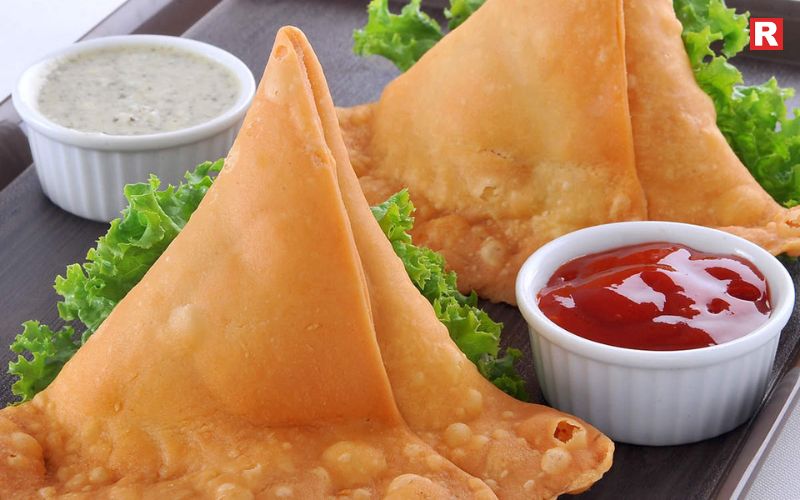
Patna’s samosas are crisp, golden triangles packed with flavor. The outer layer is flaky and crunchy, while the inside has a spicy potato mix. Some vendors also add peas or lentils, making the filling richer. They’re usually served with sweet tamarind or refreshing mint chutney. Locals love having hot samosas with tea, especially in the mornings. Streets near Boring Road and Patna Junction are filled with vendors selling freshly fried samosas to office-goers and students. The taste is simple but unforgettable.
- Crispy outer layer with spicy filling
- Often enjoyed with chutneys and chai
- Popular morning street snack
- Found near Boring Road and Patna Junction
3. Kachori
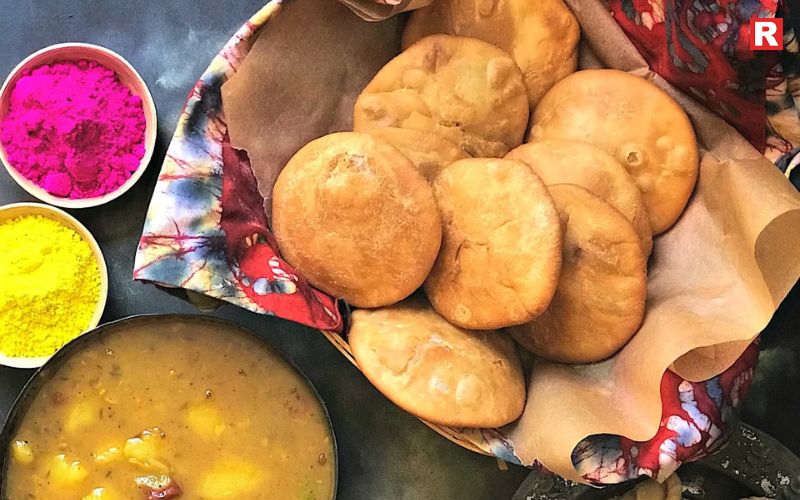
Kachori in Patna has a distinct taste that sets it apart. The outer crust is crisp, and the inside is packed with spicy urad dal or lentil filling. Vendors fry it until golden brown, giving it a perfect crunch. It’s usually paired with tangy chutneys or creamy yogurt, balancing the spice beautifully. Many locals head to stalls like Maurya Kachoriwala, which have served this snack for generations. It’s best eaten fresh, right out of the fryer. Whether as breakfast or an evening bite, Kachori is a favorite among Patna’s food lovers.
- Spicy lentil filling inside crisp pastry
- Often served with chutney or yogurt
- Famous at Maurya Kachoriwala
- Best enjoyed hot and fresh
Know more: 10 Awadhi Cuisine Classics You Must Try at Least Once
4. Jalebi
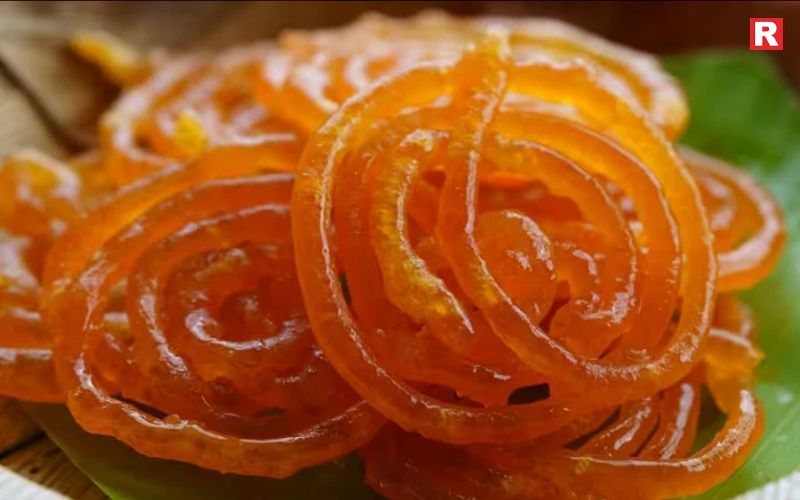
Jalebi is a beloved sweet across India, but in Patna, it has its own charm. Made by frying fermented batter in circular patterns, then soaking it in sugar syrup, the jalebi here is soft, juicy, and brightly colored. Locals enjoy it as a breakfast treat or dessert, often pairing it with a glass of warm milk. Ashok Jalebi Wala is a popular stop for fresh, hot jalebis early in the morning. The sweetness has a slight tang, making every bite addictive. It’s simple, traditional, and full of nostalgia.
- Bright orange, soft, and juicy
- Often eaten with milk in the morning
- Balanced sweet and tangy taste
- Best enjoyed fresh from Ashok Jalebi Wala
5. Chaat
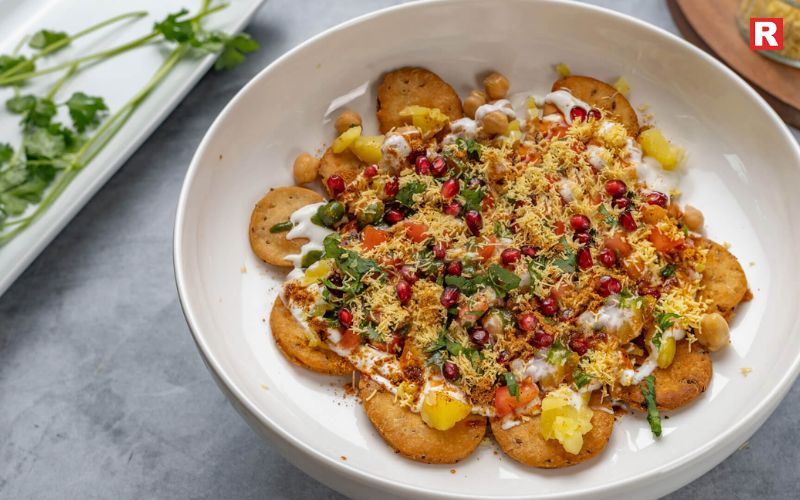
Chaat in Patna is a burst of flavors and textures. Boiled potatoes, chickpeas, onions, chutneys, and spices come together to create a tangy, spicy, sweet, and crunchy dish. Street vendors customize each plate as per taste, adding extra chutney or spice on request. Patna City Market and Kankarbagh are known for their busy chaat stalls, often surrounded by locals in the evenings. It’s more than a snack—it’s a social experience where friends gather to share stories over plates of flavorful chaat.
- Mix of tangy, spicy, and sweet flavors
- Customizable with extra chutney or spices
- Found widely in Patna markets
- Best enjoyed in the evening
6. Panipuri / Golgappa
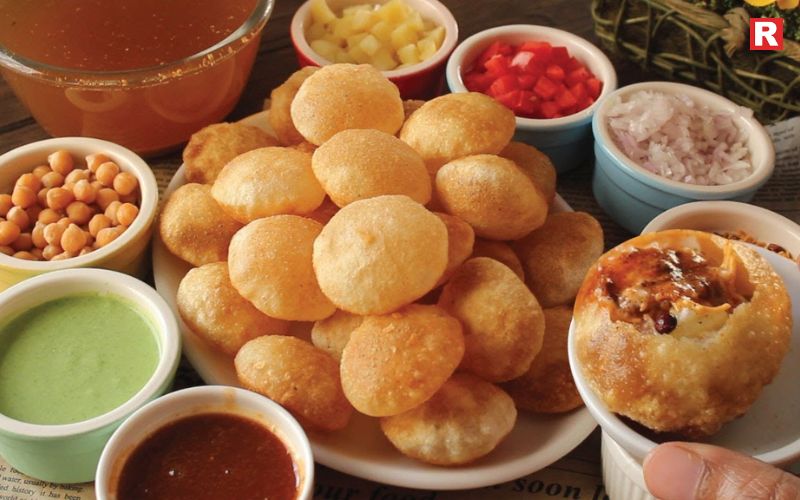
Panipuri, known as golgappa in Patna, is a street food favorite. Crispy puris are filled with spicy, tangy water, mashed potatoes, and chickpeas. Vendors make each puri on the spot, creating a fun and interactive eating experience. The flavor is bold, with the right mix of spice and sweetness. Boring Road is famous for its panipuri stalls, often crowded with regulars who have their preferred spice level. Locals believe no visit to Patna’s streets is complete without a round of fresh, flavorful golgappas.
- Crispy puris with tangy, spicy water
- Prepared fresh for each customer
- Popular at Boring Road stalls
- A must-try street snack
7. Momo
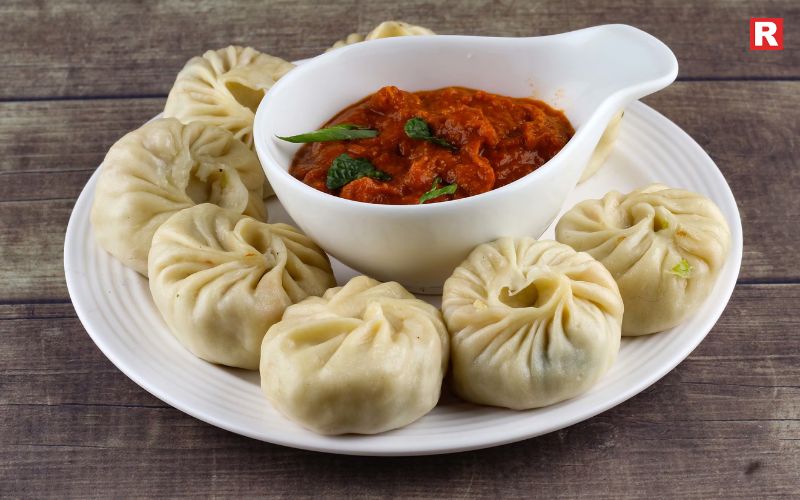
Momos have found a special place in Patna’s street food scene. Originally from the north-east, these steamed dumplings are now loved by locals. Filled with chicken, vegetables, or paneer, they are soft, juicy, and served piping hot. The highlight is the fiery red chutney that gives every bite a bold punch. In winter, momo stalls near Patna College and Kankarbagh become gathering spots for students and families. People enjoy standing by the steaming baskets, dipping each momo into the spicy sauce. The flavors are simple yet deeply satisfying, making it a popular evening snack.
- Soft, steamed dumplings with chicken, paneer, or vegetable filling
- Served with spicy red chutney
- Popular near Patna College and Kankarbagh
- A winter evening favorite
8. Thekua
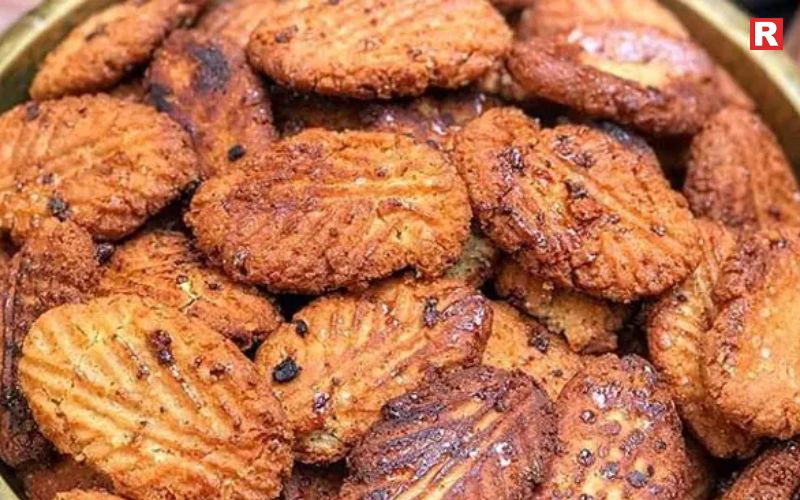
Thekua is one of Bihar’s most loved traditional sweets, and Patna’s streets offer some of the finest versions. Made from wheat flour, jaggery, and ghee, it is shaped into rounds or patterns and deep-fried until golden. The texture is crisp on the outside and slightly soft inside. Traditionally prepared during Chhath Puja, it carries cultural significance. Many locals enjoy Thekua with tea, especially in the evenings. Its long shelf life makes it a popular snack to carry during travel. The taste is rich and earthy, with the jaggery giving it a natural sweetness that lingers.
- Traditional sweet made from wheat flour and jaggery
- Crunchy outside, soft inside
- Commonly made during Chhath Puja
- Loved as a tea-time snack
Also check: Top 5 Street Foods in Jodhpur You Can’t Miss
9. Bhujia / Namkeen
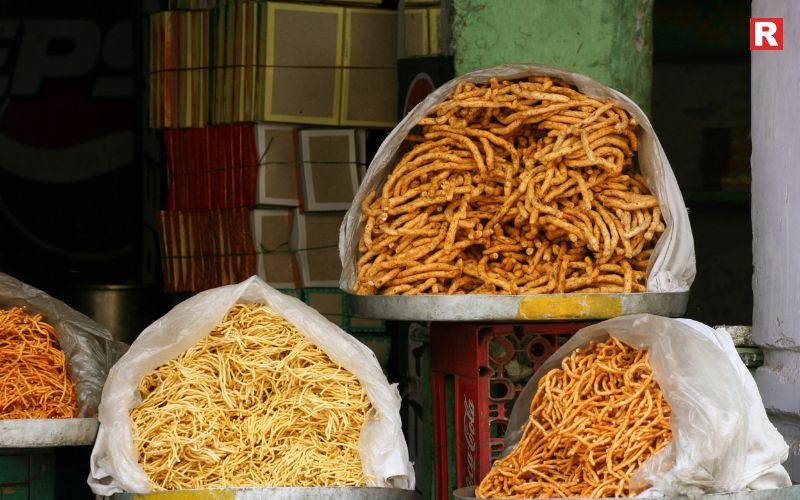
Bhujia, also called namkeen, is a simple but addictive snack found across Patna. It’s made using gram flour mixed with spices, then deep-fried into thin, crunchy strands. Many local shops make fresh batches daily, filling the air with a tempting aroma. People often buy it by the kilo to snack at home, during travel, or at work. A popular local mix combines bhujia with roasted peanuts, adding texture and flavor. Though it seems basic, its crispness and perfect saltiness make it a staple in Patna’s snack culture.
- Made with spiced gram flour and deep-fried
- Freshly prepared daily at local shops
- Often mixed with peanuts for added crunch
- A go-to snack for travel and tea breaks
10. Chana Ghugni
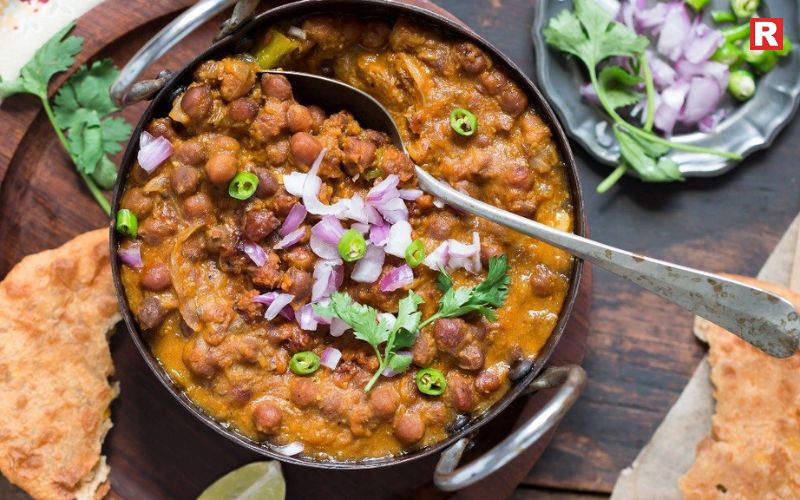
Chana Ghugni is a hearty street dish made from boiled chickpeas cooked with onions, green chilies, and mustard oil. Vendors prepare it fresh in large kadais, and the aroma alone draws crowds. The dish is tangy and spicy, often finished with a squeeze of lemon and chopped coriander. Found near busy markets, it’s a favorite for those wanting a quick yet filling bite. Locals enjoy it as an afternoon or evening snack, especially during cooler months. Its simplicity, paired with bold flavors, makes it one of Patna’s most loved street dishes.
- Spicy chickpea snack cooked with mustard oil
- Tangy, flavorful, and protein-rich
- Served hot with lemon and coriander
- Popular in local markets as a quick bite
11. Malpua
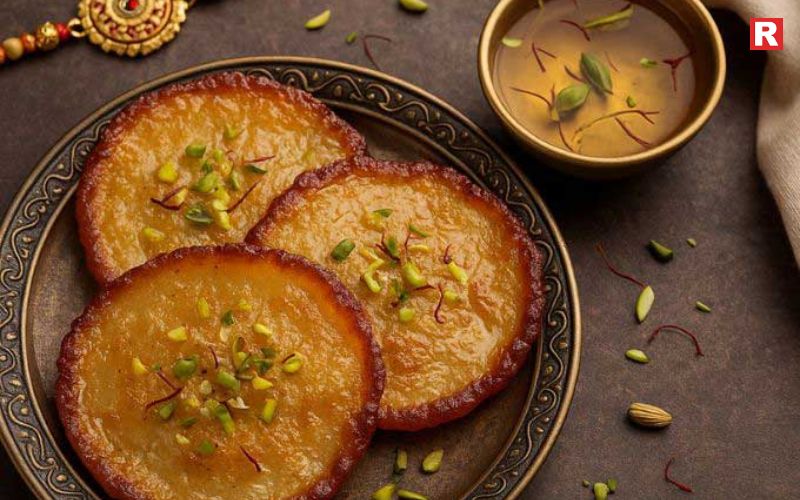
Malpua in Patna is a sweet indulgence that captures the essence of festive flavors. It’s made by frying a thick, sweet batter into pancakes, then soaking them in sugar syrup. The result is soft, fragrant, and rich. Vendors often serve it with rabri, a thick, sweetened milk, for extra decadence. Malpua is especially popular during festivals, but many sweet shops prepare it throughout the year. Locals often enjoy it hot, fresh from the pan. Its golden color, sweet aroma, and soft texture make it an irresistible treat for anyone with a sweet tooth.
- Sweet pancakes soaked in sugar syrup
- Often served with rich rabri
- Golden, fragrant, and soft
- Widely enjoyed during festivals and celebrations
12. Kulfi Falooda
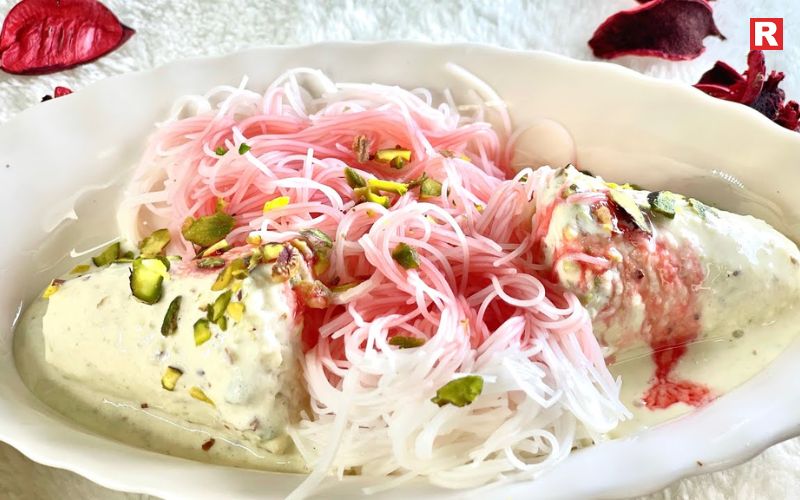
Kulfi Falooda is Patna’s answer to hot summer days. Thick, creamy kulfi flavored with cardamom or saffron is paired with falooda, rose syrup, and sometimes nuts. The dessert is cooling, rich, and beautifully layered. Shops like Royal Kulfiwala are famous for serving it fresh. Locals often stop by after dinner to enjoy a chilled kulfi falooda with family. The combination of creamy kulfi and sweet, floral falooda creates a dessert that’s both traditional and refreshing. It’s a beloved treat that leaves a lasting impression on anyone visiting the city.
- Creamy kulfi served with falooda and rose syrup
- Flavored with cardamom or saffron
- A perfect dessert for hot evenings
- Popular at local shops like Royal Kulfiwala
Check more: Assamese Food: 8 Assamese Foods Which Hold the Traditions and Taste
10 Must-Try Gujarati Dishes That Will Delight Your Taste Buds
Top 7 Regional Indian Thali Platters That Showcase Culinary Diversity
Taste the Best!
Patna’s street food reflects the city’s soul. It carries tradition, history, and everyday life in every bite. The streets are alive with the sound of sizzling oil, the aroma of spices, and the chatter of people enjoying their favorite snacks. From spicy, tangy chaats to smoky litti chokha and syrupy jalebis, each dish tells a story of the region’s rich culture. Street food in Patna is not just about taste; it is about shared moments. Families, friends, and strangers often gather around small stalls, eating together and exchanging smiles. These local flavors give visitors a deeper understanding of the city than any monument can. Whether someone craves a quick snack or a sweet indulgence, Patna offers something for every palate. Exploring these 12 famous street foods is like experiencing the heartbeat of the city through its flavors.

Assam, the gateway to Northeast India, is more than tea gardens and rolling hills. It is also a land where food reflects culture, tradition, and simplicity. Assamese cuisine is rooted in local ingredients, seasonal eating, and minimal spices. Unlike many other parts of India, where food is heavy and rich, Assamese dishes are light, refreshing, and earthy.
The food is deeply connected to festivals like Bihu, to village life, and to the rivers that run through the state. Rice, fish, herbs, and unique ingredients such as bamboo shoots and khar form the backbone of Assamese cooking. To understand Assam, one must taste its food. Here are eight Assamese foods that carry the traditions and flavors of this beautiful land.
Read more: 8 Famous Vegetarian Dishes of Uttar Pradesh and Their Timeless Legacy
5 Cities That Serve the Best Non-Vegetarian Street Food
The Essence of Assamese Cuisine
Assamese food is simple but deeply meaningful. The dishes are light, use minimal spices, and celebrate natural flavors. Ingredients like mustard oil, bamboo shoots, khar, and fresh herbs give the cuisine its distinct identity.
Fermentation, smoking, and alkaline cooking are techniques unique to Assam. These methods not only enhance taste but also preserve food in natural ways. Every dish tells a story of the land, the rivers, and the people who live close to nature.
Find Top 8 Assam Flavours
Explore Assam’s top eight flavours—tangy, smoky, and earthy dishes that celebrate tradition, local ingredients, and rich culinary heritage
1. Khar: The Signature Assamese Dish
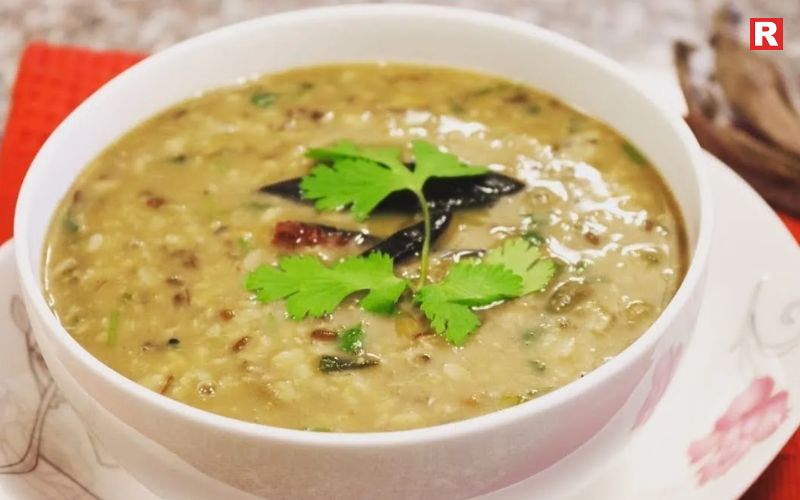
Khar is not just food. It is a tradition on the plate. This alkaline dish is prepared with raw papaya, pulses, and the unique ingredient—dried banana peel ash. The ash gives it a distinct flavor that you will not find anywhere else in India. In most Assamese homes, khar is served as the first dish of the meal. It helps in digestion and sets the tone for the rest of the food. The dish has a mild, earthy taste and is usually eaten with plain steamed rice. Khar is proof of how Assamese cooking celebrates nature by using every part of a plant.
2. Masor Tenga: The Tangy Fish Curry
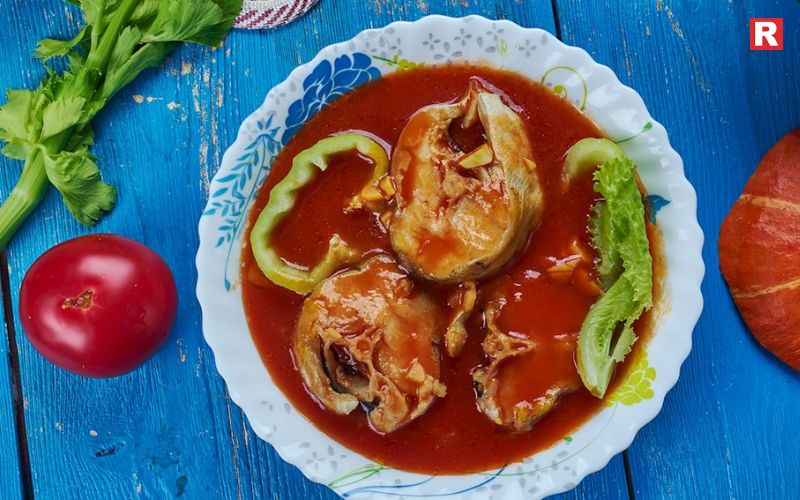
Fish is central to Assamese cuisine, and Masor Tenga is the star dish. This light and tangy curry is made with local river fish and flavored with tomatoes, lemon, or elephant apple (ou tenga). It is especially enjoyed in the summer months because it is refreshing and easy to digest. Unlike heavy curries, Masor Tenga uses very little oil and spices. The sourness balances the fish beautifully, making it a must-have in every Assamese meal. It is also one of the dishes that visitors often fall in love with because of its simple yet unforgettable taste.
Know more: 10 Awadhi Cuisine Classics You Must Try at Least Once
3. Pitha: The Bihu Special
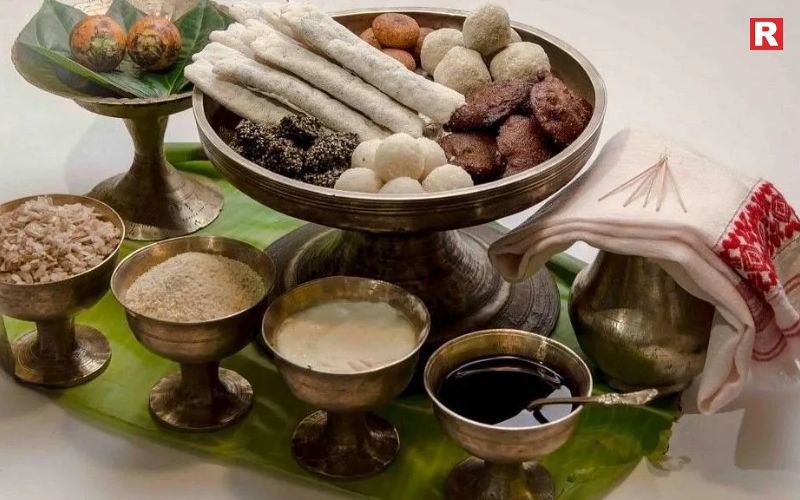
No Assamese festival is complete without pitha. These are traditional rice cakes prepared in different forms—steamed, roasted, or fried. During Bihu, families come together to make pithas such as til pitha (stuffed with sesame seeds and jaggery) and ghila pitha (fried rice cakes). Pitha is more than just food; it is a symbol of celebration and togetherness. Making pitha is often a family affair, with recipes being passed down through generations. Each bite of pitha carries the sweetness of Assam’s culture and hospitality.
4. Duck Meat Curry: A Winter Delight
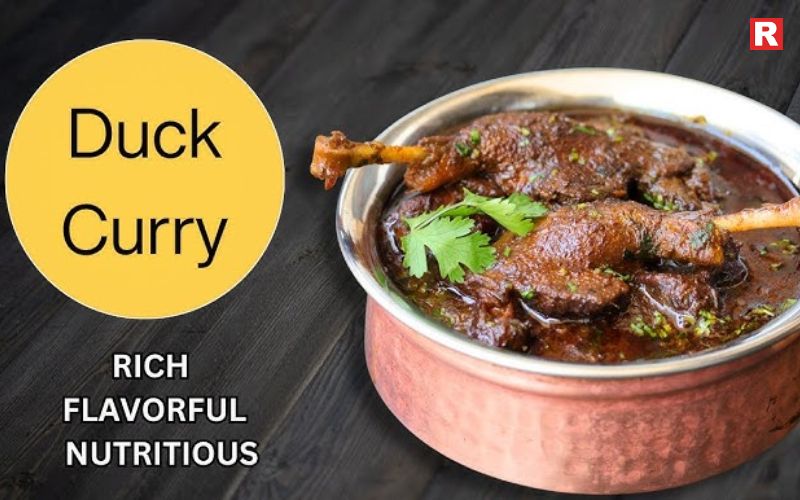
If you visit Assam in the winter, you will find duck meat curry on many dining tables. Known as Haah aru Lau, this curry is prepared with duck meat, ash gourd, and a mix of spices. Some families even add sesame or black gram paste for extra flavor. Duck meat curry is considered a delicacy and is usually prepared on special occasions or for guests. The rich, smoky taste of the meat, combined with the subtle sweetness of ash gourd, makes this dish unique. It shows how Assamese cuisine makes use of seasonal produce in harmony with meat.
5. Aloo Pitika: Comfort Food at Its Best
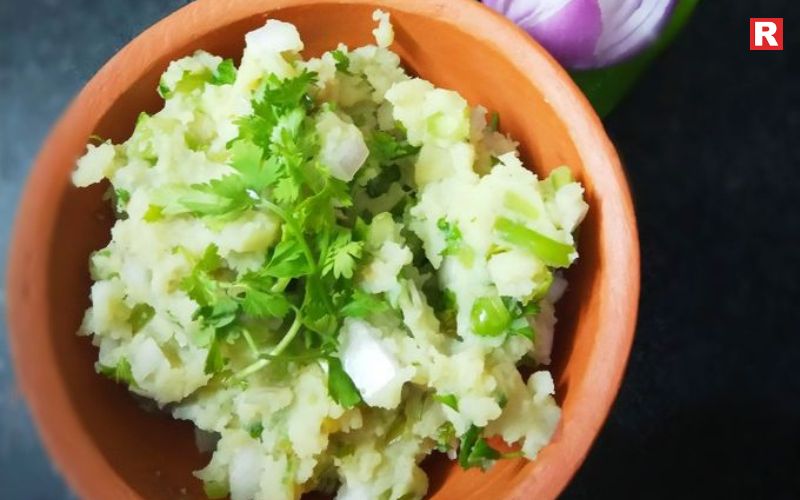
Aloo Pitika is the most humble yet comforting Assamese dish. It is a simple mashed potato preparation, seasoned with mustard oil, green chilies, and onions. Some households also add roasted brinjal or boiled eggs to enhance the flavor. Though it sounds simple, Aloo Pitika carries a special place in Assamese hearts. It is often eaten as a side dish with rice and dal. Its smoky, pungent flavor from mustard oil makes it unforgettable. For many Assamese people living away from home, this dish reminds them of their childhood and family meals.
6. Ou Tenga Chutney: The Tangy Surprise
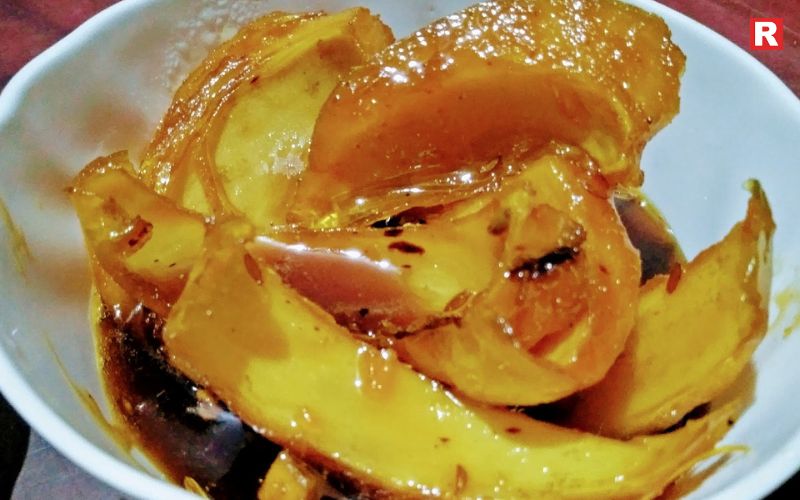
Assam is blessed with unique fruits, and the elephant apple, or ou tenga, is one of them. From this fruit comes the famous ou tenga chutney. The chutney is tangy, slightly sweet, and adds a refreshing punch to any meal. It is often served with rice and fish dishes. The taste is bold and unique, making it a favorite among locals. This chutney shows how Assamese cuisine uses seasonal fruits in simple but creative ways.
Also check: Pani Puri Has Different Names in Different Indian States—Know Them All
7. Bora Saul and Komal Saul: The Special Rice Varieties
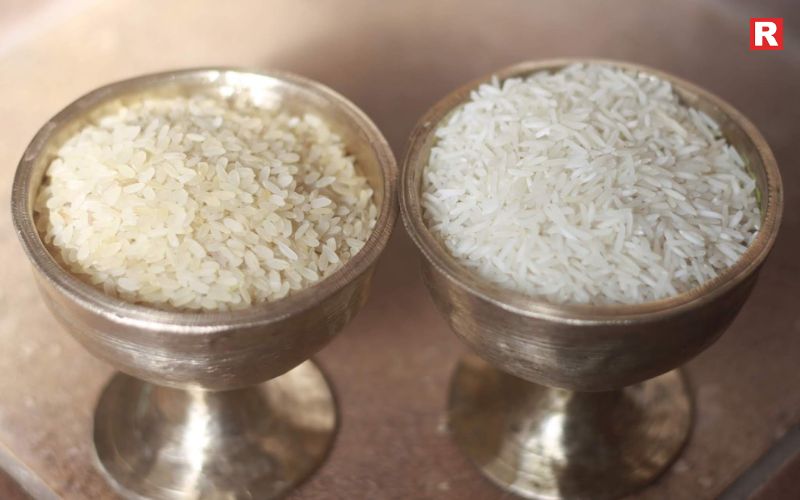
Rice is the heart of Assamese food, but the state offers much more than ordinary varieties. Bora Saul is sticky rice, often used in sweets and snacks. Komal Saul, on the other hand, is eaten without cooking. It is soaked in water for a few hours and then mixed with milk or curd and jaggery. These rice varieties are not just food; they are cultural markers. They highlight the agricultural richness of Assam and the creative ways in which rice is used. Eating Komal Saul during Bihu is a tradition that still continues in many households.
8. Pani Pitha: Steamed in Tradition
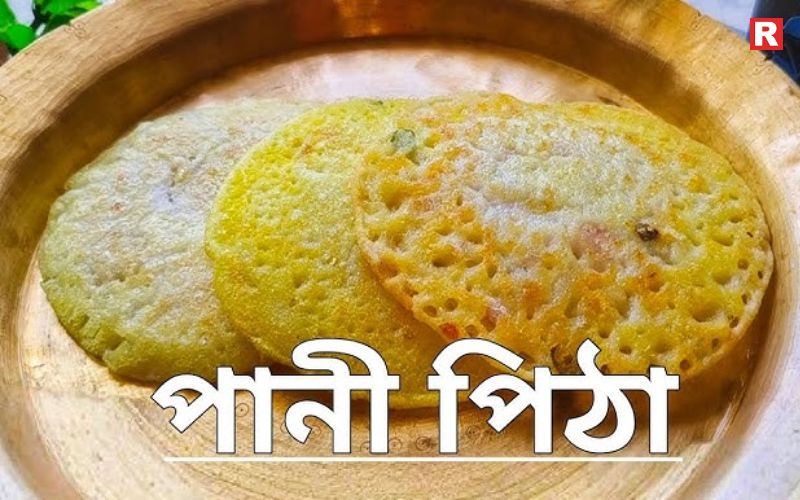
Pani Pitha, also called Tekeli Pitha, is another festive rice cake. What makes it special is the cooking method. It is steamed inside a kettle using rice flour and coconut or sesame filling. The steaming process gives it a soft texture and a subtle flavor. This dish is usually made during Bihu or special occasions. Pani Pitha reflects how Assamese people use simple tools and natural methods to create food that is both healthy and delicious.
Why Assamese Food Deserves the Spotlight
Assamese cuisine is often overlooked when talking about Indian food. Yet, it has everything—tradition, taste, and sustainability. It shows how food can be healthy, eco-friendly, and culturally rich at the same time.
By eating Assamese dishes, you are not just tasting food. You are experiencing a way of life that values simplicity, community, and respect for nature. From the tang of Masor Tenga to the comfort of Aloo Pitika, Assamese food deserves a place on every food lover’s list.
Check more: Top 5 States With the Spiciest Food in India
6 Unexpected Benefits of Eating Jackfruit (Kathal) – Nature’s Spiky Surprise!
Top 7 Regional Indian Thali Platters That Showcase Culinary Diversity
A Taste of Tradition
Assam food reflects its festivals, family bonds, and deep connection with nature. Every meal tells a story of the land and its people. Among Assamese dishes, eight stand out for their tradition and taste. Khar, Masor Tenga, Pitha, Duck Meat Curry, Aloo Pitika, Ou Tenga Chutney, Bora Saul, and Pani Pitha are more than recipes. They carry the heritage of generations. Each bite offers flavors shaped by rivers, fields, and forests. The food is simple but full of character. It is shared during festivals and family gatherings, bringing people together. Assam’s cuisine invites everyone to not just eat, but to experience, celebrate, and understand its culture through food.

Delhi is a city where food lovers can travel across India without leaving the city. Beyond the busy restaurants and crowded street food lanes, there is a special trail of eateries that many people overlook — the State Bhawan canteens. These canteens are located inside state guest houses and offer a taste of authentic regional cuisine. Each canteen represents the flavors of its home state. The food here is simple, honest, and made with traditional recipes. Spices are used in the right balance, and dishes are prepared the way they are in homes across India. From the tangy curries of Bengal to the spicy thalis of Andhra Pradesh, every meal carries a story of its region.
These canteens are also very affordable. They are popular among office workers, students, and food enthusiasts who know the secret. The settings are no-frills but clean and welcoming. Visiting these canteens is more than just eating. It is about experiencing India’s diversity on a plate. Each meal is a journey through different states, bringing a touch of home to the heart of Delhi.
Read more: 8 Famous Vegetarian Dishes of Uttar Pradesh and Their Timeless Legacy
5 Cities That Serve the Best Non-Vegetarian Street Food
1. Gujarat Bhawan Canteen
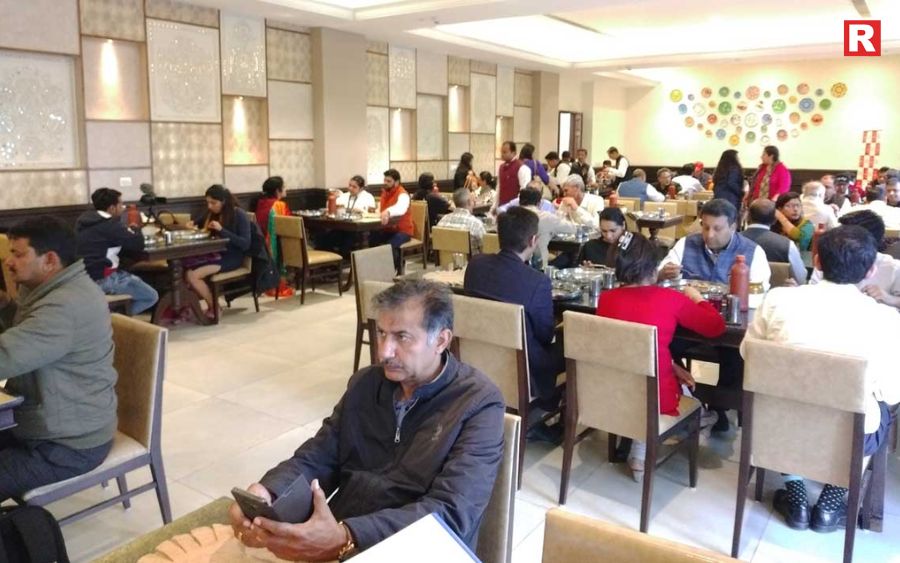
If you love balanced flavors with a sweet touch, Gujarat Bhawan Canteen is a must-visit. The thali here is light, wholesome, and beautifully presented. You’ll find a perfect mix of farsan, rotlis, dal, sabzis, kadhi, rice, and sweets. The staff serves the thali with warmth, and you can expect regular refills just like a family meal. The space is simple but neat, and the aroma of ghee and spices is hard to miss.
- Must Try: Gujarati Thali, Dhokla, Kadhi
- Location: 11, Kautilya Marg, Chanakyapuri, New Delhi
2. Bihar Sadan Canteen
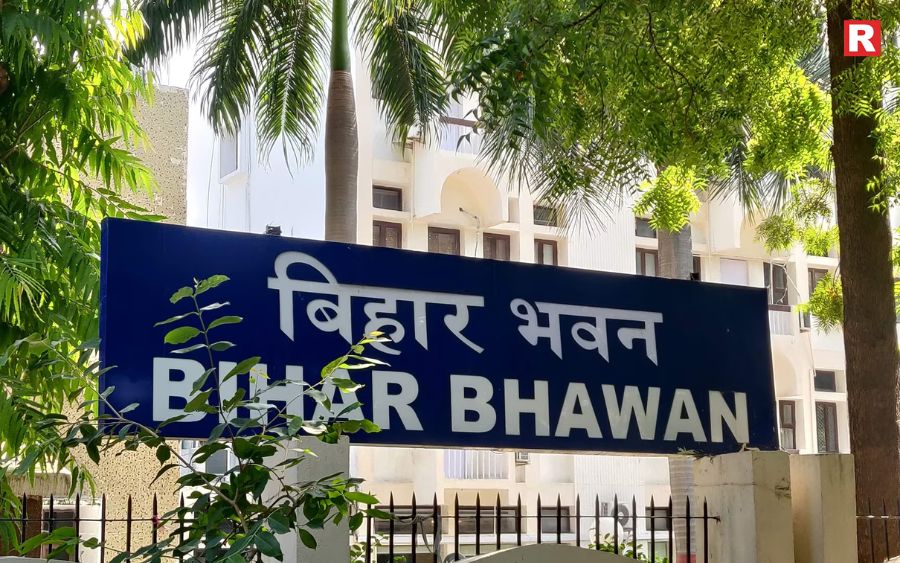
For those who crave robust and earthy flavors, Bihar Sadan is a hidden gem. The canteen is not fancy, but the food speaks for itself. From the comforting litti chokha to spicy mutton curries, every dish carries the bold flavors of Bihar’s kitchens. The litti is roasted to perfection, served with mashed spiced chokha, and topped with ghee that enhances its rustic charm. It feels like sitting down for a traditional meal in Patna.
- Must Try: Litti Chokha, Mutton Curry, Chana Ghugni
- Location: Bihar Sadan, Chanakyapuri, New Delhi
3. Jammu & Kashmir House Canteen
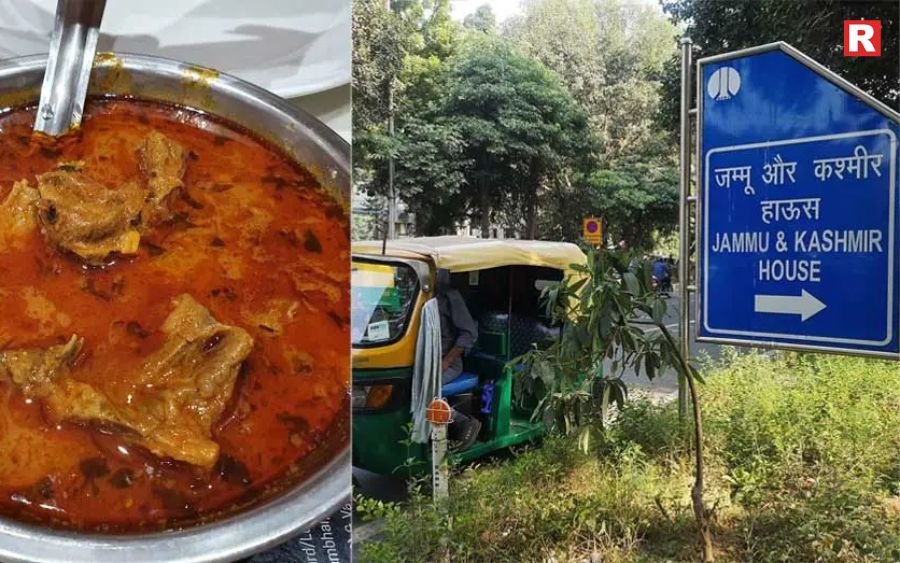
This canteen is a treat for anyone who loves aromatic and soulful Kashmiri cuisine. The food here is mildly spiced yet rich, with layers of flavor in every bite. The highlight is their Wazwan-style dishes, prepared with care and authenticity. The mutton rogan josh here has a deep red color from natural spices, not artificial coloring, and the taste is unforgettable.
- Must Try: Mutton Rogan Josh, Yakhni, Kashmiri Pulao
- Location: 9, Kautilya Marg, Chanakyapuri, New Delhi
Know more: 10 Awadhi Cuisine Classics You Must Try at Least Once
4. Karnataka Food Center
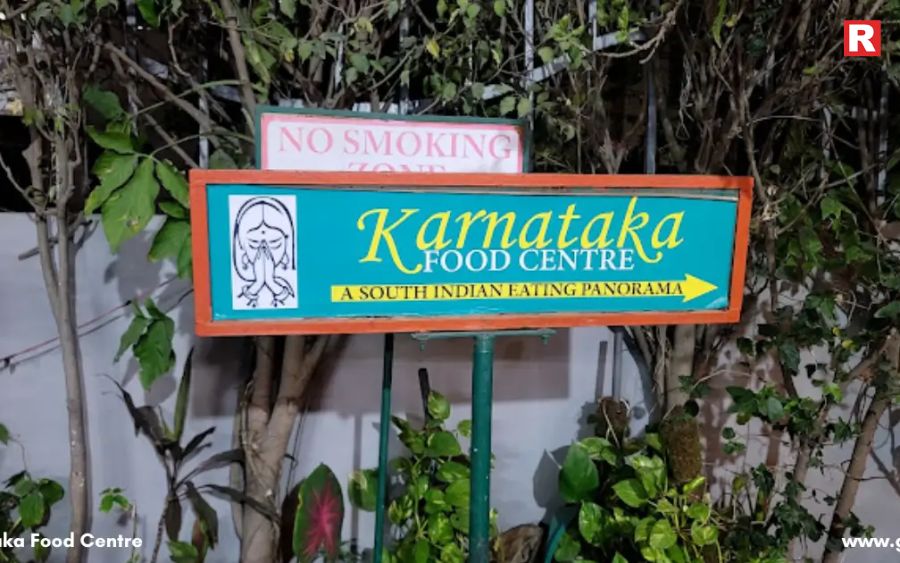
Located near the Karnataka Bhawan, this canteen is always buzzing with people looking for authentic South Indian meals. It’s popular among office goers and students because of its fresh, quick, and affordable food. The dosas are crisp, the idlis are soft, and the sambar has that balanced tangy flavor you expect from a home in Bengaluru. Their traditional meals during lunch are simple and comforting.
- Must Try: Rava Idli with Sambar, Bisibele Bath, Filter Coffee
- Location: Karnataka Bhawan, Sardar Patel Marg, Chanakyapuri, New Delhi
5. Maharashtra Sadan Canteen
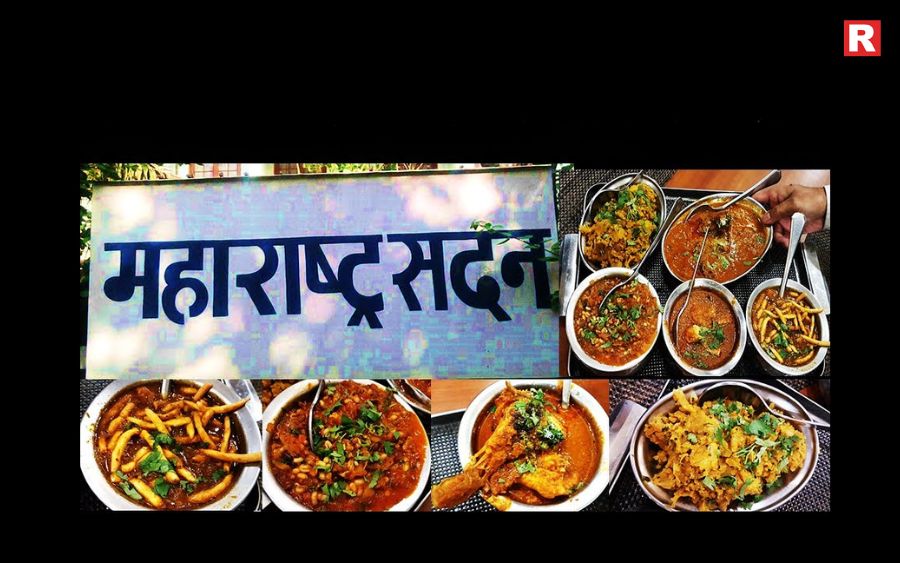
This canteen offers a wonderful glimpse into Maharashtrian cuisine. The menu here changes regularly, but the flavors remain consistently authentic. The sabudana khichdi is light and perfectly seasoned, while the thali gives you a well-rounded taste of home-style Maharashtrian food. The space is well-maintained and suitable for both quick bites and leisurely lunches.
- Must Try: Maharashtrian Thali, Sabudana Khichdi, Puran Poli
- Location: Kasturba Gandhi Marg, Connaught Place, New Delhi
6. Kerala House Canteen
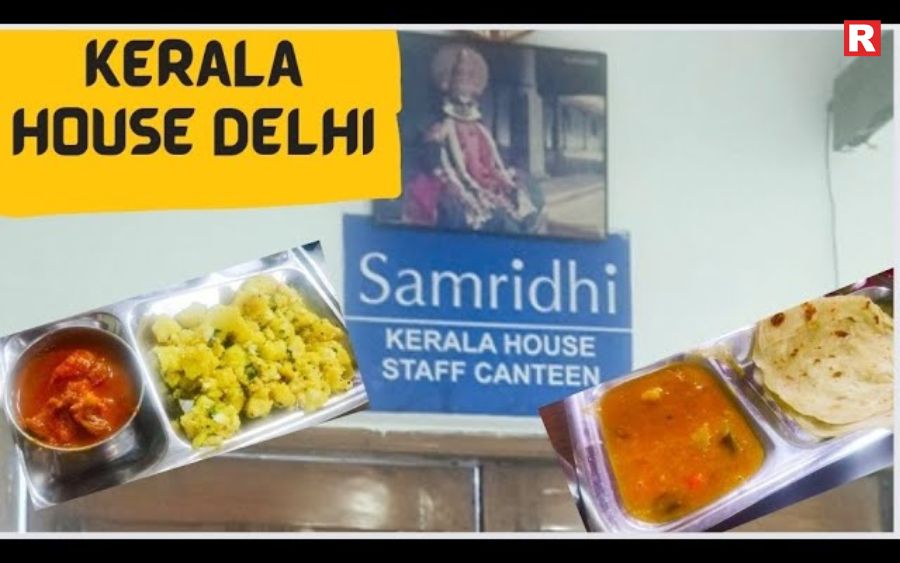
Kerala House is one of the most famous state canteens in Delhi, and for good reason. The food is authentic, flavorful, and served on banana leaves during special meals. The Kerala fish curry is tangy, spicy, and deeply satisfying. If you visit during Onam, their Onam Sadya is a feast of traditional vegetarian dishes served with love. The place is clean, simple, and always smells like coconut oil and spices—a sure sign you’re in for a good meal.
- Must Try: Kerala Fish Curry Meal, Prawn Fry, Onam Sadya (seasonal)
- Location: Jantar Mantar Road, near Kerala House, New Delhi
7. Madhya Pradesh Bhawan Canteen
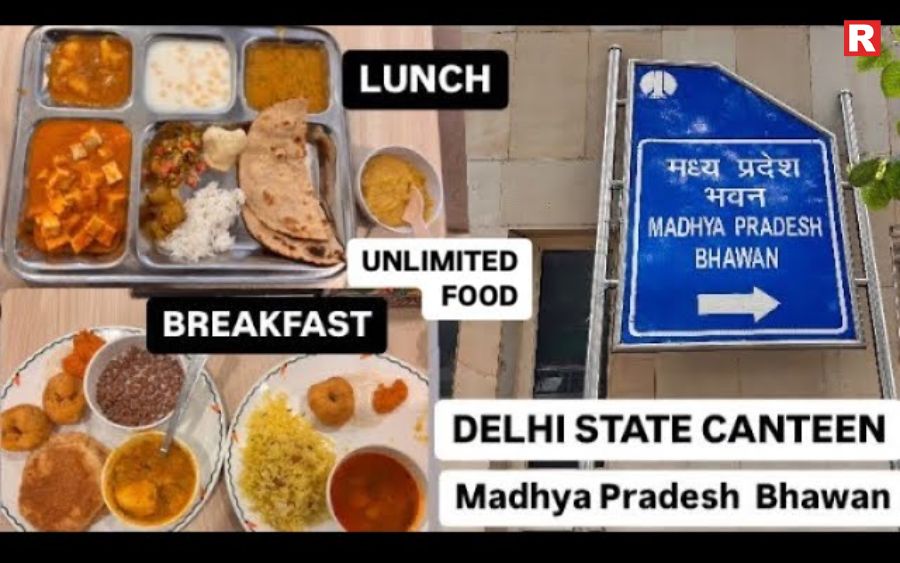
This canteen is ideal for those who love simple yet hearty North Indian meals. The food is prepared in a traditional way, and the thalis are filling without being too heavy. From poha in the mornings to dal bafla at lunch, the dishes here reflect the comfort food of Madhya Pradesh. The flavors are mild, but the ghee-laden breads and rustic curries make it memorable.
- Must Try: Dal Bafla, Poha, Thali Meals
- Location: Madhya Pradesh Bhawan, Chanakyapuri, New Delhi
8. Ladakh Bhawan Canteen
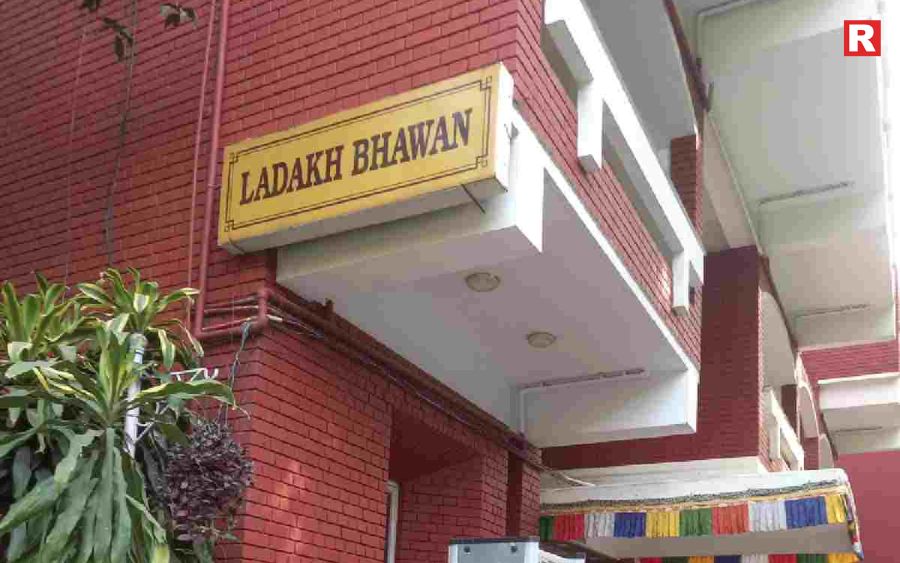
Ladakh Bhawan is relatively less known but offers a distinct culinary experience. The food here is light, wholesome, and different from the usual North Indian fare. Their thukpa is warm and comforting, perfect for Delhi winters, and momos are soft with flavorful fillings. The canteen reflects the simplicity and warmth of Ladakhi kitchens.
- Must Try: Thukpa, Momos, Skyu (when available)
- Location: Ladakh Bhawan, Chanakyapuri, New Delhi
Also check: Top 5 States With the Spiciest Food in India
9. Uttarakhand Sadan Canteen
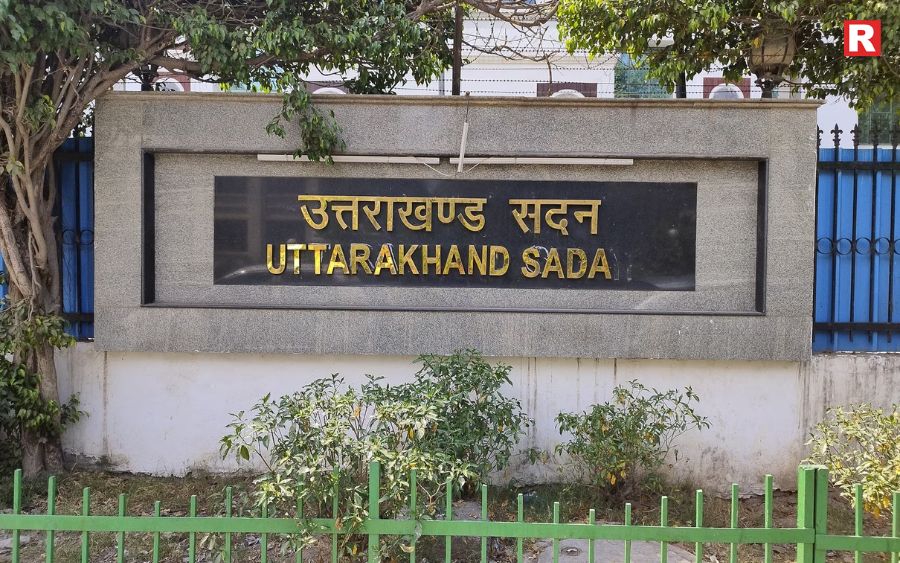
This canteen focuses on Garhwali and Kumaoni cuisine, which is rarely found in Delhi’s mainstream food scene. The flavors are subtle, relying more on local herbs and traditional cooking rather than heavy masalas. The aloo ke gutke and bhatt ki churkani are authentic dishes that showcase the simplicity of the hills. It’s a peaceful spot to enjoy a quiet meal.
- Must Try: Aloo ke Gutke, Bhatt ki Churkani, Mandua Roti
- Location: Uttarakhand Sadan, Chanakyapuri, New Delhi
10. Himachal Bhawan Canteen
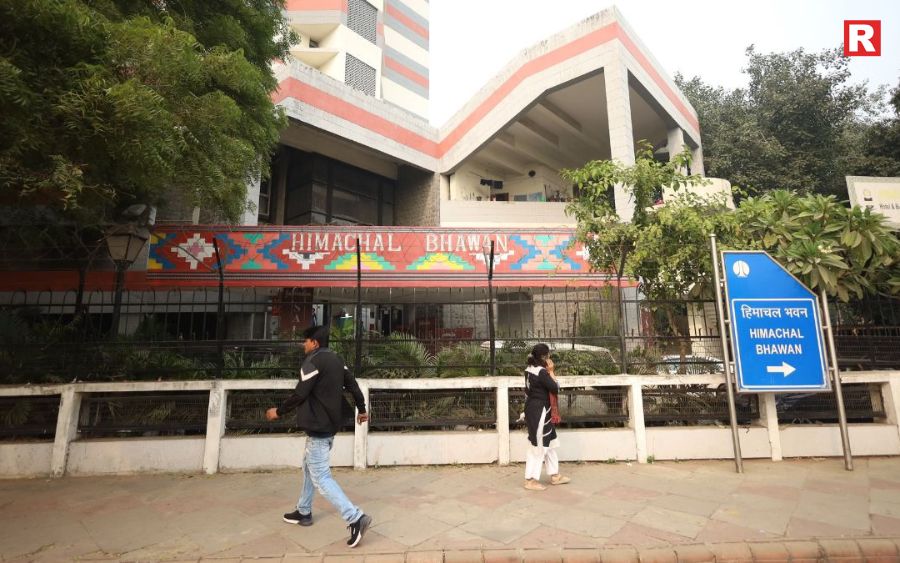
Himachal Bhawan’s canteen is small but loved for its Pahadi-style food. The dishes are light, mildly spiced, and prepared with traditional techniques. Siddu, a local bread, is served with ghee and chutney and is a must-try. The rajma here has a unique flavor that differs from the North Indian version.
- Must Try: Siddu, Himachali Rajma Chawal, Chana Madra
- Location: Himachal Bhawan, Sikandra Road, near Mandi House, New Delhi
11. Banga Bhawan (West Bengal)
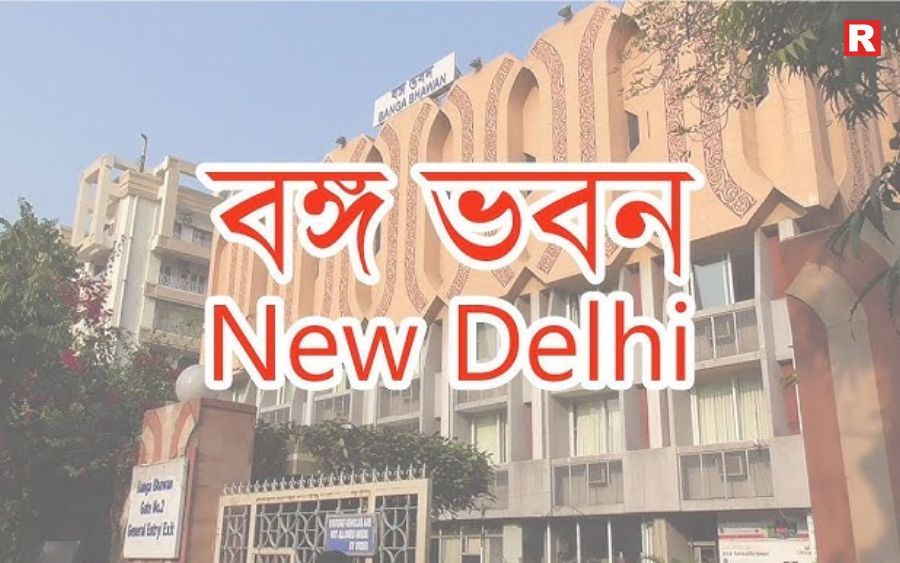
Banga Bhawan is a paradise for Bengali food lovers. The canteen serves dishes rich in mustard oil and spices, with fresh fish taking center stage. The kosha mangsho is slow-cooked and full of depth, while the fish curry tastes just like the ones served in Kolkata homes. End your meal with a sweet rasgulla or mishti doi.
- Must Try: Kosha Mangsho with Luchi, Fish Curry with Rice, Mishti Doi
- Location: 3, Hailey Road, Barakhamba, Connaught Place, New Delhi
Check more: Top 7 Regional Indian Thali Platters That Showcase Culinary Diversity
7 Chinese Dishes That Can Be a Healthy Option for Your Diet
Thai Food: 8 Thai Cuisine Dishes You Shouldn’t Miss
A Culinary Journey Across India
Visiting the State Bhawan canteens in Delhi is like taking a journey across India without leaving the city. Each canteen offers dishes that are true to their region. The food is fresh, flavorful, and served at prices that do not hurt the pocket. The settings are simple but welcoming, making it easy to focus on the food itself.
From the spicy curries of Bihar to the sweet and tangy thalis of Gujarat, and from the hearty thukpa of Ladakh to the comforting meals of Kerala, every dish tells a story. These canteens bring a taste of home to Delhi and let visitors experience the diversity of Indian cuisine in one place. For anyone exploring Delhi, these Bhawan canteens are a must-visit. They offer food made with care and tradition. Every meal is a small journey through India’s culinary heritage, giving a real taste of regional flavors in the heart of the capital.

Madhya Pradesh is known as the Heart of India. Located at the center of the country, it is home to a mix of traditions, languages, and cultures. The state is famous for its majestic forts, ancient temples, and wildlife reserves. But beyond these, Madhya Pradesh has a rich vegetarian food culture that reflects its history and people.
From royal kitchens to temple offerings and street bazaars, the food tells stories of the land and its seasons. Each region has its own specialty, shaped by local produce and traditional recipes passed down through generations. Many dishes use simple ingredients but offer deep, layered flavors. Meals often balance spices, ghee, and natural sweetness in a way that is unique to the state. This article explores seven famous vegetarian dishes of Madhya Pradesh. Each dish has its own legacy, taste, and charm. Together, they represent the heart and soul of the state’s cuisine.
Read more: 8 Famous Vegetarian Dishes of Uttar Pradesh and Their Timeless Legacy
5 Cities That Serve the Best Non-Vegetarian Street Food
1. Bhutte Ka Kees – The Corn Delight of Indore
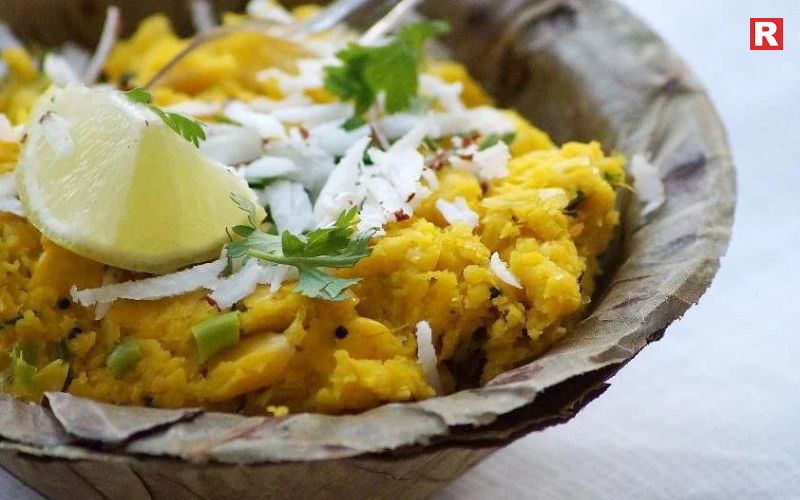
If there is one dish that captures the essence of Madhya Pradesh street food, it is Bhutte ka Kees. This dish is made with grated corn cooked slowly with milk, spices, and a touch of ghee. The result is a soft, flavorful mix that is both sweet and spicy. Bhutte ka Kees is most popular in Indore, especially during the monsoon season when fresh corn is abundant. Locals often enjoy it as an evening snack. The aroma of roasted jeera and hing adds a comforting touch, making it a favorite among both residents and travelers. What sets this dish apart is its simple ingredients and rich, warm taste, which reflects the soul of Indori food culture.
2. Poha-Jalebi – A Breakfast with a Twist
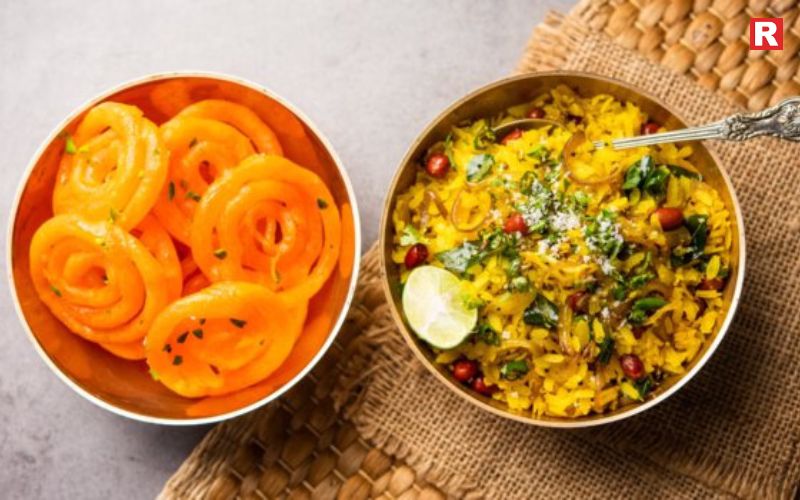
In many parts of India, poha is eaten for breakfast. But in Madhya Pradesh, poha meets jalebi, creating a unique and balanced morning meal. Poha is made by cooking flattened rice with onions, mustard seeds, turmeric, coriander, and a squeeze of lemon. It is light, savory, and aromatic. What makes this dish special is the pairing with crispy, syrupy jalebi. The combination of savory poha and sweet jalebi might sound unusual, but it works beautifully. In Indore, Bhopal, and Ujjain, you will find street vendors and small shops serving this duo early in the morning. For many locals, this is not just food but a daily ritual that sets the tone for the day.
3. Dal Bafla – A Royal Malwa Classic
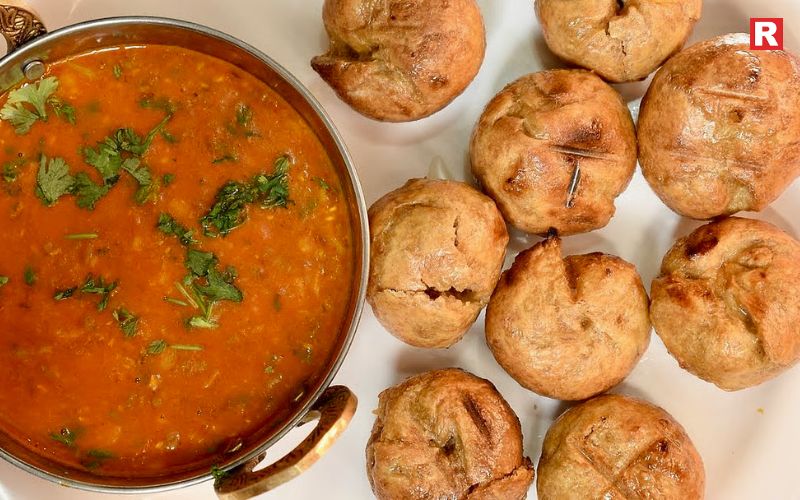
Dal Bafla reflects the royal and cultural richness of the Malwa region. It is similar to Rajasthan’s dal baati but has its own identity. Bafla are wheat dough balls boiled first and then baked or roasted. They are soaked in ghee before serving, making them soft yet slightly crisp on the outside. These baflas are served with spiced arhar dal, tangy chutneys, and sometimes a sweet accompaniment. In traditional homes, dal bafla is prepared on special occasions, festivals, and family gatherings. The use of ghee is generous, which adds to the dish’s depth and aroma. Eating dal bafla is more than just having a meal; it feels like a royal feast from the past.
Know more: 10 Awadhi Cuisine Classics You Must Try at Least Once
4. Sabudana Khichdi – The Comfort Fasting Dish
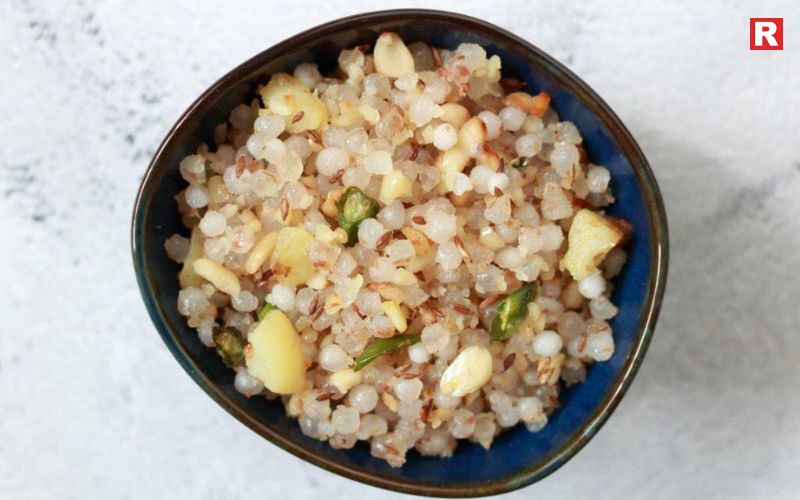
Sabudana Khichdi is one of the most loved dishes across Madhya Pradesh and almost in the region in India. Originally eaten during fasting days, it has now become a regular snack. It is made using soaked tapioca pearls, roasted peanuts, green chilies, potatoes, and cumin seeds. It is cooked lightly to keep the texture soft and non-sticky. This dish is simple but full of flavor. The crunch of peanuts and the mild spice make it both comforting and satisfying. In cities like Bhopal and Indore, sabudana khichdi is available at roadside stalls, restaurants, and home kitchens. Many families prepare it for breakfast or as an evening meal. Its popularity comes from its lightness, versatility, and gentle flavors.
5. Chakki Ki Shaak – A Unique Wheat-Based Curry
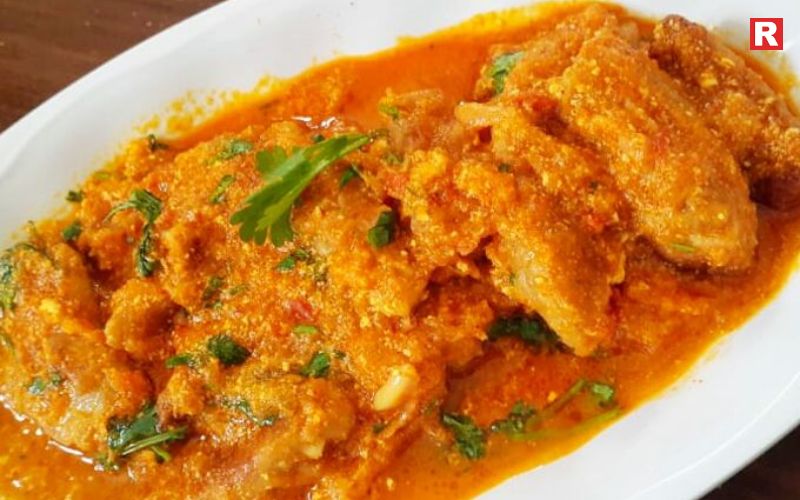
Chakki ki Shaak is a lesser-known but remarkable dish from central Madhya Pradesh. It involves making a dough from wheat flour, washing it to extract gluten, steaming it, and then cutting it into pieces. These pieces are cooked in a spicy, aromatic curry, often with a hint of Mughlai flavors. This dish stands out because it uses wheat in a completely different way. It is soft, flavorful, and absorbs the curry beautifully. Chakki ki Shaak is usually made for special occasions and family meals. It reflects the culinary creativity of the region, where basic ingredients are transformed into rich, festive dishes.
Also check: Pani Puri Has Different Names in Different Indian States—Know Them All
6. Palak Poori with Aloo Sabzi – A Festive Favorite
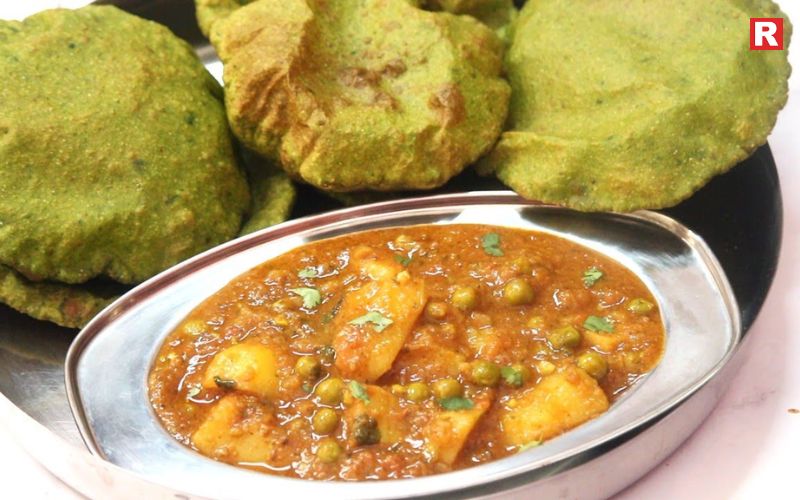
Palak Poori with Aloo Sabzi is a traditional temple and festive dish in Madhya Pradesh. Palak poori is made by mixing spinach puree with wheat flour to make a vibrant green dough. The pooris are deep-fried until they puff up, giving them a light and crisp texture. They are usually served with a spiced potato curry, often prepared without onions and garlic, making it suitable for religious occasions. This dish is common during festivals and community feasts. It is simple, wholesome, and reflects the spiritual and cultural values of the state.
7. Indori Namkeen and Sev – The Crunchy Companions
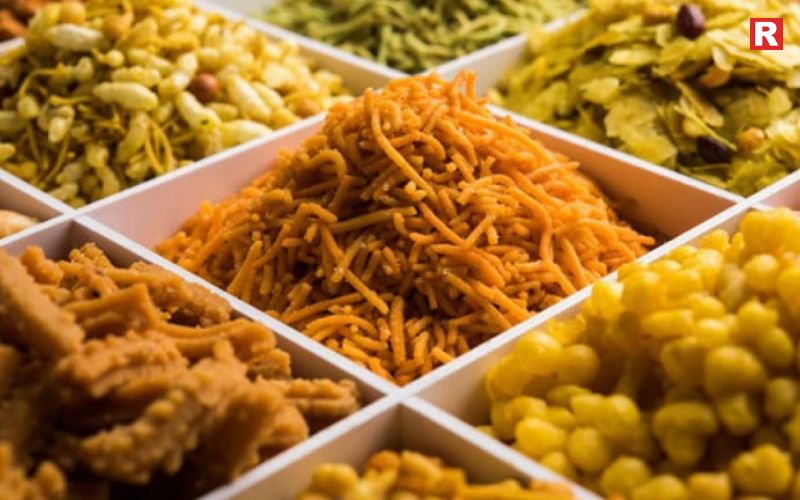
No meal in Madhya Pradesh, especially in Indore, is complete without namkeen and sev. These are crunchy, savory snacks made with gram flour and spices. They are used as toppings on poha, chaats, or eaten on their own. Indori sev has a special place in local cuisine. It adds a distinct crunch and flavor to almost every dish. Families often stock different varieties at home. Whether it is a cup of tea in the evening or a plate of poha in the morning, namkeen and sev are always there to add that extra spark.
What Makes MP’s Vegetarian Cuisine Unique
Madhya Pradesh’s vegetarian cuisine is a blend of royal traditions, tribal influences, and vibrant street food culture. The state uses local produce like corn, wheat, and leafy greens in innovative ways. Ghee and spices play an important role in creating depth of flavor.
Unlike many regions that stick to either sweet or spicy, MP’s dishes often balance multiple flavors in one plate. The combination of poha and jalebi, the richness of dal bafla, and the simplicity of sabudana khichdi showcase this balance. Temple food traditions have also shaped many recipes, making them sattvik yet delicious.
Where to Try These Dishes
- Indore is known as India’s food capital. Places like Sarafa Bazaar and Chappan Dukan come alive in the evenings, offering a wide range of snacks and dishes.
- Bhopal, Ujjain, Gwalior, and Jabalpur each have their own food hubs and local specialties.
- Festivals, street markets, and family-run eateries are the best places to experience the true flavors of MP’s vegetarian cuisine.
Check more: Thai Food: 8 Thai Cuisine Dishes You Shouldn’t Miss
10 Must-Try Goan Dishes That Define Its Rich Food Culture
Top 7 Regional Indian Thali Platters That Showcase Culinary Diversity
A Plate Full of Tradition
Madhya Pradesh’s vegetarian food is more than just sustenance. It is a reflection of the state’s history, culture, and daily life. Each dish, whether it’s the humble poha or the royal dal bafla, carries a legacy that connects generations.
For anyone exploring Madhya Pradesh, tasting these dishes is a way to understand the heart of the state. And for those far away, recreating them at home is a way to bring a slice of MP’s rich culinary tradition to your kitchen.

Uttar Pradesh is known for its deep history, vibrant culture, and strong spiritual roots. Beyond its grand monuments and famous festivals, the state has a rich vegetarian food tradition that has grown over centuries. Each dish carries a story of royal courts, temple kitchens, and lively streets. In Lucknow, the Awadhi style shaped food with refined techniques and balanced spices. Even vegetarian dishes were prepared with the same care and detail as royal meat dishes. In Varanasi and Mathura, temple traditions shaped a different path. Here, sattvik meals avoided onion and garlic, focusing on pure flavours and seasonal ingredients.
Over time, these two styles blended. Local produce, slow cooking, and aromatic spices became common in homes and markets. Morning food stalls in towns like Banaras and Agra became famous for simple but flavourful vegetarian dishes. Many of these stalls have served the same recipes for generations. This blend of royal refinement, temple purity, and street energy created a unique vegetarian cuisine. It reflects the history, faith, and everyday life of Uttar Pradesh in every bite.
Read more: 5 Cities That Serve the Best Non-Vegetarian Street Food
10 Awadhi Cuisine Classics You Must Try at Least Once
The Culinary Heritage of Uttar Pradesh
The roots of Uttar Pradesh’s vegetarian cuisine are deep and layered. During the time of the Nawabs of Awadh, chefs created elaborate dishes with delicate spices and slow cooking methods. While many of these recipes were non-vegetarian, the same techniques were applied to vegetables and lentils for the royal vegetarian tables. Rich gravies, dum (steam) cooking, and the use of aromatic spices became a hallmark of the region.
On the other hand, cities like Varanasi, Ayodhya, and Mathura shaped a different culinary path. Here, temple kitchens developed sattvik food traditions, which avoid onion and garlic and focus on clean, simple, and spiritual cooking. Over time, these two streams — royal and temple — merged with local ingredients and practices to create a diverse vegetarian menu that remains popular even today.
Street food culture also played a major role. Morning markets and roadside stalls in towns like Banaras and Agra became hubs of flavorful yet affordable dishes. Many of these vendors have been using the same recipes for decades, making these foods part of the community’s identity.
Famous Vegetarian Dishes of Uttar Pradesh
1. Kachori-Sabzi
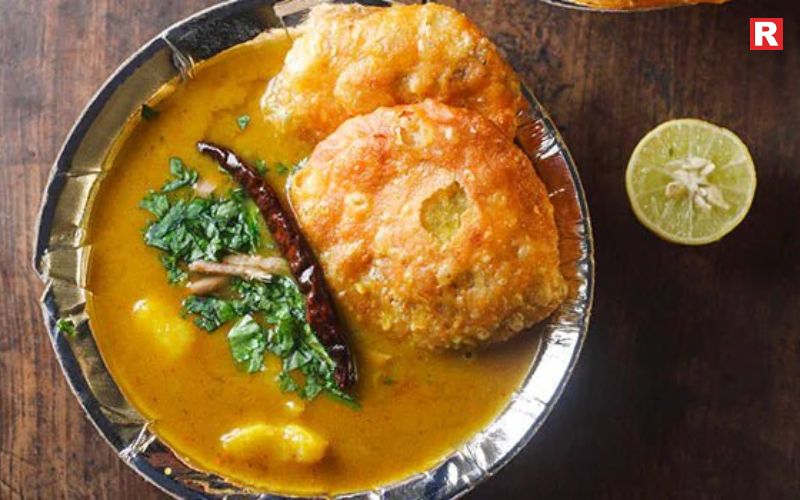
Kachori-Sabzi is one of the most loved breakfast dishes in Uttar Pradesh, especially in Varanasi and Mathura. The kachori is made by stuffing wheat flour dough with a spiced lentil filling and then deep frying it until crisp. It is served with a hot and tangy potato curry. The combination of the flaky bread and the spicy gravy creates a perfect balance of textures and flavours. Many families and sweet shops serve this dish early in the morning, and locals often enjoy it with a cup of tea.
2. Aloo Tamatar Ki Sabzi
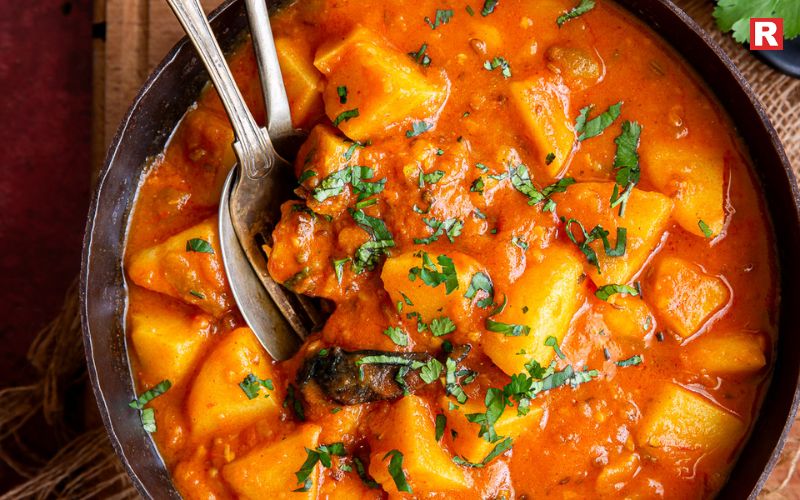
This is a simple but timeless dish that reflects the temple cooking style of the region. It uses boiled potatoes cooked with tomatoes, cumin, ginger, and a few basic spices. The dish has no onion or garlic, making it ideal for religious occasions. The thin, tangy gravy pairs well with puris or plain rotis. It is a common preparation in festivals and family gatherings.
Know more: Top 7 Regional Indian Thali Platters That Showcase Culinary Diversity
3. Bedmi Puri
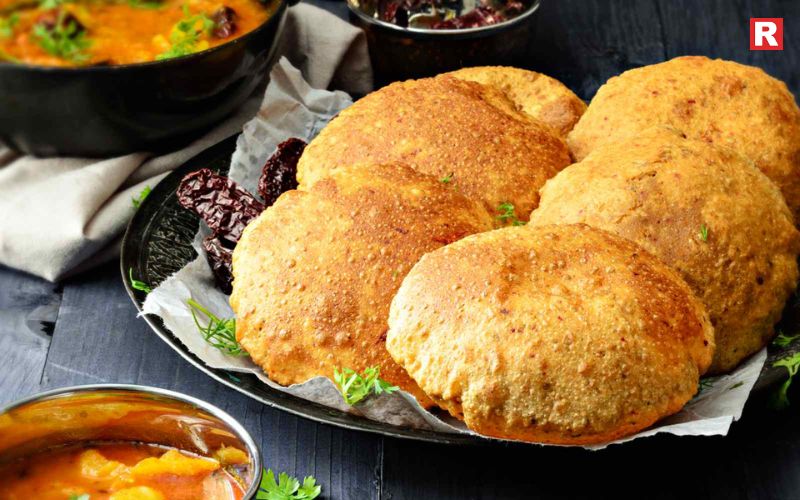
Bedmi Puri is popular in western UP, particularly in Agra and nearby towns. The dough is mixed with ground urad dal and spices, giving the puri a unique flavour and texture. It is fried until golden and usually served with spicy potato curry and pickles. Bedmi Puri is often prepared during festivals and is also sold in street stalls as a filling breakfast option.
4. Baati Chokha
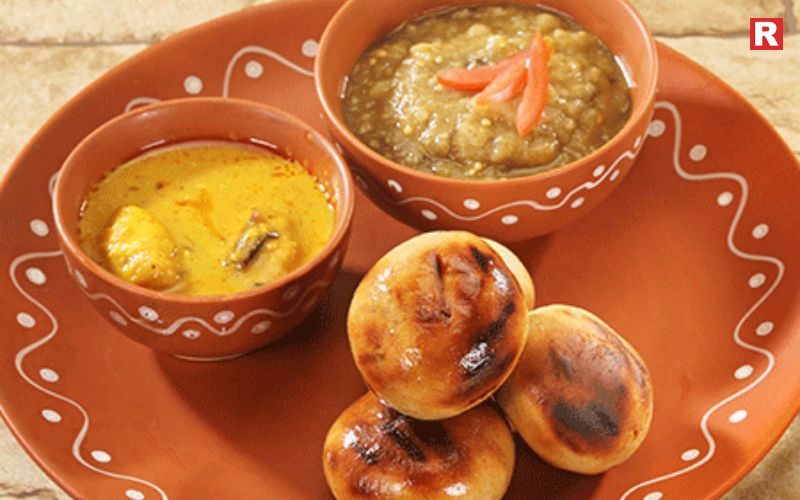
This dish represents the rustic flavours of eastern UP. Baati is made by baking wheat dough balls over a traditional fire or in an oven until they are crisp outside and soft inside. Chokha is a mashed mixture of roasted brinjal, boiled potatoes, tomatoes, mustard oil, and spices. The combination is smoky, earthy, and full of character. Baati Chokha is especially popular in rural areas and is often cooked during family get-togethers or special occasions.
5. Banarasi Dum Aloo
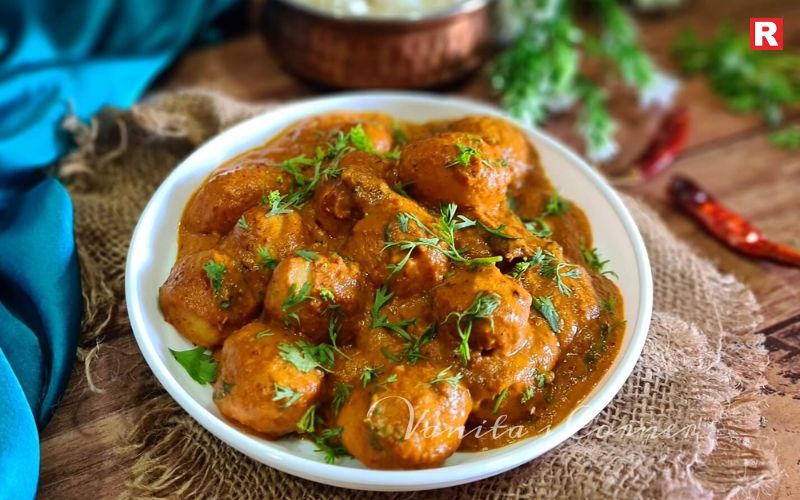
Banarasi Dum Aloo is a rich, mildly spiced potato curry that stands out for its creamy texture and balanced flavours. Small boiled potatoes are fried and then cooked in a tomato-yogurt gravy with fragrant spices. The dish reflects Kashmiri and Mughal influences but has its own Banarasi twist. It is usually served with puris or steamed rice and is often part of festive meals.
6. Tehri
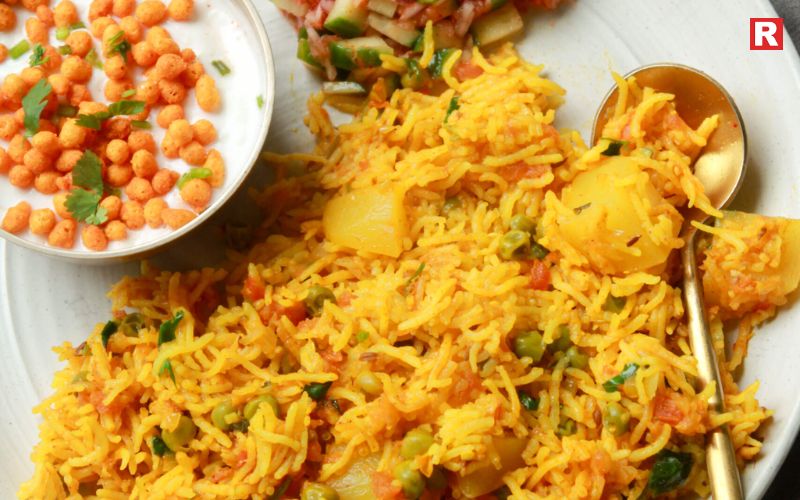
Tehri is Uttar Pradesh’s version of vegetable pulao. It became popular during World War II when meat was scarce, and people started making a spiced rice dish with vegetables instead. It is cooked with turmeric, green peas, carrots, potatoes, and mild spices. Tehri is comforting, aromatic, and commonly cooked in households for lunch or as a simple festive meal.
Also check: From Royal Kitchens to Tribal Feasts: 7 Famous Foods of Chhattisgarh
7. Matar Ki Nimona
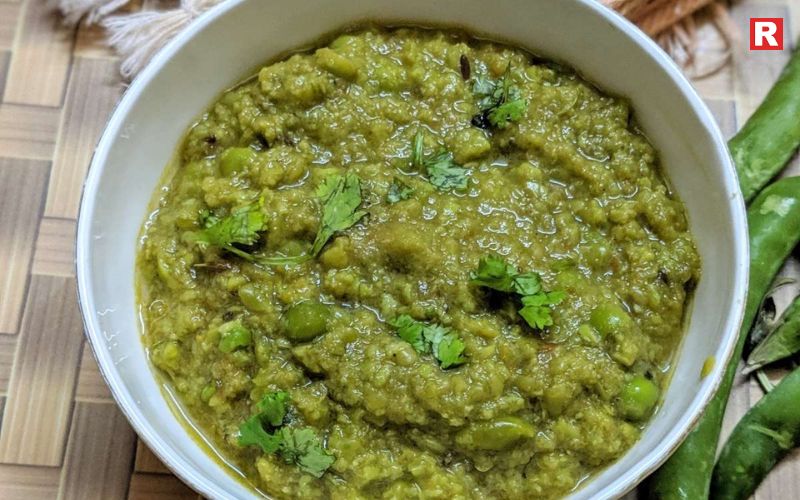
Matar ki Nimona is a winter speciality from eastern UP. Fresh green peas are crushed and cooked with cumin, ginger, and spices to create a thick, savoury curry. Unlike most paneer or mixed vegetable curries, Nimona has a distinct taste because of its coarse texture and fresh seasonal produce. It is usually eaten with rice or rotis.
8. Peda and Malaiyo
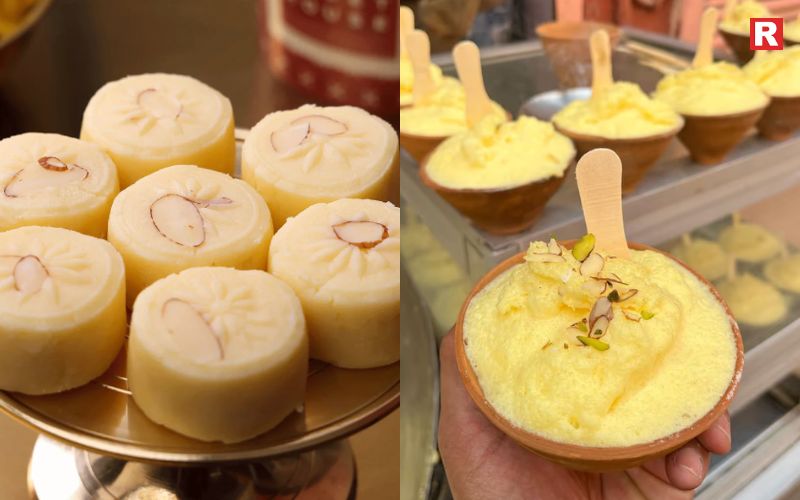
No exploration of UP’s food is complete without its sweets. Mathura is famous for its peda — soft, caramelised milk sweets offered in temples and sold in local markets. The tradition of peda-making is centuries old and closely tied to Lord Krishna’s temples. In Varanasi, winter brings Malaiyo, a delicate milk froth dessert flavoured with saffron and cardamom. It is served early in the morning before the sun melts its airy texture.
Traditional Cooking Methods
The cooking styles used in UP give these dishes their distinct character. Many recipes involve slow cooking in brass or clay pots, which enhance the flavour and retain nutrients. The dum technique, which involves sealing the pot and cooking on low heat, allows the spices to infuse deeply into the ingredients.
Sattvik food, especially in temple kitchens, follows strict guidelines. The use of fresh ingredients, simple seasoning, and absence of onion and garlic ensure that the focus remains on natural flavours. Seasonal vegetables and freshly ground spices are key to most preparations, giving the cuisine its freshness and depth.
Check more: Raise a Toast: Best Whiskies to Celebrate This Festive Season
10 Must-Try Goan Dishes That Define Its Rich Food Culture
Top Rajasthani Dishes to Try This Festive Season
Interesting Facts About UP’s Vegetarian Food
- Banarasi cuisine is one of the oldest living vegetarian cuisines in India.
- Some recipes like Tehri were born out of necessity during historical events but became household favourites over time.
- Many street food vendors in cities like Varanasi have been serving the same dish for more than a hundred years.
- The peda tradition in Mathura dates back to temple rituals and continues to be a core offering even today.
Happy Eating!
Vegetarian food in Uttar Pradesh is more than just a menu of dishes. It is a mirror of the state’s history, spirituality, and everyday life. Each recipe carries the touch of the Nawabs, the devotion of temple cooks, and the warmth of street vendors. Whether it is the crisp bite of a kachori, the rich taste of Banarasi Dum Aloo, or the simplicity of Aloo Tamatar Ki Sabzi, UP’s vegetarian cuisine speaks a language of tradition and flavour.
For travellers and food lovers, exploring Uttar Pradesh through its vegetarian dishes is like taking a journey through time. Cooking these recipes at home brings a slice of history to your plate, while tasting them on the streets of Varanasi or in the markets of Mathura connects you to living traditions that continue to thrive.

The Bohri cuisine has indeed come a long way. Dawoodi Bohras, who are considered to be a sect within Shia Islam, originated in Yemen and soon spread to the different parts of the world and which is why the cuisine has influences from all the places it has been. Today a significant number of Bohras are living in countries like Yemen, Africa, Pakistan and the Middle East. The cuisine has also a major influence of Gujarati food as a result of early settlement of Bohras in Gujarat before they spread to Mumbai.
This cuisine has kebabs and tikkas, which is influenced by the Mughlai cuisine. It also has dishes influenced from Arabic culture. However, the question is that despite being so rich, unique and distinct, why is it still not considered to be among those well known and culturally rich cuisines we have? In a wake of people getting more adventurous in exploring different food and culture, some restaurateurs are getting on board to offer this cuisine via various pop-ups, events and food festivals.
Home chefs, who play an important role in disseminating different regional cuisines, are now being invited to restaurants’ kitchens to organize the pop-ups. Not only this provides diners a different experience but also gives home chefs a chance to showcase their talent out of their home kitchen.
What started in 2014 as fun experiment to keep Mom-Chef busy, ‘The Bohri Kitchen’ has now turned into one of the most sought after dining experiences in Bombay. The Bohri Kitchen in Mumbai is serving authentic bohri food since last four years and has fed over 4000+ guests in Colaba. The menu changes every weekend but the experience of sitting around a thaal and gorging oneself with 7 brilliant courses of home-cooked Bohri delicacies stays the same.
While various restaurants have now come up with Bohri cuisine in their menu, there are other restaurants, which are organizing various pop-ups to give diners an experiential gastronomic experience with this cuisine. For instance, Hotel Sahara Star, one of the luxurious hotels in the country is hosting a pop-up called The Bohri Food Festival, where it will be serving Bohri dishes to its customers. As part of Cultures of Mumbai Food Festival, after having a successful run with the Parsi Pop up, the hotel will now host unique delicacies of Bohri food.
Chef Alifya and Chef Aziz Amrelliwala will take customers on to a culinary delight of traditional Bohri recipes from 11th to 24th October at Earthplate, Hotel Sahara Star. Bohri Chicken Cutlet, Bohra White Mutton, Daal Ka Samosa, Daba Gosht and Khichada are some of the dishes, which will be a part of the menu to tantalize the taste buds.
Bohri’s believe in eating food from a thaal, which is laid on a tarakti. The thought behind it is that the families, who eat together, stay together. Bohri meals are incomplete without a dessert. The meal starts with a dessert and is ended with a Paan and Mukhwas. With not just the delectable bohri dishes, the restaurant will provide a soulful environment with a mix of Sufi, Gujarati folk lore and Bollywood music.

Set in the heart of one of Mumbai’s most desirable neighbourhoods, Destination 72 is located in the ATL Corporate Park on Saki Vihar Road.
A flagship brand of Foodsense Hospitality, Destination 72 is modeled with a keen insight into the city’s diverse food and beverage scene. With the tuneful tagline, ‘Khana, Peena, Gaana’ six multi-ethnic business professionals joined hands to create a buzzing space for the fun, the cool, and the eclectic.

“It’s our goal to provide a concept that displays the country’s rich culinary history in a one-of-a-kind way,” shared Vinod Salian, Director, Foodsense Hospitality.
The menu offers large and satisfying portions of regional Indian, Pan-Asian and International cuisines. Designed by celebrated Chef Sebastian Fernandes, the main menu brings to the table a unique blend of traditional cuisines inspired by the diverse regions of Northern, Southern, Eastern and Western India.

“The menu at Destination 72 is fresh and extensive designed to satisfy many different taste-buds,” added Chef Fernandes.
Signature dishes include Lagan Ka Murgh, Methi Seghdana, Goat Curry Yakhani, Prawn Ghee Roast, Peking chicken Dimsum, Grilled Masala Chicken Bao, Salmon Maki Roll, Cold Soba Noodle with Peanut Dressing, Button Mushroom Wasabi, Malaysian Randang Curry, Chilli Sausage Canopy, Herb Crusted Sslmon, Grilled Tiger Prawns, Ricotta Cheese and Spinach Lasagna.

The restaurant covers a sprawling area of 6000 sq. ft. featuring modern textures, rustic elements and distinctive flooring based on a specific and strong design concept. Decked out in playful LED lights synced with up-tempo music, the ambiance is bold yet lively, quirky yet elegant.
The owners wanted to create a buzzing space of fun, cool and the eclectic with an aim to offer locals and visitors an unconventional dining experience. The long, vibrant bar overlooking the private dining room is a perfect spot to unwind and enjoy delicious cocktails paired with scrumptious bar bites.

“We bring you a stunning space offering an unconventional dining experience alongside a great menu of food and drink, and entertainment. Clubbed with brilliant soundtracks and live DJs covering a span of genres from dance and commercial to house and retro music, Destination 72 will stage exceptional gigs for a transformative mood every night of the week,” pointed Vikrant Guptaa, Director, Foodsense Hospitality.
Another talking point is the long, vibrant bar overlooking the mezzanine private dining room, a perfect spot to unwind and enjoy fabulous cocktails paired with scrumptious bar bites. The delicious bar menu curated by famed Mixologist and Bar Consultant, Naveen Kotyankar comprises of innovative and timelessly classic cocktails mixed with independently sourced liquor and a wide selection of refreshing mocktails. A real highlight of the menu is the Prohibition Era Theme based cocktails like Negroni, Bourbon Sour, Ward Eight, Bees Knees and French Martini.

Showcasing a twist on all-day dining, Destination 72 is the perfect destination for a post-work drink, a fun spot to catch up with friends and a great place to let your hair down after a busy week.

Building The Legacy
It is an ancient restaurant started by my father in 1945 and we are following the legacy. Our main focus is to satiate Gujarati palates by serving them one of the most authentic foods out there. This restaurant is basically for the people who visit Mumbai from different regions of the world, be it businessmen, service person, travellers amongst others. We want the world to know the speciality of regional cuisines, we want them to taste the lip smacking flavour and that is why we try our best to give our customers an unforgettable experience. Our main purpose is to give customers that ‘maa ke khana ka swaad’ feeling and have that homely experience. In food service sector, it is necessary to have that passion for food because it is the passion only which drives the business.
USP
This restaurant is running since 1945 which speaks volume in itself that our archaism is our USP. Also, we serve a huge variety of Gujarati food maintaining the hygiene at the same time. Our food sticks to the root and we haven’t modified it so that we could provide the ancient taste.
Cashing in on Quality
We are reasonably priced keeping in mind the customers’ as Indians are price conscious. If one is serving quality then people are ready to pay eventually.
We are very strict with our quality standards. We have limited suppliers who are standardised providing fresh raw materials and our team check that personally. We use superior quality grains and are not ready to neglect quality, no matter what. Our motive is to give good food and money is secondary. The food made with love is the best service anyone can give.
Keeping the Health Factor
Today, everyone has become health conscious so we always keep the food less oily and more health oriented making it simple without spoiling the taste.
Going back to Roots
Actually regional cuisine is there since forever and I’m nobody to bring it back. Of course, market segment changes and people follow the trend like anything but at the end of the day; they can never forget the food which is served at their home. This is what we are doing. Trends will come and go but regional cuisine will always stay. It is a staple from which people can never get bored of.
Future Plans
Future is phenomenal. We are just focusing on doing good food and it is our firm belief that anyone who has a purpose of serving good food with best service is in the market to stay. We are planning to open one more outlet around the suburbs. On the other hand, we don’t want to spoil the fun by opening a bunch of outlets in a rush.
Marketing it Right
Social media is the best tool to market brand these days and rest of the work is done by word of mouth if you are serving great food.

Started out of the need to serve Bengali cuisine in a five star environment, Savourites Hospitality has grown to six restaurants and a vast catering business in all these years. The idea came when three friends Sushanta Sengupta, S Ramani and Aninda Palit working at The Park Hotel Kolkata realised that there was no proper restaurant to serve Bengali cuisine in Kolkata when an outsider looks for an option. After a thorough research into cook books spanning different eras, including Thakurbarir khabar or books by Pragya Devi Sundari, Savourites came up with its hallmark restaurant, 6 Ballygunge Place, at a bungalow in Ballygunge. The old world charm in architecture and minimalist décor of the 100 year old property was retained, and coupled with exquisite food, this 84 seater restaurant soon became preferred destination for connoisseurs in the city.
How it all began?
It was during our stint with The Park hotel that we decided to do something of our own and that’s how 6 Ballygunge Place was born. Most of the five star hotels that caters to tourist asked for local cuisines in Kolkata but the city didn’t have a good place which could really showcase the regional cuisine. There used to be an occasional festival in hotels during Puja or Poila baisakh but the cuisine was never represented. That’s how we came up with restaurant because I was the chef where I used to serve oriental food and I always used to find that guests asks for Bengali food as oriental food was available throughout India. The business was started in 1998 and our restaurant 6 Ballygunge place was started of in 2002. Initially, we were an office lunch provider company and still we do corporate lunches. Our main business focus lies in catering including both outdoor and corporate catering and restaurants.
Why 6 Ballygunge Place?
The restaurant was started in 2002 renting a 100 year old property in Ballygunge and the address of the building was 6 Ballygunge. So, we thought of giving the same name to the restaurant so that people can recall it. The Ballygunge was so unique to whole Calcutta because this address is only there in Calcutta. Somehow, that has clicked for us because we liked the idea on a restaurant naming after the address.
Challenges involved
We were apprehensive at the beginning as Kolkata was not a touristic location apart from little business crowd that the city gets. First two years we used to have a Bengali section and also continental section- the old age concept. After running for two years we came to know that the consumption for Bengali food was much more and hence we removed the continental section. Today, we are leading caterer in terms of Bengali social caterers and corporate caterers in Kolkata.
Expansion plans
We are already running six restaurants- five in Kolkata and one in Guwahati. We also manages the entire food court at Acropolis Mall where we are doing ‘6 Ballygunge Place Gupshup’ serving snacks, tea and quick bites from the region, The Wall Express to sell Chinese food in the food court, a small outlet called ‘Mughalsarai’ selling Kebabs and Lucknowi kind of food, and a veg kitchen which comprises of juices and veg meals. “Bengali foods more or less represent entire of the east,” shares Sengupta who is looking at Hyderabad, Mumbai, Delhi and Bhubhaneshwar to open their next outlet.
Catering is big
The catering is the bigger business in terms of the revenue. We almost do 50% of the catering in the market share in our range of Rs 750-950 per plate. We cater to around 6000 people in a day. We are almost like an industry when it comes to catering.
Trading on number
6 Ballygunge Place has a phenomenal footfall. On an average we do 60 lacs in a month. We are 155 covers restaurants plus the banquet which cater to 100-150 people. Similarly, in Salt Lake we have 78 covers restaurants. We are catering company coming to restaurant business.
Marketing it right
We are very serious about marketing, building brand and hence we involve all kind of marketing and advertising platform. The most important thing we have realised in this business is how to fix quality as there is no better marketing than what the food could do.

Tell us about your brand model. How successful it is in India?
Juice Bar is good business model. Our USP at Juice lounge is to make juice in front of the customer unlike other normal juice centers where the juice is prepared behind the table letting customers think all the nasty and bad things. So, the customer is fully aware about what quality of fruits are being put in the juice and what ingredient goes into the juice at juice lounge. The customers have full say in the ingredients’ selection i.e. what they want or what they do not want. The customer knows what he/she is getting in 100 bucks. This helped Juice Lounge to make an identity for its juices and other products.
The last 10 years has been great with lots of franchise stores. Gradually, people know what we are and what we do. Now, it is operating more than 50 stores.
How do you maintain quality and standard at each of your franchise store?
We have got food grades for fruits and vegetables which we approve. For maintaining the same standard and quality, we tell stores what grade of fruits and vegetables to buy. Other than that, we do audit in every two months. One is the physical audit and the other is quality audit for every store. These exercises help us maintain quality and standard at each franchise store.
It is believed only health conscious individuals go to juice centers, what is your comment on the same?
Not only health conscious people, but people of all gender and age visit a juice centre. Reason to visit the juice corner may be different but everyone goes to a juice bar.
While prices of raw materials keep changing every day, what mechanism have you adopted to keep your prices stable?
The virtual market may go up and down, but we do contracts with vendors for a year. This is a fixed contract, so whatever happens to market the contract remains the same. Once the contract is done, we know what fruit we are getting and at what price for the entire year. Each year we do revise our prices as per the contract. This is how we track on our flavors and pricing at all franchise stores of juice lounge.
How many stores are there under the brand Juice Lounge and what numbers are you aiming at in coming five years?
Today, we have got more than 50 stores in 4-5 countries. In next five years, we will be coming up with more than 60-100 stores across India, as we are opening 12-15 stores every year. With the strong and sound logistics background, we are aiming pan-India expansion.
What format have you adopted for franchising?
We have two formats for franchisees. One is without sitting either in a mall or in high street, where people come and buy their juice whereas in the other model, people can enjoy their juices in the attached sitting area which is the longer format of franchising.
How do you reach to your target audience in terms of marketing?
We have a PR team who does marketing for us. We ourselves do local marketing and promotion. Whenever we do any event or programme, we get it covered. Once we are over 100 stores then we might think of other marketing options as well.
As you operate in national and international segments, what key difference in terms of law and order have you faced?
Firstly, legality of every country is very different. Compared to India, norms in international circuits are a bit tougher. The logistic system is very different in India and other countries. In other international countries, they have norms which have to be fulfilled very strictly.
With brands like real, Tropicana offering packed juice, which is a kind of convenience to users. Do you really think juice bar or lounges is a good business idea?
The packed food item scenario is big; they are in all segments like Chinese and other packed food not specifically in juice as such. But, as everything cannot be packed so we don’t think they are going to affect us in any way. And with our new flavours and tastes coming in every 2-3 months, we are always new and fresh.
Copyright © 2009 - 2025 Restaurant India.






